Most Popular
12 days ago

Only 5% of Students Engaged in Ed-Tech Learning
11 days ago
How To Write A Conclusion For A Research Paper
10 days ago
105-Year-Old Woman Finally Receives Master’s Degree from Stanford
The job search for new college graduates is “not giving”, reports show.
13 days ago
How To Start A Scholarship Essay
Why is paraphrasing important.
Image: unsplash.com

Paraphrasing is a fundamental skill sitting at the crossroads of comprehension, expression, and academic integrity. In academic environment, paraphrasing holds significance due to a number of reasons. It’s an excellent mental workout that pushes the boundaries of your understanding and critical thinking. By rewording, you learn to articulate complex ideas in your own words, an invaluable skill for everyone in all fields. Moreover, paraphrasing plays a key role in maintaining academic integrity, allowing students to incorporate and acknowledge others’ ideas within their work. Continue reading to learn everything about the importance of paraphrasing.
Paraphrasing and Skill Development
When done effectively, paraphrasing has several benefits that simple rewording can’t produce. It is a comprehensive ability that greatly contributes to academic and intellectual development. Let’s look at some of the important advantages:
| 🧠 Enhances Comprehension | 🔍 Fosters Critical Thinking |
| Paraphrasing requires an understanding of the source text. To get the whole meaning, you must engage with the material rather than simply skim the surface. This need guarantees that you are not only reading but also comprehending the text. As you try to express these thoughts freshly, your understanding of the subject grows. This better understanding is an important stage in learning, and paraphrasing is an essential instrument for students. | Paraphrasing is an active interaction with a text. It asks you to distinguish between the vital core concepts and the non-essential details. This judgment is the essence of critical thinking: determining what is essential vs what is optional. Paraphrasing helps you acquire the capacity to evaluate and prioritize information, which is useful in education or professional life. |
| ✍️ Improves Writing and Research Skills | 🎓 Encourages Academic Integrity |
| One of the most obvious benefits of paraphrasing is that it improves your writing and research skills. When you process knowledge from multiple sources and communicate it again, you’re creating a cohesive story that represents your understanding and viewpoint. This exercise improves your ability to articulate difficult thoughts clearly, which strengthens your writing abilities. Furthermore, the research process improves as you learn to recognize and integrate essential themes from your sources. | Paraphrasing protects intellectual property while additionally contributing to the scholarly discussion. It promotes an honest and respectful academic atmosphere by attributing original authors and preventing plagiarism. This ethical element is critical because it supports the trust and credibility that are fundamental to academic activity. |
Don’t Believe? Try our Free Paraphraser to get an Example
Paraphrasing and its impact on academic papers.
Paraphrasing is a part of academic writing. It links current information and fresh discoveries, enabling authors to include authoritative sources into their writings as a careful integration that adds depth and uniqueness. When done well, paraphrasing indicates the author’s understanding of the original material, demonstrating that they not only can grasp complicated topics but also explain them in a new way. This helps to build a stronger, more compelling argument by anchoring theoretical ideas in proven research and avoiding the problems of plagiarism.
Moreover, effective paraphrasing improves the academic paper by introducing diversity in expression and preventing monotony, keeping readers engaged. It allows the writer to maintain a consistent voice throughout the document, creating the paper as a cohesive story rather than a patchwork of disconnected quotations. This coherence is critical for the reader’s understanding and for conveying the author’s perspective on the topic.
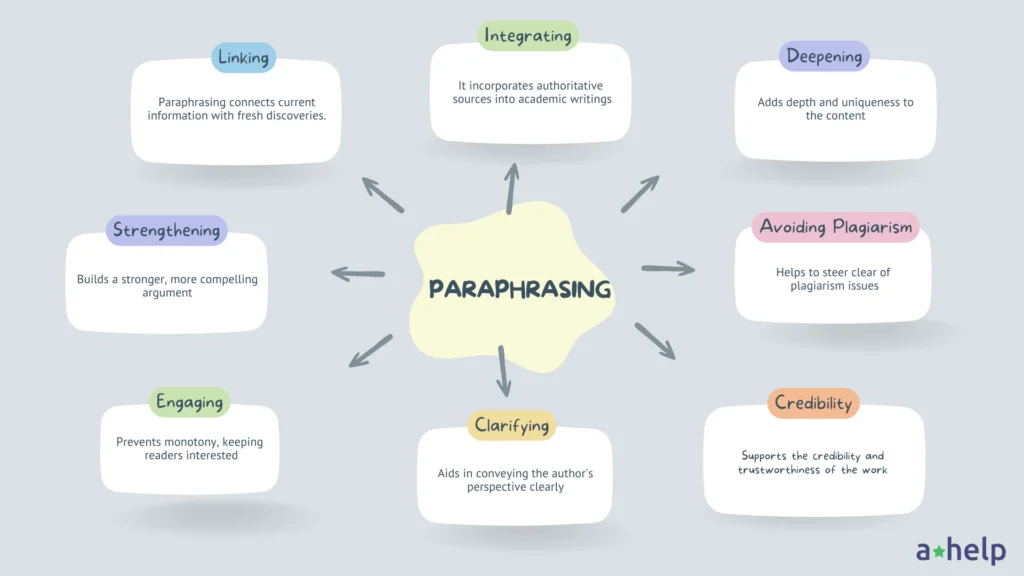
Equally important is the ethical aspect of paraphrasing. Properly rephrased and cited, it maintains the integrity of academic work, distinguishing it from plagiarism and unauthorized use of intellectual property. This ethical practice supports the credibility and trustworthiness of the paper itself.
To sum up, paraphrasing significantly impacts academic papers by promoting understanding, originality, and ethical standards. It demonstrates the author’s capacity to participate in and contribute to academic dialogue, making it a valuable skill in the scholarly community.
What distinguishes effective paraphrasing from simple rewording?
Effective paraphrasing involves a deep understanding of the original material, allowing the paraphraser to convey the same ideas in a completely new way that reflects their voice and style. True paraphrasing demonstrates comprehension and the ability to critically engage with the text, thereby adding value to the academic discourse. In contrast, simple rewording often results in a piece that is too close to the source, lacking originality and failing to fully grasp the underlying concepts.
Can paraphrasing tools ensure academic integrity?
While paraphrasing tools can aid in rephrasing text, they do not guarantee academic integrity on their own. These tools may provide a starting point for rewriting content, but they often lack the nuance and understanding required for true paraphrasing. Academic integrity involves correctly interpreting and crediting the source material, a process that requires human judgment and ethical consideration. Thus, while paraphrasing tools can be helpful, they should be used cautiously, with the final work carefully reviewed and adjusted to ensure it meets academic standards.
How does paraphrasing contribute to the development of academic writing style?
Paraphrasing contributes to the development of academic writing style by enhancing clarity, precision, and personal voice. It encourages deeper engagement with source material, leading to better critical thinking and analytical skills. Through paraphrasing, writers expand their vocabulary and learn to express complex ideas in their own manner, making their arguments more cohesive.
Follow us on Reddit for more insights and updates.
Comments (0)
Welcome to A*Help comments!
We’re all about debate and discussion at A*Help.
We value the diverse opinions of users, so you may find points of view that you don’t agree with. And that’s cool. However, there are certain things we’re not OK with: attempts to manipulate our data in any way, for example, or the posting of discriminative, offensive, hateful, or disparaging material.
Cancel reply
Your email address will not be published. Required fields are marked *
Save my name, email, and website in this browser for the next time I comment.
More from Paraphrasing Guides
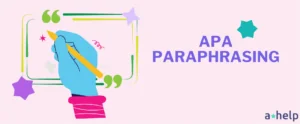
APA Paraphrasing
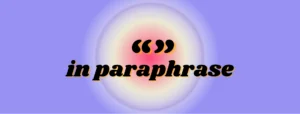
Do Paraphrases Need Quotation Marks
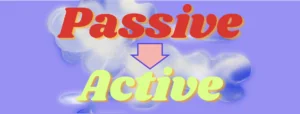
How to Rewrite the Sentence in Active Voice
Remember Me
Is English your native language ? Yes No
What is your profession ? Student Teacher Writer Other
Forgotten Password?
Username or Email
Get access to 120+ AI writing tools to elevate your writing experience.
General Writing
- Paragraph Generator
- Article Rewriter
- Paraphrasing Tool
- Essay Writer
- Essay Extender
- Sentence Expander
- Paragraph Rewriter
- Sentence Generator
- Plagiarism Remover
Assistant Writing
- Grammar Checker
- Online Proofreader
- Text & PDF Summarizer
- Spell Checker
- AI Translator
- Plagiarism Checker
- Punctuation Checker
Creative Writing
- Prompt Generator
- AI Response Generator
- Hashtag Generator
- Slogan Generator
- Tweet (Thread) Generator
- Instagram Caption Generator
- Script Generator
- AI Lyrics Generator
- AI Story Generator
Take advantage of HIX.AI's full capabilities anywhere on the web.
Productivity
Type // to enjoy our AI assistance as you write on Google Docs.
Type // craft compelling emails and personalized replies.
Explore a more powerful Bing sidebar alternative for Chrome.
Find HIX.AI's comprehensive responses among typical search results.
Select any text online to translate, rewrite, summarize, etc.
Social Media
Type // to compose concise yet powerful Twitter posts that trend.
Type // to create engaging captions for your Instagram posts.
Type // to draft interactive Facebook posts that engage your community.
Type // to provide valuable, upvoted answers on Quora.
Type // to craft Reddit posts that resonate with specific communities.
Summarize long YouTube videos with one click.
A leading AI chatbot that can respond with up-to-date information.
Experience unrestricted access to HIX Chat. No login is needed.
Try the advanced power of GPT-4o with less restriction and smoother connection.
Use ChatGPT free without logging in!
Use GPT-4 chatbot free online.
Get step-by-step solutions to any math homework problem.

Explore the most powerful, all-in-one ChatGPT copilot for the web.

Table of Content
The Definition of Paraphrase
Why do you need to paraphrase, paraphrasing, quoting, summarizing: what’s the difference, how to paraphrase, benefits of paraphrasing, example of a paraphrase, how to cite paraphrased text, what is paraphrasing.

We are surrounded by text wherever we go, whether online, in books, text messages, emails, or stores. The text can be anything from stories to opinions, and everything in between. But what happens when you find a text you really like and want to share, but you don’t want to write it exactly as it was said? Enter paraphrasing.
Paraphrasing is a nifty alternative to using quotes, where you copy the exact words and place them in quotation marks. It allows you to rephrase the text in a way that reads more clearly and smoothly while allowing your personal voice to sing through.
But what exactly is paraphrasing and how is it different from quoting or summarizing? Below, we’ll break it all down and include some examples to demonstrate. We’ll also look at the benefits of using a paraphrasing tool when writing. Let’s get into it.
According to the Cambridge Online Dictionary, the definition of paraphrase is to write or say something using different words while maintaining the meaning. Paraphrasing is normally used to make sentences simpler, shorter, or clearer.
When you restate someone else’s ideas, opinions, or thoughts in your own words, you need to cite the source. Even though you’ve paraphrased their words, you’re still using their concepts.
There are various reasons why you’d want or need to paraphrase text. Below are a few of the most common reasons:
- Avoids plagiarism
- Adds credibility and support for claims
- Helps use source material as evidence that’s easy to read while appropriately referencing
- Demonstrates a thorough understanding of the original text
- Offers an alternative to quoting (directly and indirectly)
- Allow you to maintain your voice throughout the text
There are a few distinct differences between paraphrasing, quoting, and summarizing. Below, we’ll explore them in-depth.
Paraphrasing vs Quoting
As you know, paraphrasing is taking someone’s words, understanding the meaning, and rewriting the content in your own words. Quoting, on the other hand, is taking someone’s words exactly as they were said or written and placing them in inverted commas to show you are stating what someone said directly, word for word.
In most cases, it’s better to paraphrase than quote because:
- You can maintain your own voice throughout your article, blog, or paper
- Paraphrasing demonstrates your understanding of the original text
- Quotes cause interruptions in fluidity and reduce readability
That said, there are some cases where quoting is the better option, such as:
- When you want an exact definition
- You’re providing evidence to support an argument
- The author’s style or language is useful to your point
- When analyzing or critiquing a claim
Paraphrasing vs Summarizing
As we mentioned, when you paraphrase text, you’re writing the text in your own words. The text will normally be the same length or slightly shorter than the original.
When you take text that is fairly lengthy and reduce it to just the key points so the end result is considerably shorter, it is called summarizing.
Quoting and paraphrasing are used as tools to present information from specific sources. If the information you’re including is more general, such as using one or two points to demonstrate the overarching argument in an article, it’s called summarizing.
Now that you understand how paraphrasing differs from quoting and summarizing, let’s look at how you can paraphrase text.
- Start by reading the text several times. This is to ensure you thoroughly understand the context of the statement and its meaning.
- Write your own version of what you read without looking at the original text.
- Look at your text and the original text side-by-side. If the two are too similar, make changes to your text while maintaining the meaning.
- Check your spelling (especially names), grammar, and punctuation.
- Cite the source of the original text at the end of your paraphrased text.
Quick tips for paraphrasing
- Begin at a different point than the original text.
- Synonyms are your best friend - use them as much as possible when it makes sense.
- Change the sentence structure - switch up active and passive voice, for example.
- Break up longer sentences into shorter ones, or vice versa.
Paraphrasing with AI
If you still have trouble paraphrasing on your own, opt for paraphrasing tools online.
Utilize the Paraphrasing Tool with HIX.AI
When it comes to paraphrasing text efficiently, you can always count on HIX.AI's paraphrasing tool . Whether you need to paraphrase a sentence , a paragraph , or even an entire article , this tool has the answers.
Powered by GPT-3.5 and GPT-4 , this paraphrasing tool does more than just simple word substitutions. Instead, it understands the context and essence of the original text and generates paraphrases with the same meaning but different expressions in a human-like way.
It also offers several customization options to tailor the output according to your specific needs. You can adjust the level of creativity, select your target audience and tone of voice, and choose different languages for paraphrasing.
In short, it's a convenient and reliable paraphrasing tool that's worth a try.

Discover Other AI Paraphrasing Tools Online
Besides HIX.AI, there are numerous AI platforms that offer paraphrasing services. For example, QuillBot and Wordtune.
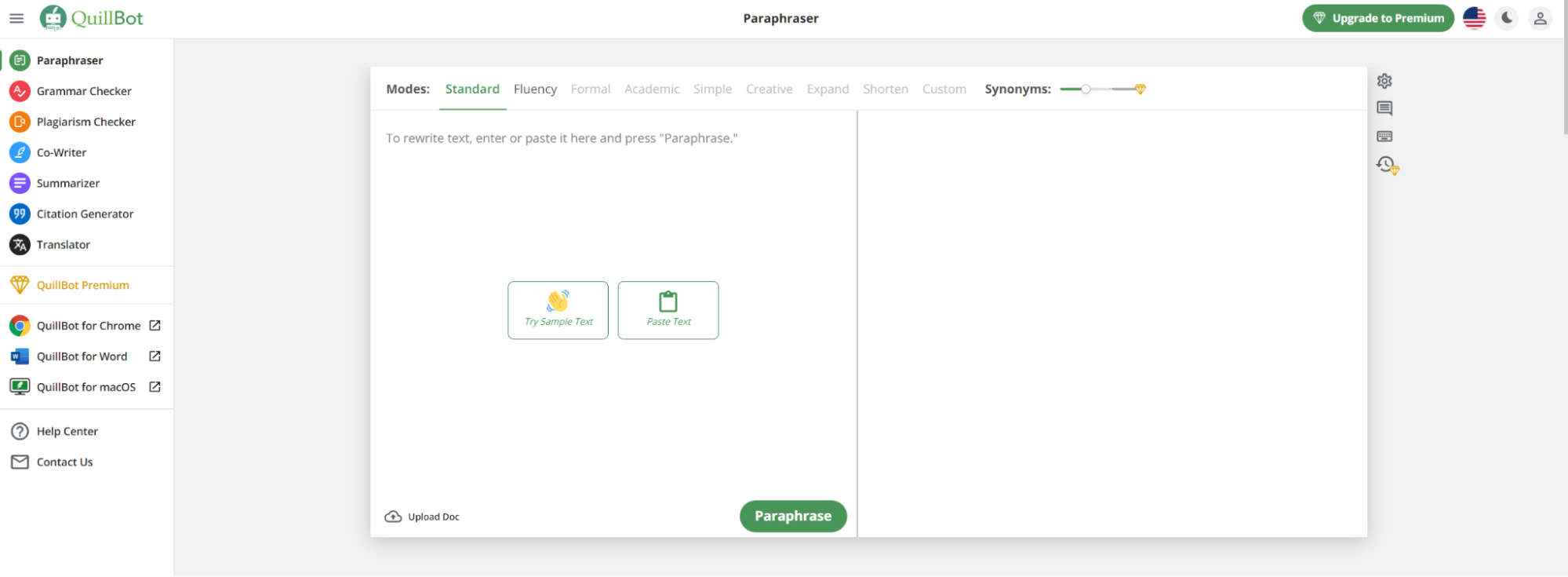
QuillBot is an advanced paraphrasing tool that uses AI to rephrase and restructure sentences, paragraphs, or articles.
It offers various modes such as Standard, Fluency, Creative, and Concise to cater to different writing styles and purposes. QuillBot will also provide multiple alternative rephrased versions, allowing users to choose the one that best fits their needs.
Furthermore, QuillBot offers a browser extension, integrated with platforms like Google Docs to enhance user experience.
Click on to learn more about QuillBot and its alternatives.

Wordtune serves as an AI writing assistant and paraphrasing tool designed to help users improve the quality and clarity of their writing. It provides suggestions for rephrasing sentences, offering alternative word choices, and improving overall readability.
Like HIX.AI and QuillBot, it offers an extension that integrates with platforms like Google Docs to assist users in various writing contexts.
Explore more about Wordtune and its alternatives by clicking here.

HIX Bypass is a powerful paraphraser that utilizes sophisticated AI humanization techniques to rewrite AI text and make it human-like enough to bypass any AI detector. Unlike most rewriting tools, it goes beyond simple word replacement by intelligently altering aspects of the text such as the vocabulary, syntax, and tone.
Since it works with any AI language model out there such as ChatGPT, Bard, GPT-4, and Jasper, it can be relied on to deliver a perfect human score. This means consistently bypassing extremely stringent AI detectors like Originality.ai and GPTZero , just to name a few.
In addition, any rewritten content will not only be unique and plagiarism-free but also contextually accurate to the original text. Another added benefit is that HIX Bypass has multilingual support, which lets you rewrite content in over 50+ native languages.
Rewrite Your Text With HIX Bypass To Bypass AI Detection >>>
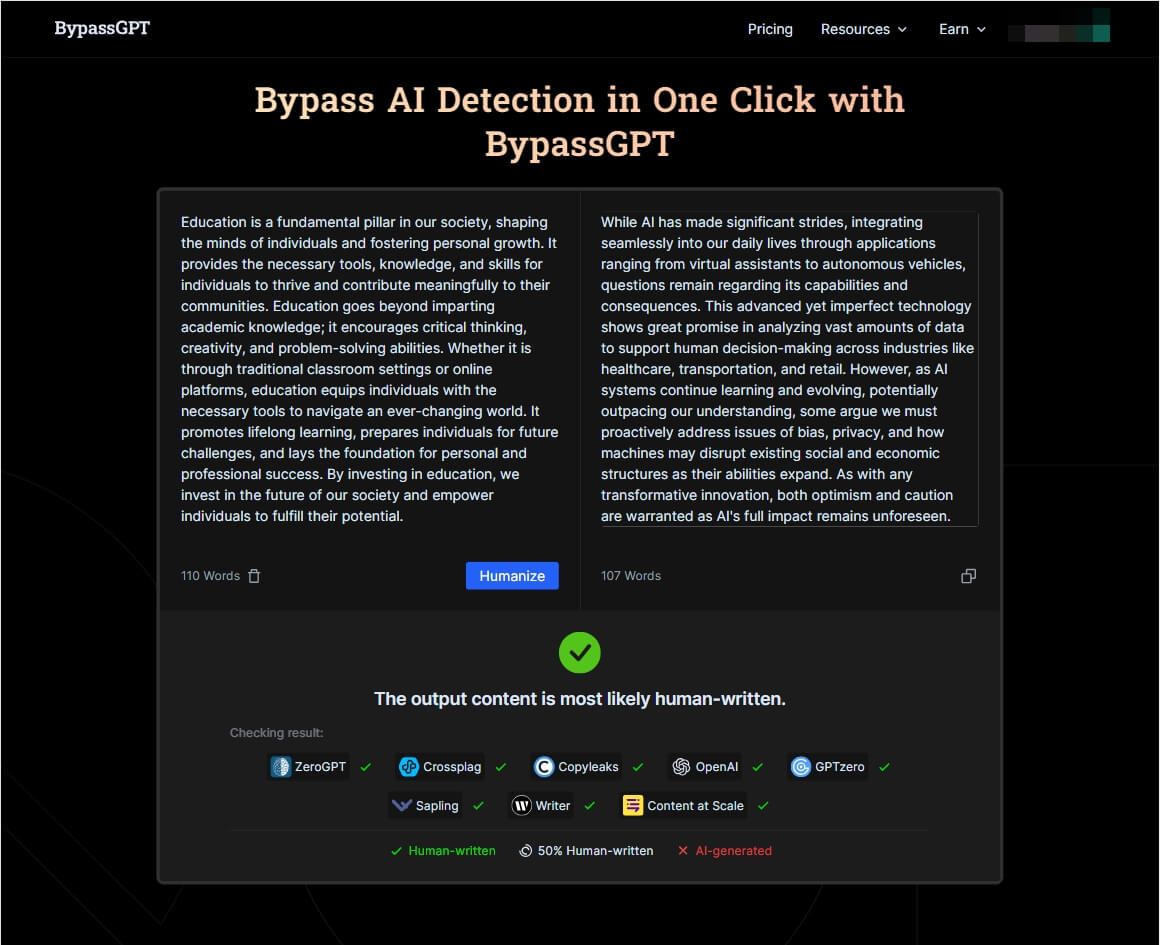
If you want to evade AI detectors like GPTZero and Originality.ai, BypassGPT is another reliable rewriter that can help you humanize any AI text in seconds. It is trained to mimic natural human writing styles effectively, making any AI text sound more authentic while retaining the original meaning.
Whether the content was generated using Bard, ChatGPT, GPT-4, or even Jasper, the output will be entirely plagiarism-free and deliver a 100% human result.
BypassGPT also has three different humanization modes and it even caters to SEO optimization, as you can include keywords to ensure the content ranks highly in SERPs. Plus, the rewritten text is made to sound so human that it can evade spam filters every time.
Paraphrase AI Content Using BypassGPT To Make It Sound Human >>>
There are a few solid benefits to be gained for your learning abilities and writing skills by paraphrasing. These include:
Improved Writing Skills
When you paraphrase text, you need to write paragraphs and passages of text in your own words based on your understanding. This helps you bolster your writing skills, especially when you need to come up with creative synonyms while maintaining the meaning.
Paraphrasing lets you express information or ideas in a short, simple, refreshing way, giving you the opportunity to remove plagiarism while enhancing your writing skills. What better way to build your skills than to express ideas in your own authentic voice.
Increased Comprehension
Put simply, comprehension is the understanding of what has been written and the ability to explain it. As we’ve mentioned, paraphrasing allows you to demonstrate your understanding of the details and concepts in the original text by connecting the points and explaining the meaning.
Paraphrasing is also fantastic to reinforce your reading skills. It assists you by finding supporting details, identifying main concepts, and establishing the author’s voice and keeping true to it. When you rewrite the text in your own words, you need to double-check your comprehension by seeing if the meaning has transferred. This improves your awareness while allowing you to get a better understanding of the text.
Save Energy and Time
Writing content from a blank slate can be challenging and requires a lot of energy and time. You need to do in-depth research, fact-checking, and analysis, which is energy and time-consuming.
A simple solution to this rather painstaking process is to paraphrase the sentence or paragraph that backs up your argument. This allows you to create content without the muss and fuss of research and ideation. It’s a win-win.
Let’s look at an example of paraphrasing text correctly.
Original : “It makes such a difference when there is reciprocity, mutual respect, and a whole lot of love and laughter. When you have experienced genuine love, appreciation, and interest on a weekly basis from someone who calls you a friend, they have set the bar pretty high for anyone else who wants to be called a friend” (Johns, 2023)
Paraphrased : It is truly remarkable how reciprocity, mutual respect, and an abundance of love and laughter can truly transform relationships. When you have had the privilege of experiencing authentic love, appreciation, and sincere interest from someone who considers you a friend on a regular basis, they have established a remarkably high standard for those seeking the title of a true friend (Johns, 2023).
You can easily see that the sentences have been moved around, many synonyms have been used, sentence structure has changed, and personality has been included.
Ensure the following:
- Only include information that’s relevant to the point you’re trying to make.
- If the text is scientific, start the paraphrase with the signal text, “Doctors/scientists/researchers say/believe/found that…”
- Retain keywords or phrases that reinforce the meaning.
- Always structure the sentences differently from the original. Write the text based on your understanding and in a way you would say it.
- Present the information in a different order.
How you cite paraphrased text will be determined by the citation format required (i.e., MLA, APA, Chicago, etc.). In-text citations will normally be MLA or APA and look like this:
MLA : (Johns 187)
APA : (Johns, 2023, p187)
For Chicago footnotes, you will use this format:
Austin Johns, “Understanding boundaries within friendships and relationships,” Journal of Psychology and Sociology 42, no. 16 (2023): 187. https://journalofpsychology.com
So, what does paraphrasing mean in the grand scheme of things? It means that you can use text that others have written while maintaining your style and voice. Quotes can create stilting in your text while summarizing is only appropriate in certain circumstances.
Using a paraphrasing tool is a quick and simple way to ensure you’re paraphrasing correctly while maintaining the meaning and integrity of the original text. Let’s be honest: no one wants to be sourced for a statement that someone else has incorrectly paraphrased. Always ensure the text you’ve created is true to the original.
Related Posts
Does chatgpt plagiarize.
Does ChatGPT plagiarize? We’ll discuss all the relevant information and answer the common question; is ChatGPT plagiarism?
13 Best AI Rewriters to Rewrite Any AI Text
Explore the transformative power of AI in writing. Discover our top picks of the best 13 tools that elevate content creation, AI text rewriting, and formatting
10 Best DeepL Alternatives
This is the perfect guide for you if you have been searching for the best DeepL alternative on the market. These alternatives score well in areas DeepL does not.
Copy.ai Review: Honest Review of Its Pricing, Features and Usability
Is Copy.ai an AI writer you can rely on? Discover the answer in this comprehensive review of Copy.ai, which examines all of its major features.
Related Articles
- How to Rewrite a Sentence
- How to Write an Article?
- How to Write an Email?
- How to Write a Text Message?
- 20 Best ChatGPT Chrome Extensions
- 10 Best Free AI Paragraph Generators
- 10 Best Bio Generators
- 10 Best AI Marketing Tools
- 10 Best Summary Generators You Should Consider
- 10 Best Free AI Content Generators

- TEFL Internship
- TEFL Masters
- Find a TEFL Course
- Special Offers
- Course Providers
- Teach English Abroad
- Find a TEFL Job
- About DoTEFL
- Our Mission
- How DoTEFL Works
Forgotten Password

- What is Paraphrasing? An Overview With Examples
- Learn English
- James Prior
- No Comments
- Updated February 23, 2024
What is paraphrasing? Or should I say what is the definition of paraphrasing? If you want to restate something using different words whilst retaining the same meaning, this is paraphrasing.
In this article, we cover what paraphrasing is, why it’s important, and when you should do it. Plus, some benefits and examples.

Table of Contents
Paraphrase Definition: What is Paraphrasing?
Paraphrasing is when you restate the information from a source using your own words while maintaining the original meaning. It involves expressing the ideas in a different way, often to clarify or simplify the content, without directly quoting the source.
When you paraphrase, you are not only borrowing, clarifying, or expanding on the information but also ensuring that you do all of these actions without plagiarizing the original content. It’s therefore definitely worth learning how to paraphrase if you want to improve your writing skills.
Why is Paraphrasing Important?
Paraphrasing is a valuable skill that allows you to convey information in your unique writing style while still giving credit to someone else’s ideas. It’s important for several reasons, and it serves various functions in both academic and professional writing.
Here are some key reasons why you should paraphrase:
- Paraphrasing allows you to present information from sources in your own words, reducing the risk of plagiarism. Proper in-text citation is still necessary, but paraphrasing demonstrates your understanding and interpretation of the material.
- When you paraphrase, you are required to comprehend the original content fully. You actively engage with the information, helping you better understand complex concepts and ideas. This process of restating the information in your own words showcases your understanding of the subject matter.
- By paraphrasing, you can clarify complex ideas or technical language and convey information in a clearer, shorter, and simpler form. This makes it more accessible to your audience and ensures they grasp the key points. This is particularly important when communicating with readers who may not be familiar with specialized terminology.
- Paraphrasing is valuable when synthesizing information from various sources. It enables you to blend ideas cohesively while maintaining a consistent writing style throughout your work.
- Paraphrasing allows you to inject your unique writing style and voice into the content. It helps you present information in a way that is more aligned with your personal expression and perspective.
- In certain situations where you need to meet specific length requirements for assignments or publications, paraphrasing allows you to convey information more concisely while still preserving the essential meaning.
- Paraphrasing helps maintain a smooth flow and cohesiveness in your writing. It allows you to integrate information seamlessly, avoiding abrupt shifts between your own ideas and those from external sources.
- Depending on your audience, you may need to adapt the language and level of technicality of the information you present. Paraphrasing allows you to tailor the content to suit the needs of your specific readership.
Incorporating paraphrasing into your writing not only showcases your understanding of the material but also enhances the overall quality and originality of your work.
When Should You Paraphrase?
Knowing when to paraphrase is an important skill, especially in academic writing and professional communication. Here are some situations in which you should consider paraphrasing:
- To Avoid Plagiarism: Whenever you want to incorporate information from source material into your own work, but don’t want to use a direct quotation, paraphrasing is necessary to present the ideas in your own words while still acknowledging the original source.
- To Express Understanding: Paraphrasing demonstrates your understanding of a topic by rephrasing the information in a way that shows you have processed and comprehended the material.
- To Simplify Complex Information: If you encounter complex or technical language that may be difficult for your audience to understand, paraphrasing can help you clarify and simplify the information to make it more accessible and digestible.
- To Integrate Multiple Sources: When synthesizing information from multiple sources, paraphrasing allows you to blend the ideas cohesively while maintaining your own voice and perspective.
- To Maintain Consistency in Writing Style: In academic writing or professional writing, paraphrasing can help you maintain a consistent writing style throughout your work. This helps to ensure that all sections flow smoothly and are coherent.
- To Meet Specific Requirements: Some assignments or publications may have specific requirements. This could relate to the number of words or concern the use of direct quotations. In such cases, paraphrasing allows you to meet these requirements while still incorporating relevant information from your sources.
What Are the Benefits of Paraphrasing?
Rewriting information in a clearer, shorter, and simpler form is called paraphrasing, so one of the benefits of paraphrasing is already clear! However, it can also be a useful exercise for other reasons, which are outlined below:
Avoiding Plagiarism
One of the main benefits of paraphrasing is mastering the ability to present information from external sources in a way that is entirely your own. By restructuring the content and expressing it using your words, you create a distinct piece of writing that reflects your comprehension and interpretation of the original material. This not only showcases your academic or professional integrity but also safeguards against unintentional plagiarism.
Paraphrasing is a fundamental skill in academic and professional settings, where originality and proper attribution are highly valued. This is especially true when it comes to writing research papers, where you’ll often need to reference someone else’s ideas with appropriate citations.
When you paraphrase effectively, you communicate to your audience that you respect the intellectual property of others while contributing your unique insights. This ethical approach to information usage enhances your credibility as a writer or researcher and reinforces the integrity of your work.
Enhancing Understanding
When you engage in paraphrasing, you actively participate in the material you are working with. You are forced to consider the ideas presented in the source material. You need to discern the essential concepts, identify key phrases, and decide how best to convey the message in a way that resonates with you.
This active engagement not only aids in understanding the content but also encourages critical thinking as you evaluate and interpret the information from your own standpoint.
By expressing someone else’s ideas in your own words, you deepen your understanding of the content. This process requires you to dissect the original text, grasp its nuances, and then reconstruct it using your language and perspective. In this way, you go beyond mere memorization and truly internalize the information, fostering a more profound comprehension of the subject matter.
Tailoring Information for Your Audience
Paraphrasing empowers you to adapt the language and complexity of the information to suit the needs and understanding of your audience. As you rephrase the content, you have the flexibility to adjust the level of technicality, simplify complex terminology, or tailor the tone to make the information more accessible to your specific readership.
Consider your audience’s background, knowledge level, and interests. Paraphrasing allows you to bridge the gap between the original content and the understanding of your intended audience.
Whether you are communicating with experts in a particular field or a general audience, the ability to paraphrase ensures that the information is conveyed in a way that resonates with and is comprehensible to your readers. This skill not only facilitates effective communication but also demonstrates your awareness of the diverse needs of your audience.
Improves Writing Skills
Paraphrasing helps in the development and refinement of your writing skills. When you actively engage in the process of rephrasing someone else’s ideas, you hone your ability to express concepts in a clear, concise, and coherent manner.
This practice refines your language proficiency, encouraging you to explore different types of sentence structure, experiment with vocabulary, and ultimately develop a more sophisticated and nuanced writing style.
As you paraphrase, you gain a heightened awareness of grammar, syntax, and word choice. This translates into improved writing, helping you construct well-articulated sentences and paragraphs. Moreover, paraphrasing allows you to experiment with different writing tones and adapt your style to suit the context or purpose of your writing, fostering versatility and adaptability in your expression.
Saves Time and Energy
Paraphrasing can significantly reduce the time and energy spent on the writing process. Rather than grappling with the challenge of integrating lengthy direct quotations or struggling to find the perfect synonym, paraphrasing allows you to distill and convey information in a more streamlined way.
This becomes particularly advantageous when faced with strict deadlines. By mastering paraphrasing, you empower yourself to produce well-crafted, original content in a shorter timeframe, allowing you to meet deadlines without compromising the quality of your work.
Examples of Paraphrasing
Here are some examples of paraphrasing:
- Original: “The advancements in technology have revolutionized the way we communicate with each other.”
- Paraphrased: “Technological progress has transformed how we interact and communicate with one another.”
- Original: “Deforestation poses a significant threat to global ecosystems and biodiversity.”
- Paraphrased: “The impact of deforestation represents a substantial danger to ecosystems and the diversity of life on a global scale.”
- Original: “Effective time management is essential for achieving productivity in both professional and personal spheres.”
- Paraphrased: “Efficient management of time is crucial for attaining productivity in both professional and personal aspects of life.”
- Original: “The restaurant offers a diverse selection of culinary choices, ranging from traditional dishes to modern fusion cuisine.”
- Paraphrased: “The restaurant provides a variety of food options, including both traditional and modern fusion dishes.”
- Original: “The novel explores the complexities of human relationships in a rapidly changing society.”
- Paraphrased: “The book delves into the challenges of human connections in a fast-changing world.”
- Original: “Regular exercise is crucial for maintaining optimal physical health and preventing various health issues.”
- Paraphrased: “Exercising regularly is important for keeping your body healthy and avoiding health problems.”
In these examples, you can observe the use of different wording, sentence structure, and synonyms while preserving the core meaning of the original sentences. This is the essence of paraphrasing.
What Are the Differences Between Paraphrasing, Quoting, and Summarizing?
So, we’ve established that successful paraphrasing is a way of rewriting someone else’s words whilst retaining their meaning and still giving credit to the original author’s ideas. But how is this different from quoting and summarizing?
While paraphrasing, quoting, and summarizing are all ways of incorporating information from source material into your own writing, there are key differences between them:
Paraphrasing
- Definition: Paraphrasing involves rephrasing someone else’s ideas or information in your own words while retaining the original meaning.
- Usage: You use paraphrasing when you want to present the information in a way that suits your writing style or when you need to clarify complex ideas.
- Example: Original: “The study found a significant correlation between sleep deprivation and decreased cognitive performance.” Paraphrased: “The research indicated a notable link between lack of sleep and a decline in cognitive function.”
- Definition: Quoting involves directly using the exact words from a source and enclosing them in quotation marks.
- Usage: You use quoting when the original wording is essential, either because of its precision or uniqueness, or when you want to highlight a specific phrase or concept.
- Example: Original: “The author argues, ‘In the absence of clear guidelines, individual judgment becomes paramount in decision-making.'”
The use of quotation marks is vital when quoting.
Summarizing
- Definition: Summarizing involves condensing the main ideas of a source or original passage in your own words, focusing on the most crucial points.
- Usage: You use summarizing when you need to provide a concise overview of a longer piece of text or when you want to capture the key points without including all the details.
- Example: Original: A lengthy article discussing various factors influencing climate change. Summary: “The article outlines key factors contributing to climate change, including human activities and natural processes.”
In summary, paraphrasing is about expressing someone else’s ideas in your own words, quoting involves directly using the original words, and summarizing is about condensing the main points of a source.
Each technique serves different purposes in writing and should be used based on your specific goals and the nature of the information you are incorporating. If you want to level up your writing skills you need to be able to do all three of these.
Conclusion (In Our Own Words)
Paraphrasing is a valuable skill with numerous benefits. It helps you understand complex ideas, refine your writing style, and demonstrate ethical information use. It also allows you to tailor information for different audiences and can save time in academic and professional writing.
So, if you want to incorporate information from external sources into your writing in a way that is clear, concise, and respectful of the original author’s work, it’s worth mastering the art of paraphrasing.
- Recent Posts
- How to Reduce Eye Strain & Protect Your Eyes in Online Classes - June 24, 2024
- 113+ American Slang Words & Phrases With Examples - May 29, 2024
- 11 Best Business English Courses Online - May 29, 2024
More from DoTEFL

How to Write a Conclusion That Leaves a Lasting Impression
- Updated July 24, 2023

15 Things I Wish I Knew Before Teaching English in China
- Kaitlin Silverman
- Updated November 2, 2023

15 Companies Where You Can Teach English Online With No Degree
- Updated January 16, 2024

English for Specific Purposes: What is it & How to Teach it?
- Updated May 27, 2024

How to Teach Business English
- Updated May 29, 2024

“It Is How It Is” Meaning, Use & Examples
- Updated October 19, 2023
- The global TEFL course directory.
- AI in action
- AI in the enterprise
- Humans of AI
Words at work
- Inside Writer
- Content strategy
- Inspiration
– 7 min read
How to paraphrase (including examples)

Jessica Malnik

Paraphrasing has gotten a bad reputation due to its association with plagiarism . However, when used correctly, paraphrasing has the potential to elevate your writing and give you a better understanding of the research.
In this post, we’ll discuss what paraphrasing is, why we do it, and 6 steps to walk you through the process. We’ll also share what not to do with paraphrasing, along with some examples.
Paraphrasing definition and rules
Paraphrasing is simply a way of summarizing someone else’s content in your own words. When you paraphrase, you keep the meaning or intent of the original work without copying it word for word. However, paraphrasing can quickly become a form of plagiarism if done incorrectly. This is why it’s crucial to follow the rules of paraphrasing.
When borrowing the ideas from someone else’s content, there’s one important rule to follow: you must correctly cite your source. This can be done in a number of ways depending on the style guide you use.
Source citing is different for MLA and APA formatting and style guides. You’ll need to familiarize yourself with the citation formats for whichever one you follow. However, in some cases, simply hyperlinking the source will be sufficient.
Why do we paraphrase?
There are a number of reasons that professional writers and students alike choose to paraphrase content. Here are just a few of the common reasons that a writer would choose to paraphrase instead of including a quote or summarization.
Process information better
One benefit of paraphrasing is that it helps you process the author’s ideas. When you have to rewrite the material in your own words, it makes you really think about the context and how it fits into your piece. If you want to really understand the material you’re citing, try rewriting it. If you were to quote the same information, you would miss out on the benefit of analyzing the source material.
For example, if you are writing a research paper all about Shakespeare’s influence on modern-day literature, you don’t want to just use a ton of direct quotes, instead by paraphrasing original passages, it can help you comprehend and analyze the material better.
Improve your credibility with readers
You can also improve your credibility by association with the sources you decide to paraphrase.
When you rewrite the material, you create a connection between your content and the knowledge from the source.
Your audience will have a better understanding of the direction of your piece if you’re paraphrasing a reputable source with established authority on the subject.
Present data in an interesting way
If you’re referencing a data-heavy webpage or study, then paraphrasing is an engaging way to present the information in your own writing style.
This allows you to tell a story with the source material instead of simply citing numbers or graphs.
Show that you understand the source
Another reason for paraphrasing that’s particularly important in academic writing is to demonstrate that you’ve read and comprehended the source material.
For example, if all of you are doing is copying and pasting the original words of a textbook, you aren’t really learning anything new. When you summarize the material in your own words, it helps you to understand the material faster.
How to paraphrase in 6 steps
Paraphrasing is simple when you break it down into a series of steps.
Here are the 6 steps you can use to paraphrase your sources:
1. Choose a reputable source
First, you need to pick a credible source to paraphrase. A credible source will likely have ideas and concepts that are worth repeating. Be sure to research the author’s name and publisher’s credentials and endorsements (if applicable).
You’ll also want to check the date of the publication as well to make sure it’s current enough to include in your writing.

2. Read and re-read the source material
You want to be sure that you understand the context and information in the original source before you can begin to rework it into your own words. Read through it as many times as you need so you’re sure that you grasp the meaning.
3. Take some notes
Once you have an understanding of the passage, you’ll want to jot down your initial thoughts.
What are the key concepts in the source material?
What are the most interesting parts?
For this part, it helps to break up the content into different sections. This step will give you a sort of mini-outline before you proceed with rephrasing the material.
4. Write a rough draft
Write your version of the content without looking at the original source material. This part is important.
With the source hidden, you’ll be less likely to pull phrasing and structure from the original. You are welcome to reference your notes, though. This will help you write the content in your own words without leaning on the source but still hit the key points you want to cover.
5. Compare and revise
Once you have your initial draft written, you should look at it side by side with the original source. Adjust as needed to ensure your version is written in a way that’s unique to your voice.
This is a good time to break out a thesaurus if you notice you have used too many of the same words as the original source.
6. Cite your source
Whether you use MLA, APA, Chicago, or another style guide, now is the time to give proper credit to the original author or source. When posting content online, you may only need to hyperlink to the original source.
Keep in mind that the paraphrased text will not change depending on the citation style that you follow. It will just change how it’s cited.
What you shouldn’t do when paraphrasing
Now that you understand the process of paraphrasing and can follow the steps, it’s important that you know what to avoid. When paraphrasing, here are a few things to keep in mind:
1. Do NOT write while you’re still researching
You might be tempted to start writing during the research phase. However, this sets you up to miss information or restate the copy too closely to the source material. Be sure to do your research first, take notes, and then start writing the piece.
2. Do NOT skip the citations
When you pull a small amount of information from a paraphrased source, you may think you don’t need to cite it. However, any idea or copy that’s taken from another source is considered plagiarism if you don’t give it credit, even if it is only a little bit of information.
Paraphrasing examples
Here are some examples to help you understand what paraphrasing looks like when done correctly and incorrectly
Excerpt from LinkedIn’s Official Blog:
“When reaching out to connect with someone, share a personalized message telling the person why you would like to connect. If it’s someone you haven’t been in touch with in a while, mention a detail to jog that person’s memory for how you met, reinforce a mutual interest and kickstart a conversation.”
Here’s another example. This one is from the U.S. Department of Education:
“ The U.S. Department of Education does not accredit educational institutions and/or programs. However, the Department provides oversight over the postsecondary accreditation system through its review of all federally-recognized accrediting agencies. The Department holds accrediting agencies accountable by ensuring that they enforce their accreditation standards effectively. ”
Here’s one more example to show you how to paraphrase using a quote from Mark Twain as the source material:
“Twenty years from now you will be more disappointed by the things that you didn’t do than by the ones you did do. So, throw off the bowlines, sail away from safe harbor, catch the trade winds in your sails. Explore, Dream, Discover.”
Paraphrasing can be a beneficial tool for any writer. It can give you credibility and a deeper understanding of the topic. However, to successfully use paraphrasing, you must be careful to properly cite your sources and effectively put the material into your own words each time.
--> “A wide screen just makes a bad film twice as bad.” -->
May Habib CEO, Writer.com
Here’s what else you should know about Ascending.
More resources
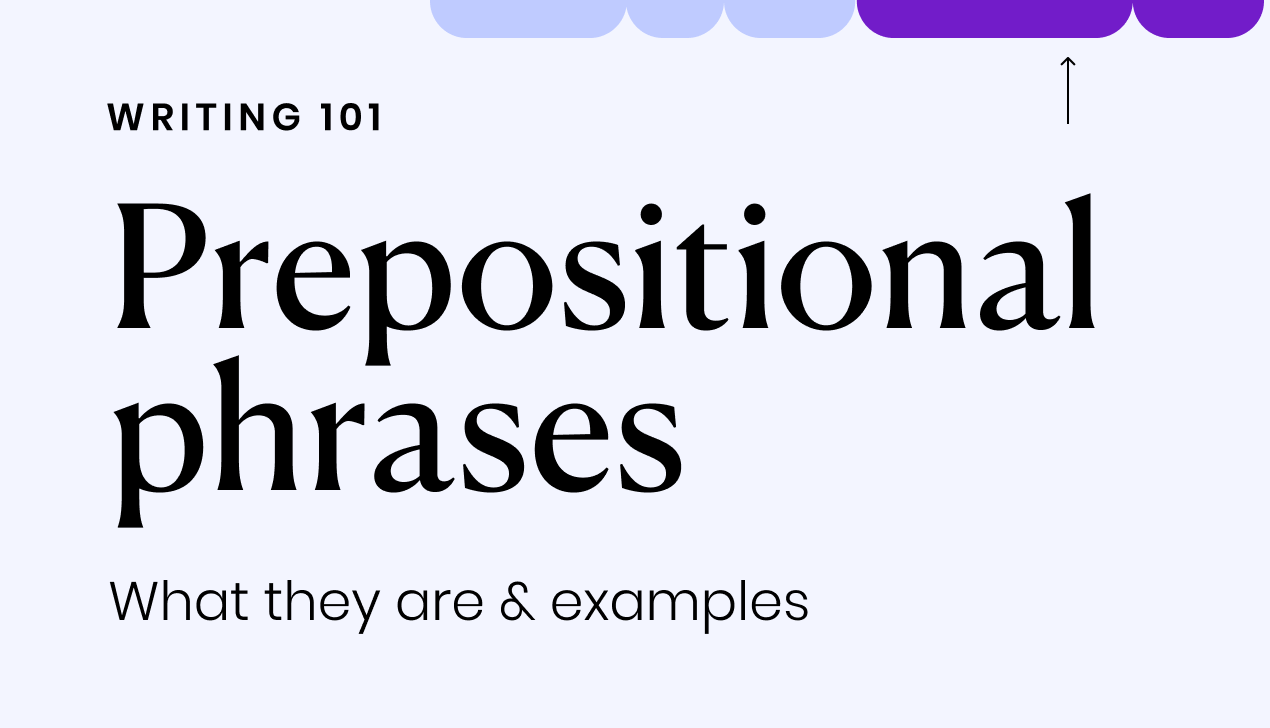
– 4 min read
Prepositional phrases: what they are and examples

– 8 min read
Mailchimp style guide: the anatomy of a perfect content style guide

Devon Delfino
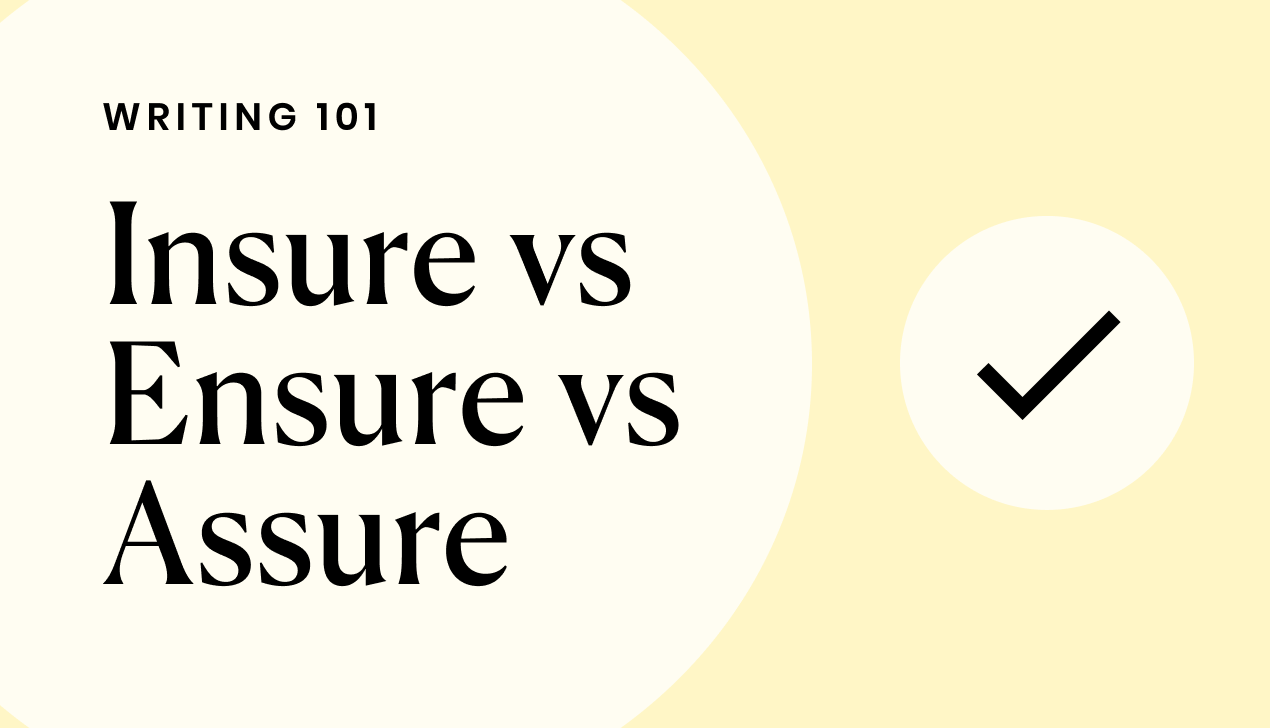
– 5 min read
Insure Vs. Ensure Vs. Assure: Which One Is Right?

Holly Stanley

Paraphrasing: 3 Things You Need to Know (What, How and Why?)
Paraphrasing is an essential writing tool for conveying meaning of core concepts and ideas while avoiding plagiarism. In this article, we’ll cover exactly what paraphrasing is and isn’t, the five step approach for effective paraphrasing and finally, the importance of paraphrasing beyond issues of plagiarism.
.jpg)
What is Paraphrasing?
Paraphrasing is rewording another’s written or spoken words into your own words. This is done by presenting the meaning of the original statement with new words and an altered structure. For example, the above point could be paraphrased to: “Paraphrasing means to share another’s ideas in your own words, keeping the original meaning intact by simply changing the words used or structure involved”. The original point remains, but the wording and sentence structure has changed.
The focus is to convey the meaning of the original idea using your own words. This writing technique is usually used for a short individual passage or idea, and is not to be confused with summarising. A paraphrase will often be similar in length to the original statement, and will focus on the core points of that idea. In contrast, summaries usually involve synthesising a wide range of information to share the core theme, or results of a piece of work.
How to Paraphrase
There’s a five step approach to paraphrasing effectively. First, read the material carefully to extract meaning. It’s important to develop an understanding of the points being made in order to effectively convey this meaning to another. Second, note down the key concepts. What have you understood from the passage? What key points would you like someone else to understand? Third, attempt to paraphrase this information without looking at the original. You can do this using a range of methods:
- Use synonyms to keep some of the original content, without directly using the same words. “Teachers” could be replaced by “Educators”, or “Students” could become “Undergraduates”. This depends on the content, and it’s important to make sure you still convey the core points well.
- Rearrange the content by switching the order of certain phrases or sentences. This might involve switching from an active to a passive voice. Although it's best to use the active voice, this is an ideal way to begin paraphrasing content, giving you a starting point to work on. You can continue editing the first paraphrase to ensure it’s written in a clear and concise way.
- Utilise digital tools to get you started. In genei’s notepad, you can paraphrase your notes with the click of a button, giving you new words to work with. This is ideal because you can easily work with the notes made from your readings, and minimise your workflow to one space.
Fourth, compare your paraphrased version to the original. Check if words, sentences or phrases are too similar and make edits. You can also ensure your paraphrase is effective by noting down the core ideas in your paraphrase. Do these match those originally noted from the source? Finally, be sure to cite the source! You must still acknowledge that you have paraphrased someone else’s ideas.
The Importance of Paraphrasing
Paraphrasing is an important academic skill for avoiding plagiarism . However, this isn’t the only reason paraphrasing can be important. The process of paraphrasing involves actively engaging with the material you want to rework. This can improve your own knowledge of the idea you’re working with, which can be more effective for long term understanding in comparison to simply memorising facts. Likewise, the ability to paraphrase well, is evidence that you understand the content and core ideas involved.
Beyond academia, paraphrasing still proves to be essential. This technique can act as a bridge and communication tool for sharing valuable information with a non-specialist audience. Original sources of information can be hard to digest if you’re not familiar with the subject area, however, sometimes this information still needs to be communicated. Paraphrasing allows you to tailor ideas to a particular audience, making it accessible, while still retaining the core message. For example, being able to convey important business information to a client, would require certain professional documents and plans to be paraphrased for clearer communication.

Do you want to achieve more with your time?
98% of users say genei saves them time and helps them work more productively. Why don’t you join them?
About genei
genei is an AI-powered research tool built to help make the work and research process more efficient. Our studies show genei can help improve reading speeds by up to 70%! Revolutionise your research process.
Articles you may like:

Find out how genei can benefit you
What Is Paraphrasing and Why Do We Do It?

To put it simply: paraphrasing condenses information or the main points taken from another source and expresses or interprets it in your own words and writing style. Learning the art of paraphrasing involves comprehending, synthesizing, and conveying information in an original format. This technique is often used in college coursework such as research papers where plagiarism is strictly prohibited, and direct quotations should be kept to a minimum.
Paraphrasing is a valuable technique that you can use in many forms of writing and speaking, such as presentations, speeches, blogs, articles, and any other forms of communication where original ideas are shared. In today’s world, there are even paraphrasing tools such as Quillbot AI and Paraphraser.io leveraging technology and AI to help writers paraphrase while avoiding plagiarism.
Read on to learn all about what paraphrasing is, why it’s important and how to put this valuable rewording technique to use.
Fast Facts About Paraphrasing
- Paraphrasing is a valuable skill for speaking and writing original content in your own words.
- When paraphrasing, it is important to keep the facts and express the original idea without copying the original content.
- A common goal of paraphrasing is to distill information concisely, creating more clarity, relevance, and/or impact for the receiver of information.
Are Paraphrasing and Plagiarism the Same?
There is a distinct difference between paraphrasing and plagiarism, and a lot of it is based on intention. If the paraphrased wording or sentence structure looks too close to the original passage, then one will assume that the writer is passing it off as their own work.
Unfortunately, intentionally plagiarizing can lead to failing a class, job loss, and even a damaged reputation or career.
A direct quotation is typically permitted if a text citation acknowledges the source. APA in-text citation style guidelines use the author's last name and year of publication when you refer to, paraphrase, summarize or use quotation marks for information from the direct source material.
Plagiarism is considered intellectual theft and is strictly prohibited in academia and for legal reasons. Copyright is a set of exclusive rights given to a creator of original works. Plagiarism often violates these rights by copying and distributing the work. Copyright infringement can still occur even if the original author is acknowledged.
One instance where plagiarism doesn’t apply is related to commonly known facts such as basic information or historical dates. For example, you would not need to cite the encyclopedia if you wrote that “The United States officially adopted the Constitution in 1788” or that “There are eight planets in the solar system, nine if you count Pluto.”
How To Use Paraphrasing in Your Own Writing
Paraphrasing is a technique used to combat plagiarism, keeping original ideas intact but rephrasing information in your own words and original perspectives. Effective paraphrasing involves reading or listening to the original content until you fully understand it and taking notes on the main points.
Next, you write down your version of the core concepts without looking at the original passage. Then, make sure that you restate it in a way that the original author has implied and not how you want them to imply it. Lastly, compare and edit your work to ensure it doesn’t resemble the original, and cite your sources when necessary.
Other strategies to keep in mind when paraphrasing are changing the sentence structure or form, using synonyms, changing active to passive voice, changing clauses to phrases, and starting the sentence or paragraph differently from the original content.
Suppose you don’t think you can accurately paraphrase a passage concisely. Instead, you can directly quote exact words from the original author and identify the original source of the material with their name or text citation to avoid plagiarizing, as explained previously.
Does Paraphrasing Improve Your Communication Skills?
Practicing paraphrasing as a skill can drastically improve your communication and writing skills since it involves the mental practice of active listening , learning new information or ideas, reflecting upon them, and pulling out the key concepts in your own words.
The process of paraphrasing enables you to truly learn a subject before you can confidently write or communicate that idea . Paraphrasing is a powerful way to further understand a subject or idea for both the writer and reader or speaker and listener.
Active listening and understanding are key components of efficient communication. Using this skill alleviates misunderstandings and prevents conflict.
What Are Some Examples of Paraphrasing?
In daily life, an example situation involving paraphrasing could look like sitting down at your favorite restaurant and ordering from the menu. You tell the server each item you’d like to order. They repeat it back to you for confirmation. If they misunderstand anything you said, you would interject to correct them.
They will usually repeat it back a second time to ensure they have the correct order. They may not use the exact words you used but provide a restatement of your order. This process confirms the chef prepares the correct meals for you.
Other paraphrasing examples in writing include:
- Original: He has many old clothes and furniture to donate or throw away.
- Paraphrase: He needs to get rid of a lot of junk.
- Original: Polar bears are nearly undetectable by infrared cameras. Thermal cameras detect the heat lost by a subject as infrared, but polar bears are experts at conserving heat.
- Paraphrase: Because thermal cameras detect infrared heat given off by a subject, polar bears are undetectable due to their unique heat conservation abilities.
- Original: Although most people learn from experienced sailors, it's possible to teach yourself in a controlled environment. The biggest concern when teaching yourself to sail is safety, as going out on the water alone and inexperienced can be perilous.
- Paraphrase: In a safe and controlled environment, you can teach yourself to sail, despite trained sailors giving instruction in most cases. Going out on the water alone can be dangerous for a beginner.
Is Paraphrasing Ever a Bad Thing?
Paraphrasing shouldn’t be used when it does not accurately reflect the ideas of the original source. Poor paraphrasing can look like only switching out a few words or failing to acknowledge the source or author with direct quotations or in-text citations when necessary. Ultimately, incorrect paraphrasing could result in a costly mistake.
Paraphrasing is unnecessary when sharing a famous speech or lines from a book. In this case, you would use direct quotations. For example, you wouldn’t paraphrase Martin Luther King Jr’s “I have a dream” speech. Therefore, paraphrasing would likely reduce the impact.
Why Do We Paraphrase?
Paraphrasing leaves out unnecessary info.
The art of paraphrasing allows a writer or speaker to succinctly rephrase statements or ideas, focusing on the most critical aspects of the topic or idea. It helps to create clarity by leaving out any unnecessary information.
Paraphrasing allows the speaker or writer to reframe it in a more relevant way to their audience. Sometimes you would only take pieces of the original idea that relate to what you want to express.
Paraphrasing Simplifies Your Communication
Putting paraphrasing into practice regularly helps you focus on the key concepts or crucial information and communicate that, whether it’s in a professional conversation, giving a speech, or writing your paper for a college course. It allows you to hold people’s attention by providing concise information and impacting your audience.
Paraphrasing Puts an Original Spin on Information
Paraphrasing is a great technique to use if the original format of the information is not unique or impactful. It is an opportunity to rephrase it in a more compelling and digestible way, putting an original spin on an idea.
Improving this skill also allows you to keep your authentic communication style even if you’re sharing someone else's ideas.
Using Paraphrasing as a Listener
Using paraphrasing in active listening .
A critical step in the paraphrasing process is active listening. To succinctly communicate an idea or concept in an original way, you must actively listen to extract the main points before you can accurately paraphrase. Paraphrasing what someone said shows the speaker you are actively listening and retaining the information.
How To Paraphrase in Conversation
When in conversation with others, paraphrasing is a great way to ensure both parties are on the same page in understanding the exchange of information. You can practice paraphrasing by actively listening to what someone is saying, condensing the information into a shorter format using your own words, and repeating it for confirmation.
New, Original Words
Paraphrasing is an effective technique for learning, communicating, and restating ideas and concepts in an original format. Improving your paraphrasing skills will help ensure your research paper, presentation, and professional or personal communication is clear, relevant, impactful, and plagiarism free. Just remember to cite any original sources where appropriate.
Did you know you can communicate with clarity, conciseness, and confidence using Poised, the AI communication coach?
Poised gives you real-time feedback on everything from words most spoken to filler words, confidence, energy, empathy, and more. The best part? No one else knows you’re using it. Learn more today .
APA Citation Style Guide | University of South Carolina
Active Listening Definition, Skills, and Examples | The Balance Careers
Quoting and Paraphrasing – The Writing Center | UW–Madison
Read More Posts

Managing Expectations and Setting Reasonable Goals

Krisp vs. Poised: A Side-by-Side Comparison

How To Incorporate the Challenger Sales Model

How To Run a Stand-Up Meeting as a Product Manager

Passive Voice vs. Active Voice: What's the Difference?

Public Speaking Tips for Effective Communication
Say it like you mean it..
Improve your commmunication skills with Poised

Paraphrasing - an overview
Paraphrasing is ..., what are the differences between quoting, paraphrasing & summarising .
- Why Paraphrase?
- Paraphrasing versus Plagiarism
- The Do's and Don'ts of Paraphrasing
- Paraphrasing - examples
- Further Information

Paraphrasing is 'a restating of someone else’s thoughts or ideas in your own words. You must always cite your source when paraphrasing’ (Pears & Shields, 2019 p. 245).
(Solas English, 2017)
- Quoting means using someone else’s exact words and putting them in quotation marks..
- Paraphrasing means expressing someone else’s ideas in your own voice, while keeping the same essential meaning.
- Summarising means taking a long passage of text from someone else and condensing the main ideas in your own words.
Watch the video below for more information.
(UNC Writing Center, 2019)
- Next: Why Paraphrase? >>
- Last Updated: Apr 10, 2024 3:42 PM
- URL: https://lit.libguides.com/paraphrasing
The Library, Technological University of the Shannon: Midwest

- Get started
Paraphrasing Explained: Definition, Techniques, and Examples for Effective Writing

Table of contents
While researching for your article or essay, you might have encountered a sentence or a paragraph that's so intriguing that you thought you must include it in your content! But you can't use those exact words, right?
Well, paraphrasing is the way to do that. However, the idea is not to steal someone's content but to capitalize on it by drafting a much better version while adding your input and research.
You can always have your own piece written and make it more intuitive to your audience while using the original one as a reference.
'It's easier said than done'
'Although the idea sounds like a good one in theory, it will still be difficult to actually execute it.'
Both the above sentences have similar meanings, but they appear different. That's a classic example of paraphrasing.
But how do you paraphrase while keeping the essence of the original sentence intact and still not plagiarising?
That calls for some tips and tricks! And here, we have got you covered.
In this blog, we will explain what is paraphrasing, why you might need to paraphrase, how to paraphrase, and the difference between paraphrasing and summarizing.
Let's dive in.
Table Of Contents
What is paraphrasing.
Paraphrasing is the process of restructuring or tweaking a paragraph so that it represents the same meaning or idea from the original statement but with different sentence construction, choice of words, formats, or, possibly, tone or voice.
It means making the meaning clearer, especially in a shorter and simpler form, along with your thoughts/comments. In addition to borrowing, clarifying, or expanding on information and your comments, paraphrasing is doing all the above-stated actions without plagiarizing the information.
Why do people paraphrase?
There are several reasons why people paraphrase. Following are some of the reasons for paraphrasing.
- Paraphrasing helps avoid plagiarism.
- It also provides support for claims or adds credibility to the writing.
- It demonstrates your understanding and provides an alternative method to using indirect and direct quotes in your own words (referenced) infrequently.
- Paraphrasing in academic research helps utilize source material for writing essays, providing evidence that the essay is appropriately referenced.
- Paraphrasing in writing helps you ensure that you use sources to communicate something important to your readers.
What is paraphrasing plagiarism?
Plagiarism is stealing someone else’s ideas without acknowledgment. Plagiarism can come in several forms: global, verbatim, patchwork, paraphrase, and self-plagiarism. However, apart from global plagiarism, other types of plagiarism are often accidental.
Although paraphrasing is accepted , rephrasing sentences or paraphrasing someone else’s idea without citing or acknowledging is considered paraphrasing plagiarism. Even when translating someone else’s words, if the translated text from another language is not cited, this is also a type of paraphrasing plagiarism.
How to paraphrase?
When it comes to paraphrasing, you can either do it manually or use an AI-powered tool like Writesonic to rephrase your content. While we will guide you through both processes, here is how to paraphrase with Writesonic Content Rephraser.
Check out the steps below:
- Log in to Writesonic or sign up (if you haven't already done so!).
- Search for Content Rephrase and select the tool from the results.

- On the Content Rephrase v2 window, put the text in the Content box.
- Select the Words Length from the drop-down for the rephrased content.
- Select your Brand Voice / Tone of Voice from the list.
- Finally, hit the Generate button.

If you are not satisfied with the output received, simply click on the Regenerate button.

If you want, you can also paraphrase manually without using any tool. Here is a guide on different techniques to paraphrase effectively,
What is the difference between summarizing and paraphrasing?
Summarizing is a concise statement that briefs the contents of the passage. On the other hand, paraphrasing is just rewriting sentences using your own words. In fact, there is more than one difference between summarizing and paraphrasing.
Check out the comparison chart to learn the differences between summarizing and paraphrasing, besides their definition.
Definition | Summarizing refers to the concise statements and key points of the original work or piece | Paraphrasing refers to restating the texts or passages in your own words based on your comprehension |
Underlines | The central idea of the original sentence | Simplifies and clarifies the original sentence or texts |
Length of the text | It is shorter when compared with the original writing or piece | It is almost the same length as the original statement |
Objective | To express the general concept of the piece or work briefly using a precise language | To break down the complex words into more comprehensible and simple words |
Uses | When you want to provide a quick review of the topic or piece | When you want to present your point of view in different words while incorporating the authors’ ideas as well |
Doesn’t include | Unnecessary information, details, examples, and reader’s interpretations | Problematic language, lengthy quotes, same words from the original passage or phrases from the original sentence. |
Top 5 tips and tricks to follow while paraphrasing
Following are 5 digestible paraphrasing tips you can incorporate when paraphrasing your sentences.
Identify the important parts
You can't paraphrase until you understand the meaning! In fact, paraphrasing demonstrates your understanding of the original material. Thus, read the original content until you get enough ideas to explain it in your own words.
Once you have the original concept, reduce it to the key points, and don't focus on the sentence structures at the start. Another way to rewrite or reword the source without losing your key points is to use a paraphrasing tool .
Change up the words
Change the words using synonyms while noting down the concepts or key points. However, if you face writer's block and can’t find the right words, which can make your content incompetent, use rewording tools .
AI rewording tools can come up with synonyms, organize your phrases, and enhance your sentence structure. Moreover, an AI wording tool ensures the content is unique, original, and plagiarism-free.
Make sure meaning is preserved
Although paraphrasing requires rewording and changing the words, ensure that the same meaning must be maintained along with the ideas. In addition to that, keep your word choices lucid and simple to convey the relevant information from the source without sticking too close to the original source.
One way to keep your writing consistent when paraphrasing is by using paraphrasing tools. The AI tool can alter the sentence structure while maintaining the original meaning.
Double-check for grammar and punctuation
When paraphrasing, double-check and compare the paraphrased copy with the original passage. Make adjustments to ensure it’s completely rewritten. Also, make sure that the grammar and punctuation are correct.
Double-checking your work for grammar and punctuation by reviewing it more than once improves its quality. Paragraph rewriters use AI for paraphrasing, which can tweak the tonality and narrative, ensure a grammar check, and make the content concise and conceivable.
Use an online paraphrasing tool like Writesonic
As stated previously in the article, using a paraphrasing tool is the fastest way to paraphrase your sources without plagiarizing them. One such creative AI writing tool that assists you with paraphrasing is Writesonic .
Writesonic is trained on billions of parameters. It refines the grammar, spelling, and style to generate original, paraphrased content. In addition to that, Writesonic generates unique and plagiarism-free content that resonates with the target audience with just one click.
With AI chatbots like ChatGPT by Open AI and ChatSonic by Writesonic taking away all the limelight, they can also be used effectively for paraphrasing text.
Different strategies for paraphrasing
Even though there are AI paraphrasing tools to make the work easier, the following are different strategies you can use to paraphrase your sentence.
Understanding the main ideas
One of the strategies for successful paraphrasing is understanding the source's main idea and writing style. When you understand the idea behind the sentence, it becomes easier to explain in your own words.
After taking note of the important nouns and verbs, see which synonyms might be appropriate to replace. You can use a synonym that expresses the same meaning for the key concepts or points in the original sentence.
Making connections
When you use synonyms, it is given that the structure may also need a little changing. So, instead of just swapping a single word, make appropriate changes around the words to make sense of the sentence. Here, your paraphrasing skills come into play.
Here is an example of paraphrasing: “ According to scientists, there is another method to achieve a pollution-free environment.”
The paraphrased content would say something like - “Scientists found an alternate way to attain a pollution-free environment.”
In the above sentence, the adjective ‘according to’ is swapped with the verb ‘found’ along with other necessary changes. These changes are made to maintain a harmonious connection between the words and to make the sentence sensible while retaining its meaning and avoiding plagiarism.
Focusing on syntax
The syntax is the arrangement of words in a specific order written in well-formed phrases or sentences. While paraphrasing is about restating or rewording, ensure to focus on the well-structured and grammatically correct sentences by making appropriate connections or paraphrases.
Benefits of paraphrasing
Paraphrasing has some benefits that you can reap in aspects of your writing skills and learning abilities.
Improves writing skills
Paraphrasing requires you to change the passages in your own words, which may help refurbish your writing skills. Rewriting or paraphrasing is essential in writing essays or research papers.
Paraphrasing allows you to express ideas or information with a fresh set of words to make the same thing sound more interesting or even simpler. You can see paraphrasing as an opportunity to enhance your writing skills without plagiarizing someone else’s work. This includes rewriting and expressing the ideas in your own voice.
Increases comprehension
Comprehension is understanding the written material and explaining what is read. At the same time, paraphrasing demonstrates your understanding of the complex details from the source and your ability to explain the connections between main points. Therefore, it's obvious that you can comprehend a text better when you paraphrase it.
Moreover, it was found that paraphrasing for comprehension is an excellent tool for reinforcing reading skills. It can assist by identifying the main ideas, finding supporting details, and identifying the original author's voice.
So when you rewrite the sentence in your own words, you can double-check your comprehension. This helps improve your awareness and allows you to gain a better understanding of the content, and allows you to write better.
Enhances understanding
To paraphrase words or phrases, you must extract their meaning by reading the material again and again and fully understanding the context. This allows the reader to understand the original statement more clearly by adding more clarity to it. So, when you paraphrase the original phrase, you articulate your thoughts and ideas more clearly and come up with new insights and perspectives on the topic.
Saves time & energy
Creating content from scratch is difficult and requires much time and energy. It requires you to do proper research, which is both time and energy-consuming.
An easy solution to the painstaking process is paraphrasing your sentence with appropriate citations. This will allow you to create the content without spending much time on research and ideation, saving much of your time and energy.
Helps avoid plagiarism
Among all the benefits, the most favorable benefit of paraphrasing is that it helps you avoid the accusation of plagiarism. You are simply committing plagiarism (an offense as stated by the federal government) when you use the same idea and speech from the original text, word by word.
However, by rewording the original source, you can present the ideas in your own words and easily avoid plagiarism. What’s more, paraphrasing can save you in both accidental and deliberate cases of plagiarism.
Paraphrasing examples
Now that we have known all about paraphrasing, its reasons for use, and its benefits, let’s look at some examples of paraphrasing and how exactly you can paraphrase.
#1 Example of Paraphrasing
| Paraphrased |
Apples are domesticated trees and fruit of the rose family which is one of the most widely cultivated tree fruits. They are predominantly grown for sale as fresh fruit, although apples are also used commercially for vinegar, juice, jelly, applesauce, and apple butter and are canned as pie stock. Fresh apples are either eaten raw or cooked. Cooked apples are used in a variety of ways. They are frequently used as a pastry filling, apple pie being the archetypal American dessert. | Apples are domesticated trees and fruit of the rose family, and they are one of the most widely cultivated tree fruits. Apples are primarily grown for fresh fruit sales, though they are also used commercially in the production of vinegar, juice, jelly, applesauce, and butter, as well as canned pie filling. They are consumed either raw or cooked. However, a variety of recipes call for cooked apples. Apple pie is the most iconic American dessert, where apples are frequently used as a filling for pastries. |
#2 Example of Paraphrasing
| Paraphrased |
The word paper originated from the reedy plant papyrus. Papyrus plants grow abundantly along the Nile River in Egypt. Prior to the invention of the paper machine, papermaking can be traced to about 105AD, when Ts’ai Lun— an official in the Imperial court of China, created a sheet of paper by using mulberry, old rags, and other bast fibers along with fishnets, and hemp waste. By the 14th century, a number of paper mills existed in Europe. And later in 1798 Nicolas-Louis Robert in France constructed a moving screen belt that would receive a continuous flow of stock and deliver an unbroken sheet of wet paper. In 1800 a book was published comprising practical methods for manufacturing paper from wood pulp and other vegetable pulps. | The term "paper" comes from the name of the reedy plant papyrus which thrives along Egypt's Nile River. Prior to the invention of the paper machine, papermaking can be traced back to 105AD, when Ts'ai Lun, an official in the Imperial court of China, created a sheet of paper from mulberry and other bast fibers, as well as fishnets, old rags, and hemp waste. By the 14th century, Europe had several paper mills. Later, in 1798, Nicolas-Louis Robert in France built a moving screen belt that would take in a constant flow of stock and deliver an intact sheet of wet paper. In 1800, a book was published that detailed practical methods for making paper from wood pulp and other vegetable pulps. |
Final Words
Once you grasp the concept of paraphrasing, it can be a powerful tool for writers. It provides several benefits in aspects of writing and learning skills. The correct way and right use of paraphrasing can protect writers from accusations of plagiarism.
However, note that successful and correct paraphrasing requires the use of multiple techniques each time. So, it is not sufficient to simply replace the keywords or the main concepts with synonyms.
One of the easiest ways to reword the original source is by using an AI writing tool. Writesonic is a well-known AI paraphrasing tool that can refine grammar, spelling, and style to generate original plagiarism-free AI content .
Satwick Ghosh
Get started with writesonic.
Subscribe to never miss out on content inspiration

Copywriting vs. Content Writing: Is There a Difference?

9 Best AI Writing Generators To Look Out For In 2024

10 content creation tools to be productive in 2024

Earn 30% Lifetime Commission as an Affiliate!

Writing Lab
Paraphrasing.
- What is Paraphrasing?
- Tips for Paraphrasing
- Well-Written Paraphrase
Academic writing often requires students to integrate information found in source material. There are various ways to do this: quotations, summaries, or paraphrases.
Paraphrasing is:
- A detailed restatement of a source's main ideas in your own words.
- Not your opinions or interpretations of those ideas.
When incorporating a paraphrase into your writing, you must provide a citation, just as you would for a direct quotation. Even though you are writing in your own words, you are paraphrasing someone else's ideas. The ideas are not your own.
- Next: Tips for Paraphrasing >>
- Last Updated: Jun 14, 2024 9:43 AM
- URL: https://guides.rasmussen.edu/paraphrasing
How to Paraphrase: Dos, Don'ts, and Strategies for Success
#scribendiinc
Written by Scribendi
Is It Considered Plagiarism If You Paraphrase?
How do i paraphrase a source without running the risk of plagiarizing, paraphrasing vs. quoting: what's the difference, paraphrasing vs. summarizing, how to paraphrase a sentence, direct quotation, omissions and editorial changes, paraphrasing, all you need to know about paraphrasing, when should you paraphrase information, what is the purpose of paraphrasing, understand the text you are paraphrasing, do paraphrases need to be cited, example of paraphrasing, how to cite a paraphrase, don't start paraphrasing by picking up a thesaurus , don't copy without quotation marks, paraphrase with a direct quote example, don't paraphrase too closely, example of paraphrases being too similar to their sources.
How to Paraphrase and Tips for Paraphrasing Correctly
Write Down Paraphrases of a Source on Notecards
Paraphrase from your own point-form notes on a source, how to paraphrase using plotnick's method, practice two-step paraphrasing: sentence structure and word choice, understand basic sentence structures, vary the use of active and passive voice, vary sentence length, vary word choice, citing a paraphrase in apa, mla, and chicago styles, how to paraphrase in apa, apa paraphrasing examples, how to paraphrase in mla, mla paraphrasing examples, how to cite a paraphrase in chicago style, chicago style paraphrasing examples, what is the meaning of paraphrase, how do you put things in your own words, what does it mean to paraphrase something.
As if the research process isn't hard enough already—finding relevant and reliable sources, reading and interpreting material, and selecting key quotations/information to support your findings/arguments are all essential when writing a research essay.
Academic writers and students face the additional stress of ensuring that they have properly documented their sources. Failure to do so, whether intentionally or unintentionally, could result in plagiarism, which is a serious academic offense.
That's why we've written this article: to provide tips for proper paraphrasing. We'll start with an overview of the difference between paraphrasing and quoting, and then we'll provide a list of paraphrasing dos and don'ts, followed by strategies for proper paraphrasing.
We will include paraphrasing examples throughout to illustrate best practices for paraphrasing and citing paraphrased material .
As mentioned in our previous article on plagiarism , "simply taking another writer's ideas and rephrasing them as one's own can be considered plagiarism as well."
Paraphrasing words is acceptable if you interpret and synthesize the information from your sources, rephrase the ideas in your own words, and add citations at the sentence level. It is NOT acceptable if you simply copy and paste large chunks of an original source and modify them slightly, hoping that your teacher, editor, or reviewer won't notice.
Passing off another's work as one's own is a form of intellectual theft, so researchers and students must learn how to paraphrase quotes and be scrupulous when reporting others' work.
You might be familiar with all this. Still, you might be concerned and find yourself asking, "How do I paraphrase a source correctly without running the risk of unintentional plagiarism?"
For many writers, especially those who are unfamiliar with the concepts of a particular field, learning how to paraphrase a source or sentence is daunting.
To avoid charges of plagiarism, you must not only document your sources correctly using an appropriate style guide (e.g., APA, Harvard, or Vancouver) for your reference list or bibliography but also handle direct quotations and paraphrasing correctly.

Quoting uses the exact words and punctuation from your source, whereas paraphrasing involves synthesizing material from the source and putting things in your own words. Citing paraphrases is just as necessary as citing quotations.
Even if you understand quoting versus paraphrasing, you might still need some additional paraphrasing help or guidance on how to paraphrase a quote.
Summarizing is when you're discussing the main point or overview of a piece, while paraphrasing is when you're translating a direct quote into language that will be easy for your readers to understand .
It's easy to see how the two are similar, given that the steps to paraphrasing and summarizing both include putting ideas into your own words.
But summarizing and paraphrasing are distinctly different. Paraphrasing highlights a certain perspective from a source, and summarizing offers more of an overview of an entire subject, theme, or book.
You can usually tell the difference between paraphrasing and summarizing by the length of what you're writing abore writing about. If you’re writing about a quote, that would be a smaller theme inside a larger work, so you'd paraphrase.
If you're writing about the themes or plot of an entire book, you'd summarize. Summaries are usually shorter than the original work.
Learn How to Format Quotation Marks here.
When learning how to paraphrase a quote, you first need to consider whether you should be paraphrasing a text or quoting it directly.
If you find the perfect quote from a reliable source that fits your main topic, supports your argument, and lends authority to your paper but is too long (40+ words) or complex, it should be paraphrased. Long/complex quotes can also be shortened with omissions and editorial changes (as discussed below).
Introduce the quote with a signal phrase (e.g., "According to Ahmad [2017] . . .") and insert the entire quotation, indicating the text with quotation marks or indentation (i.e., a block quote).
If you only need to use parts of a long quotation, you can insert an ellipsis (. . .) to indicate omissions. You can also make editorial changes in square brackets [like this].
Keep in mind that you need to reflect the author's intent accurately when using this strategy. Don't change important words in a quotation so that it better fits your argument, as this is a form of intellectual fraud.
Changes in square brackets should only be used to clarify the text without altering meaning in the context of the paper (e.g., clarifying antecedents and matching verb tense). They signal to the reader that these changes were made by the author of the essay and not by the author of the original text.
Paraphrasing
Demonstrate that you clearly understand the text by expressing the main ideas in your own unique style and language. Now, you might be asking yourself, "Do paraphrases need to be cited like quotes?" The answer is a resounding "yes."

When deciding whether to paraphrase or use a direct quote, it is essential to ask what is more important: the exact words of the source or the ideas.
If the former is important, consider quoting directly. If the latter is important, consider paraphrasing or summarizing.
Direct quotation is best for well-worded material that you cannot express any more clearly or succinctly in your own style. It's actually the preferred way of reporting sources in the arts, particularly in literary studies.
Shortening a long quote is a great way to retain the original phrasing while ensuring that the quote reads well in your paper. However, direct quotations are often discouraged in the sciences and social sciences, so keep that in mind when deciding whether to paraphrase or quote.
Paraphrasing is best used for long portions of text that you can synthesize into your own words. Think of paraphrasing as a form of translation; you are translating an idea in another "language" into your own language. The idea should be the same, but the words and sentence structure should be totally different.
The purpose of paraphrasing is to draw together ideas from multiple sources to convey information to your reader clearly and succinctly.
As a student or researcher, your job is to demonstrate that you understand the material you've read by expressing ideas from other sources in your own style, adding citations to the paraphrased material as appropriate.
If you think the purpose of paraphrasing is to help you avoid thinking for yourself, you are mistaken.
When you paraphrase, be sure that you understand the text clearly . The purpose of paraphrasing is to interpret the information you researched for your reader, explaining it as though you were speaking to a colleague or teacher. In short, paraphrasing is a skill that demonstrates one's comprehension of a text.
Yes, paraphrases always need to be cited. Citing paraphrased material helps you avoid plagiarism by giving explicit credit to the authors of the material you are discussing.
Citing your paraphrases ensures academic integrity. When you sit down to write your paper, however, you might find yourself asking these questions: "Do paraphrases need to be cited? How do I paraphrase?"
Here is a quick paraphrase example that demonstrates how to cite paraphrased ideas. The opening lines to one of Juliet's most famous speeches are "O Romeo, Romeo! Wherefore art thou Romeo? / Deny thy father and refuse thy name; / Or, if thou wilt not, be but sworn my love, / And I'll no longer be a Capulet" (Romeo and Juliet, 2.2.880–884).
If you needed to paraphrase these lines in an essay, you could do so as follows:
Juliet muses about why Romeo's family name is Montague and concludes that if either gave up their name (and thereby their family affiliations) for the other, they could be together (Romeo and Juliet, 2.2.880–884).
Generally speaking, you must include an in-text citation at the end of a paraphrased sentence.
However, if your paraphrased material is several sentences long, then you should check with your preferred style guide. Some style guides (such as APA) call for a paraphrase citation after the first paraphrased sentence. Other style guides (such as MLA) call for a paraphrase citation after the last paraphrased sentence.
Remember, no matter what style guide you use, it is not necessary to cite every single sentence of paraphrased material in a multi-sentence paraphrase.
Don't Start Paraphrasing by Picking Up a Thesaurus
This might shock you, but a thesaurus is NOT the answer to the problem of paraphrasing. Why? Using a thesaurus to swap out a few words here and there from an original source is a form of patchwriting, which is a type of plagiarism.
You shouldn't have to resort to a thesaurus unless you are completely unsure about what a word means—although, in that case, a dictionary might be a better tool. Ideally, you should be able to use clear, simple language that is familiar to you when reporting findings (or other information) from a study.
The problem with using a thesaurus is that you aren't really using your own words to paraphrase a text; you're using words from a book. Plus, if you're unfamiliar with a concept or if you have difficulty with English, you might choose the wrong synonym and end up with a paraphrase like this: "You may perhaps usage an erroneous word."
This is a common mistake among writers who are writing about a field with which they are unfamiliar or who do not have a thorough grasp of the English language or the purpose of paraphrasing.
If you choose to keep a few phrases from the original source but paraphrase the rest (i.e., combining quoting and paraphrasing), that's okay, but keep in mind that phrasing from the source text must be reproduced in an exact manner within quotation marks.
Direct quotations are more than three consecutive words copied from another source, and they should always be enclosed in quotation marks or offset as a block quotation.
A sentence that combines a direct quote with paraphrased material would look like this:
In "The Laugh of the Medusa," Cixous highlights women's writing as a specific feat and speaks "about what it will do" when it has the same formal recognition as men's writing (Cixous 875).
The paraphrased paragraph of Cixous' essay includes a direct quote and a paraphrase citation.
Did you know that copying portions of a quote without quotation marks (i.e., patchwriting) is a form of plagiarism—even if you provide an in-text citation? If you've reworded sections of a quote in your own style, simply enclose any direct quotations (three or more words) in quotation marks to indicate that the writing is not your own.
When learning how to paraphrase, you need to distinguish between appropriate and inappropriate forms of paraphrasing. The Office of Research and Integrity , a branch of the U.S. Department of Health and Human Services, puts it this way:
Taking portions of text from one or more sources, crediting the author/s, but only making 'cosmetic' changes to the borrowed material, such as changing one or two words, simply rearranging the order, voice (i.e., active vs. passive) and/or tense of the sentences is NOT paraphrasing.
What does paraphrasing too closely look like? Here is an overly close paraphrase example of the U.S. Department of Health and Human Services' description of plagiarizing:
Using sections of a source, citing it, but only making surface-level changes to the language (such as changing a few words, the verb tense, the voice, or word order) fails as a paraphrase. True paraphrasing involves changing the words and syntactical structure of the original source. Keep reading for strategies for paraphrasing properly.
Get Help with Proper Paraphrasing
Hire an expert academic editor , or get a free sample.
In an article on how to paraphrase , the Purdue University Online Writing Lab suggests that you read the source text carefully and write paraphrases on notecards. You can then compare your version with the original, ensuring that you've covered all the key information and noting any words or phrases that are too closely paraphrased.
Your notecards should be labeled with the author(s) and citation information of the source text so that you don't lose track of which source you used. You should also note how you plan to use the paraphrase in your essay.
If you are a visual learner, the benefit of this strategy is that you can visualize the content you intend to paraphrase.
Because a notecard is a tangible object, you can physically arrange it in an essay outline, moving the right information to the appropriate paragraph so that your essay flows well. (If you're not sure how to write an outline , check out our article.)
Plus, having a physical copy of paraphrased information makes it harder for you to accidentally plagiarize by copying and pasting text from an original source and forgetting to paraphrase or quote it properly. Writing out your paraphrase allows you to distance yourself from the source text and express the idea in your own unique style.
For more paraphrasing help, Jerry Plotnick from the University College Writing Centre at the University of Toronto provides a similar strategy for paraphrasing.
Plotnick advises that you take point-form notes of text that you want to use in your paper. Don't use full sentences, but instead "capture the original idea" in a few words and record the name of the source.
This strategy is similar to the notecard idea, but it adds another step. Instead of just reading the source carefully and writing your complete paraphrase on a notecard, Plotnick recommends using point-form notes while researching your sources. These notes can then be used to paraphrase the source text when you are writing your paper.
Like handwriting your paraphrases on notecards, taking notes and coming back to them later will help you distance yourself from the source, allowing you to forget the original wording and use your own style.
The Plotnick method above describes how to use point-form notes while researching a paper to keep your paraphrasing original. To paraphrase in your paper using Plotnick's method above, look at your sources and try the following:
Write down the basic point(s) you want to discuss on a notecard (in your own words).
Take your notecard points and turn them into sentences when you write your essay.
Add the reference for the source.
Compare your paraphrase to the original source to make sure your words are your own.
Practice Two-Step Paraphrasing: Sentence Structure and Word Choice
In an article on how to paraphrase by the Writing Center at the University of Wisconsin-Madison, the first two strategies are acknowledged—taking notes and looking away from the source before you write your paraphrase.
The authors then suggest another two-step strategy for paraphrasing: change the structure first and then change the words. Let's break down this process a bit further.
Sentences in English have two main components: a subject and a predicate . The subject is who or what is performing an action (i.e., a noun or pronoun), and the predicate is what the subject is doing (i.e., a verb). Sentences can be simple, compound, complex, or compound-complex.
Here are some paraphrase examples using different sentence structures:
Simple: It was difficult.
Compound: It was difficult, but she knew there was no going back.
Complex: Although it was difficult, she knew there was no going back.
Compound-complex: Although it was difficult, she knew there was no going back, so she kept calm and carried on.
Once you have identified the structure of the original sentence, you can reconstruct it using one of the different types of sentences illustrated above.
You can also change passive voice to active voice, or vice versa.
The active voice is structured like this: Subject + Verb + Object (e.g., She learned how to paraphrase.)
The passive voice is structured like this: Object + "To Be" Verb + Past Participle (e.g., How to paraphrase was learned by the girl.)
See how awkward the passive sentence example is? It's best not to force a sentence into an unnatural sentence structure.
Otherwise, you'll end up with Yoda-speak: "Forced to learn how to paraphrase a sentence, the girl was." (Did you like the unintentional "force" pun?)
Another way to distinguish your paraphrase from the original source is to use different sentence lengths. Often, scholarly articles are written using long, compound, complex, or compound-complex sentences. Use short sentences instead.
Break down complex ideas into easy-to-understand material. Alternatively, you can combine several ideas from the source text into one long sentence, synthesizing the material. Try to stick with your own style of writing so that the paraphrased text matches that of the rest of your document.
Once the paraphrased sentence structure is sufficiently different from the original sentence structure, you can replace the wording of the original text with words you understand and are comfortable with.
Paraphrasing isn't meant to hide the fact that you are copying someone else's idea using clever word-swapping techniques. Rather, it is meant to demonstrate that you are capable of explaining the text in your own language.
One handy article on word choice by the Writing Center at the University of North Carolina at Chapel Hill lists some strategies for successful word choice, such as eliminating jargon and simplifying unnecessary wordiness. While this applies to academic writing in general, the "questions to ask yourself" are also useful as great paraphrasing help.
Once you have completed a sentence-long paraphrase, you include an in-text citation at the end of that sentence. However, if your paraphrased material is several sentences long, then you should check with your preferred style guide.
Some style guides (such as APA) call for a paraphrase citation after the first paraphrased sentence. Other style guides (such as MLA) call for a paraphrase citation after the last paraphrased sentence.

To paraphrase properly, you need to explain a text in your own words without using a direct quote . Keep in mind, however, that different styles require different formats when it comes to documenting paraphrased sources. Some styles require a citation after the first paraphrased sentence, while others require a citation after the last.
For this reason, we've outlined examples of how to paraphrase in the APA, MLA, and Chicago styles below. Be sure to check with your professor to see which style your essay requires.
APA guidelines for paraphrasing include citing your source on the first mention in either the narrative or parenthetical format. Here's a refresher of both formats:
Narrative format: Koehler (2016) noted the dangers of false news.
Parenthetical format: The news can distort our perception of an issue (Koehler, 2016).
Here's an example of how to paraphrase from a primary source in APA:
Dudley (1999) states that "direct quote" or paraphrase (Page #).
Note: It's not always necessary to include the page number, but it's recommended if it'll help readers quickly find a passage in a book.
Below are a couple of examples of how to paraphrase in APA. Keep in mind that for longer paraphrases, you don't have to add the citation again if it's clear that the same work is being paraphrased.
Short paraphrase:
Stephenson (1992) outlined a case study of a young man who showed increasing signs of insecurity without his father (pp. 23–27).
Long paraphrase:
Johnson et al. (2013) discovered that for small-breed dogs of a certain age, possession aggression was associated with unstable living environments in earlier years, including fenced-in yards with multiple dogs all together for long periods of time. However, these effects were mediated over time. Additionally, with careful training, the dogs showed less possession aggression over time. These findings illustrate the importance of positive reinforcement over the length of a dog's life.
When paraphrasing in MLA, include an in-text citation at the end of the last paraphrased sentence.
Your in-text citation can be done either parenthetically or in prose, and it requires the last name of the cited author and the page number of the source you're paraphrasing from. Here are MLA citation examples :
Parenthetical:
Paraphrase (Author's Last Name Page #)
Author's Last Name states that paraphrase (Page #)
In addition to adding a short in-text citation to the end of your last paraphrased sentence, MLA requires that this source be included in your Works Cited page, so don't forget to add it there as well.
Here are two examples of how to paraphrase in MLA:
In an attempt to communicate his love for Elizabeth, all Mr. Darcy did was communicate the ways in which he fought to hide his true feelings (Austen 390).
Rowling explains how happy Harry was after being reunited with his friends when he thought all was lost (17).
Paraphrasing correctly in Chicago style depends on whether you're using the notes and bibliography system or the author-date system.
The notes and bibliography system includes footnotes or endnotes, whereas the author-date system includes in-text citations.
Below, you'll find the correct way to format citations when paraphrasing in both the notes and bibliography and author-date systems.
Notes and Bibliography
For the notes and bibliography system, add a superscript at the end of your paraphrase that corresponds to your footnote or endnote.
Johnson explains that there was no proof in the pudding. 1
Author-Date
For the author-date style, include the page number of the text you're referencing at the end of your paraphrase. If you mention the author, include the year the source was published.
Johnson (1995) explains that there was no proof in the pudding (21).
In summary, the purpose of paraphrasing is not to simply swap a few words; rather, it is to take ideas and explain them using an entirely different sentence structure and choice of words. It has a greater objective; it shows that you've understood the literature on your subject and are able to express it clearly to your reader.
In other words, proper paraphrasing shows that you are familiar with the ideas in your field, and it enables you to support your own research with in-text citations.
Knowing when to paraphrase or quote strengthens your research presentation and arguments. Asking for paraphrasing help before you accidentally plagiarize shows that you understand the value of academic integrity.
If you need help, you might consider an editing and proofreading service, such as Scribendi. While our editors cannot paraphrase your sources for you, they can check whether you've cited your sources correctly according to your target style guide via our Academic Editing service.
Even if you need more than just paraphrase citation checks, our editors can help you decide whether a direct quote is stronger as a paraphrase, and vice versa. Editors cannot paraphrase quotes for you, but they can help you learn how to paraphrase a quote correctly.
What Is the Meaning of "Paraphrase"?
Paraphrasing is when you write text from another source in your own words. It's a way of conveying to your reader or professor that you understand a specific source material well enough to describe it in your own style or language without quoting it directly.
Paraphrasing (and citing your paraphrases) allows you to explain and share ideas you've learned from other sources without plagiarizing them.
You can write things in your own words by taking original notes on the sources you're reading and using those notes to write your paraphrase while keeping the source material out of sight.
You can also practice putting things in your own words by changing sentences from passive to active, or vice versa, or by varying word choice and sentence length. You can also try Jeremy Plotnick's idea of paraphrasing from your own point-form notes.
When you're paraphrasing something, it means you are putting someone else's writing in your own words. You're not copying or quoting content directly. Instead, you are reading someone else's work and explaining their ideas in your own way.
Paraphrasing demonstrates that you understand the material you're writing about and gives your reader the opportunity to understand the material in a simplified way that is different from how the original author explained it.
About the Author

Scribendi's in-house editors work with writers from all over the globe to perfect their writing. They know that no piece of writing is complete without a professional edit, and they love to see a good piece of writing turn into a great one after the editing process. Scribendi's in-house editors are unrivaled in both experience and education, having collectively edited millions of words and obtained nearly 20 degrees collectively. They love consuming caffeinated beverages, reading books of various genres, and relaxing in quiet, dimly lit spaces.
Have You Read?
"The Complete Beginner's Guide to Academic Writing"
Related Posts
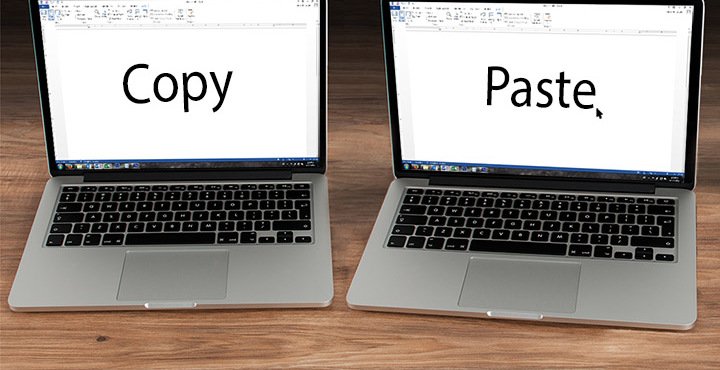
How Do I Know If I'm Plagiarizing?

Scribendi's Ultimate Essay Writing Guide

What is Plagiarism?
Upload your file(s) so we can calculate your word count, or enter your word count manually.
We will also recommend a service based on the file(s) you upload.
| File | Word Count | Include in Price? |
|---|
English is not my first language. I need English editing and proofreading so that I sound like a native speaker.
I need to have my journal article, dissertation, or term paper edited and proofread, or I need help with an admissions essay or proposal.
I have a novel, manuscript, play, or ebook. I need editing, copy editing, proofreading, a critique of my work, or a query package.
I need editing and proofreading for my white papers, reports, manuals, press releases, marketing materials, and other business documents.
I need to have my essay, project, assignment, or term paper edited and proofread.
I want to sound professional and to get hired. I have a resume, letter, email, or personal document that I need to have edited and proofread.
Prices include your personal % discount.
Prices include % sales tax ( ).

- AI Content Shield
- AI KW Research
- AI Assistant
- SEO Optimizer
- AI KW Clustering
- Customer reviews
- The NLO Revolution
- Press Center
- Help Center
- Content Resources
- Facebook Group
8 Key Points: Discuss the Importance of Paraphrasing
Table of Contents
It is necessary to discuss the importance of paraphrasing because it is a skill that students need to write clear and precise writings.
When people write, they often use information from published sources to learn something new. This is an essential part of research. Paraphrasing is a useful tool to find new and unique ways to get a message across .
Plagiarizing a text that already exists while claiming to add new information is one of the worst things anyone can do. That’s why it’s important to learn how to make your content or text that isn’t copied.
This article will answer the question “What is paraphrasing?” and tell you why it’s important. Let’s jump in!

Can We Discuss the Importance of Paraphrasing?
Paraphrasing is the process of taking what the original author has written or said and putting it in your own words . Paraphrasing helps you write in your style and focus on the most crucial text elements.
If you use someone else’s idea in an essay, you must credit the person who came up with it.
To discuss the importance of paraphrasing is to show that creativity and originality are not all that make good writing.
Eight Important Reasons to Paraphrase
Without further ado, here are some of the top notch reasons why we paraphrase:
1. Enhances Memory Performance
People tend to forget a lot of things. Our brains can only hold so many memories before they start to discard old information to make room for new ones.
We write to make sure we don’t forget. Notes are taken in class to help us remember all the essential things we have learned. No matter how well we listen and understand, we are bound to forget some things.
The exciting thing is that we don’t write down what we hear word for word. Instead, we take notes by using our own words and phrases.
Our subconscious mind knows that altering phrases gets our brains active, therefore writing them in our way helps us remember them.
And that’s the divine power of paraphrasing. It helps us remember things that we might forget otherwise.
2. Organizes the Mind
A person needs to be able to figure out what he’s thinking to put it into words. But the words that come to mind aren’t always the best ones. It’s essential to change how we say things to make ourselves and what we mean more explicit.
Paraphrasing helps us write our thoughts more clearly. We organize our minds first to communicate our ideas and researched works in writing.
3. to Drive Home the Point
Students get involved in a lot of debates. Debating is a game of wordplay. If you use the right words correctly, it’s easier for you to win.
So, you need to know how to back up your argument with the right words. Precise, well-chosen terms give our line of argument more strength.
4. Acts As a Confidence Booster
We feel like we’ve done something good when we say things more clearly. This is true both when we speak and when we write. Making the notes in our way also makes us feel like we have more freedom to say what we want.
Writing well gives you a way to put your thoughts to rest and helps logical reasoning. You can use the rewording method to work on your writing and improve it.
5. Enhances Good Communication
Writing helps people talk to each other better. When you write, you can choose your words more carefully than you would if you just said them without thinking. If you keep using the restatement technique, you will notice a clear difference in how you talk.
A well-written CV, email, etc., can go a long way toward making sure your point gets across.
6. Decreases the Need for Quotes
Quotes are an excellent way to get specific information across, but too many of them can make text boring and repetitive.
Quotes may also indicate that one doesn’t understand the original document well enough. By paraphrasing a text, a writer cuts down on the number of quotes in their work, making it easier to read.
7. Puts an Argument in Its Proper Place
You can set the stage for your ideas when you paraphrase. When you rework another author’s words, you can guide the reader and frame your argument. So, a reader can see how an idea or concept has changed from one author or setting to another.
8. Shortens a Long Read
Paraphrasing is a great way to cut out fluff in a piece of writing into a few lines or pages. When paraphrasing, we go straight to the primary idea and aim and do not utilize extraneous language.
Paraphrasing is a means to summarize or re-create what has already been said and written. When done well, paraphrasing adds value to the original text and encourages deeper thought .

Pam is an expert grammarian with years of experience teaching English, writing and ESL Grammar courses at the university level. She is enamored with all things language and fascinated with how we use words to shape our world.
Explore All Paraphrasing Tool Articles
Advanced & effective paraphrase simplify tool.
The paraphrase simplify tool is designed to paraphrase and simplify your text effectively. This tool can be used for in-depth…
- Paraphrasing Tool
What Is a Paraphrase Citation?
When you paraphrase, many people think you don’t have to give a citation. Understand that because you have used someone’s…
Paraphrasing Vs Summarizing: What’s the Difference?
Paraphrasing and summarizing are two similar activities, but they are not the same. To understand the difference between paraphrasing vs…
The Best Paraphrase Tools: A Review
When it comes to paraphrase tools, there are so many to choose. This is why we decided some paraphrase tool…
The Best Paraphrasing Hacks From Students Themselves
Did you have a tough concept that you had a lot of trouble understanding? Paraphrasing helps with that. But it…
What are the Best Paraphrasing Tool to Download
Paraphrasing is the process of rewriting or rephrase a sentence without changing its meaning. A paraphrasing tool allows you to…
- [email protected]
- Delhi India, 110085

5 Benefits of Paraphrasing You Need to Know

Paraphrasing refers to the modification of sentences and words to present the information differently and effectively. Multiple steps or ways are involved in writing the content in other words. It is practiced by people from every field, especially by students not only to make their content attractive but also for making it unique.
Paraphrase is a term derived from Latin. It was exercised generally by students in old times to remove or reword the classic text from western education. Since that time it has become popular for students to improve their poor academics.
So, today we are here with five benefits of paraphrasing your need to know. We hope the following benefits may convince you for paraphrasing content for uniqueness and enhancement in quality.
But, before listing the benefits, you must know:
Paraphrasing Online VS Manual: Which One is Better?
Paraphrasing can be preceded manually as well as online. In manual paraphrasing, you can change the words with their appropriate synonyms, change the voice of sentences, convert bullets to paragraphs and vice versa, and change the structure of sentences by swapping objects with subjects. On the other hand, content can also be paraphrased with the help of online paraphrasing tools.
We have paraphrased some sample content with online paragraphing tools like Paraphraser , Wordtune , etc. All of them performed almost equally well in paraphrasing the content without altering the actual intent of the content. Therefore, instead of paraphrasing manually, paraphrasing online is a better option. As it improves readability & produce the accurately desired results that is needed. You can see the results of online paraphrasing using the same sample text in different tools as shown in the figures below:

Paraphrasing with Paraphraser:
Paraphrasing with wordtune:.
Top 5 Benefits of Paraphrasing
These are five benefits of paraphrasing listed below:
1. Paraphrasing Helps Lessening Copied Content
The biggest benefit of paraphrasing is lessening plagiarism chances. Plagiarism is copying and using the exact sentences or text in your content that already exists somewhere else. It is unethical and can damage your reputation badly. Therefore, paraphrasing is used to make your content readable and unique from the original one.
First, you have to check for plagiarism in your content and if found, do paraphrase it. Plagiarism can be decreased by rephrasing because here we perform word changing, sentence restructuring, and content rearranging. Thus, it prevents plagiarism as it changes the entire structure of the content without affecting its meaning.
2. Paraphrasing Help Using Quotes without Quotation Marks
Adding quotes to your content can make it more credible and authentic. Readers like to read content with quotations in it because quotations can convey a greater message in lesser words. Moreover, a statement by a famous person always has a bigger impact in comparison to a normal person.
But, overusing quotations in your content can devalue your point of view. Thus, sometimes instead of quoting the exact statement or words, paraphrase them. Paraphrasing the quotes will reduce the usage of quotation marks. However, never forget to cite the quotes to the source even after paraphrasing.
3. Paraphrasing Helps Improving Content Flow
Paraphrasing can also improve the flow of the content. In paraphrasing, we do not only replace words with synonyms but we also do consider their hardness. Always use easy-to-understand words in your content. Moreover, paraphrasing also involves the removal of harsh and slang words.
Shorting the sentence length and converting passive voice to active is also a process of paraphrasing and helps in improving the flow of content. Fluent content decreases the read time of content and saves the reader’s time.
4. Paraphrasing Helps Enhancing Your Writing Skills
Paraphrasing does not only decrease plagiarism, but it also enhances the content flow and reduces the usage of quotes which helps to improve your writing skills . Paraphrasing content involves synonyms finding no matter whether using Google or a paraphrasing tool. Ultimately, this process enhances your word collection.
Paraphrasing content regularly will make you an expert in the selection of words and writing concise sentences. Moreover, you will develop a habit of writing in an active voice tone only. So, keep on paraphrasing and analyzing the paraphrased content to enhance your writing ability.
5. Paraphrasing Saves Time
An individual’s time is his most valuable possession. It may take a lot of time in rewriting content after being rejected due to lack of quality or plagiarism. Additionally, writing content from scratch is also a hectic and time-consuming task. Paraphrasing can help in both cases.
You can take some old text, paraphrase it with a paraphraser and use it in your content. Secondly, you can paraphrase your own content that contains plagiarism to save yourself from rewriting and time wastage.
We have tried to conclude this post with the best benefits of paraphrasing. We hope that paraphrasing helps in saving you time and effort. Moreover, it can also lessen plagiarism, improve readability, and reduce the usage of quotes. Remember, paraphrasing cannot compete with organic content writing. However, it can help in writing content but completing depending on paraphrasing isn’t a good practice.
About The Author
Knowledge Glow
I am Komal Gupta, the founder of Knowledge Glow, and my team and I aim to fuel dreams and help the readers achieve success. While you prepare for your competitive exams, we will be right here to assist you in improving your general knowledge and gaining maximum numbers from objective questions. We started this website in 2021 to help students prepare for upcoming competitive exams. Whether you are preparing for civil services or any other exam, our resources will be valuable in the process.
Leave a Reply Cancel reply
Your email address will not be published. Required fields are marked *
Save my name, email, and website in this browser for the next time I comment.
Latest post

Luisa Moreno Biography

How to Create the Perfect Bachelor Thesis Structure

How to Create a Term Paper That Excels: 5 Top Tips
Our category.
- Calculators
- Competitive Exam
- English grammar
- Expensive Books
- Free Ias Prep
- Freedom Fighters
- Full Forms List
- General Awareness
- Government Exam
- Important News
- Kids Learning
- Math Questions
- NCERT Solution
- Place to Visit
- RD Sharma Solutions
- Roman Numerals
- Uncategorized
Related Posts

Computer Shortcut Keys in MS Office and Windows
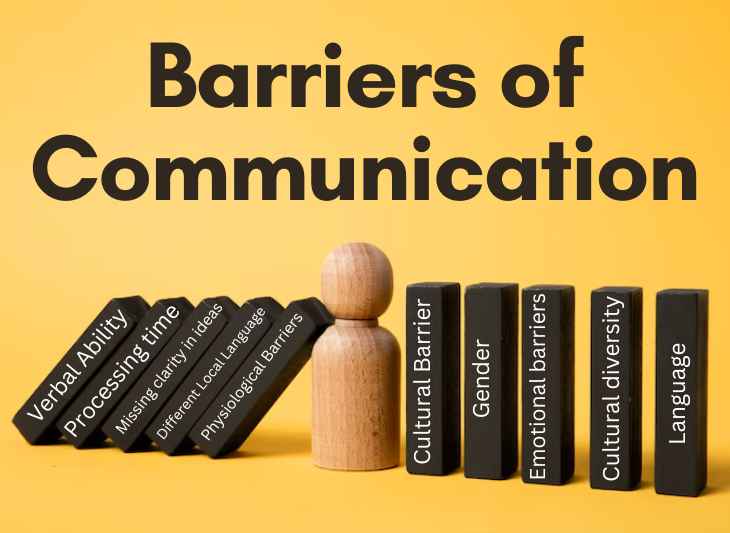
Barriers of Communication: Types of Barriers to Effective Communication

30 Opposite Words in English From A to Z?

Capstone Form and Style
Evidence-based arguments: paraphrasing, basics of paraphrasing.
A successful paraphrase is your own explanation or interpretation of another person's ideas. Paraphrasing in academic writing is an effective way to restate, condense, or clarify another author's ideas while also providing credibility to your own argument or analysis. While successful paraphrasing is essential for strong academic writing, unsuccessful paraphrasing can result in unintentional plagiarism. Look through the paraphrasing strategies below to better understand what counts as an effective paraphrase.
Effective Paraphrasing Strategies
If you’re having trouble paraphrasing a text effectively, try following these steps:
- Reread the original passage you wish to paraphrase, looking up any words you do not recognize, until you think you understand the full meaning of and intention behind the author's words.
- Next, cover or hide the passage. Once the passage is hidden from view, write out the author's idea, in your own words, as if you were explaining it to your instructor or classmates.
Have I accurately addressed the author's ideas in a new way that is unique to my writing style and scholarly voice? Have I tried to replicate the author's idea or have I simply changed words around in his/her original sentence(s)?
- Last, include a citation, which should contain the author's name, the year, and the page or paragraph number (if available), directly following your paraphrase.
Examples of Paraphrasing
Here is the original source an author might use in a paper:
Differentiation as an instructional approach promotes a balance between a student's style and a student's ability. Differentiated instruction provides the student with options for processing and internalizing the content, and for constructing new learning in order to progress academically.
Here is an example of bad paraphrasing of the source. Even though the student is citing correctly, underlined words are simply synonyms of words used in the original source. You can also see how the sentence structure is the same for both the original source and this paraphrase.
Differentiation is a way to encourage equality between the approach and talent of the student (Thompson, 2009). This type of instruction gives students different ways to deal with and grasp information , and for establishing new learning to move on in education (Thompson, 2009).
Here is an example of a better way to paraphrase the source. In this example, the author has taken the essential ideas and information from the original source, but has worded it in her own way, using unique word choice and sentence structure. The author has condensed Thompson's (2009) information, including what is relevant to her paper, but leaving out extra details that she does not needed.
Teachers use differentiated instruction to help students learn, allowing the teacher to cater lessons to the way each student learns and each student's skill (Thompson, 2009).
- Previous Page: Home
- Next Page: Quoting
- Office of Student Disability Services
Walden Resources
Departments.
- Academic Residencies
- Academic Skills
- Career Planning and Development
- Customer Care Team
- Field Experience
- Military Services
- Student Success Advising
- Writing Skills
Centers and Offices
- Center for Social Change
- Office of Academic Support and Instructional Services
- Office of Degree Acceleration
- Office of Research and Doctoral Services
- Office of Student Affairs
Student Resources
- Doctoral Writing Assessment
- Form & Style Review
- Quick Answers
- ScholarWorks
- SKIL Courses and Workshops
- Walden Bookstore
- Walden Catalog & Student Handbook
- Student Safety/Title IX
- Legal & Consumer Information
- Website Terms and Conditions
- Cookie Policy
- Accessibility
- Accreditation
- State Authorization
- Net Price Calculator
- Contact Walden
Walden University is a member of Adtalem Global Education, Inc. www.adtalem.com Walden University is certified to operate by SCHEV © 2024 Walden University LLC. All rights reserved.
Paraphrasing
What is Paraphrasing?
Paraphrasing is repeating back your understanding of the material that has been brought by the client in your own words. A paraphrase reflects the essence of what has been said.
We all use paraphrasing in our everyday lives. If you look at your studies to become a counsellor or psychotherapist, you paraphrase in class. Maybe your lecturer brings a body of work, and you list and make notes: you’re paraphrasing as you distil this down to what you feel is important.
The Power of Paraphrasing:
- The speaker feels heard.
- Helps the listener to adjust frame of reference.
- Highlights areas of high importance.
- Acts as an invite to explore deeper.
- Can indicate an end to the current discussion.
How Paraphrasing Builds Empathy
How does paraphrasing affect the client-counsellor relationship? First of all, it helps the client to feel both heard and understood. The client brings their material, daring to share that with you, and you show that you’re listening by giving them a little portion of that back – the part that feels the most important. You paraphrase it down. If you do that accurately and correctly, and it matches where the client is, the client is going to recognise that and feel heard: ‘Finally, somebody is really listening, really understanding what it is that I am bringing.’
This keys right into empathy, because it’s about building that empathic relationship with the client – and empathy is not a one-way transaction. Carl Rogers (1959, pp. 210-211) defines ‘empathy’ as the ability to ‘perceive the internal frame of reference of another with accuracy and with the emotional components and meanings which pertain thereto as if one were the person, but without ever losing the “as if” conditions’. In other words, we walk in somebody’s shoes as if their reality is our own – but of course it’s not our reality, and that’s where the ‘as if’ comes in. I’ve heard this rather aptly described as ‘walking in the client’s shoes, but keeping our socks on’!
Empathy is a two-way transaction – it’s not enough for us to be 100% in the client’s frame of reference and understanding their true feelings; the client must also perceive that we understand. When the client feels at some level that they have been understood, then the empathy circle is complete.
For example, if you watch a TV programme in which somebody achieves something that is really spectacular, you may find yourself moved for this person. You’re almost there with them on this journey, and as they’re receiving their award or their adulation, and the audience is clapping for what they’ve done, you may even be moved to tears. But the person on the TV cannot perceive your reaction – the empathy is empty, because it’s one-way.
So empathy is effective only if your client feels heard and understood – i.e. they sense that empathic connection. Using paraphrasing is a way of completing the empathy circle – a way of letting them know that we see and hear them.
Other Benefits of Paraphrasing
Paraphrasing also highlights issues by stating them more concisely. This is focusing down: it invites the client to go and delve deeper into part of what they have said. We can also use paraphrasing to check out the accuracy of our perception as a counsellor.
Below is an example of my use of paraphrasing to clarify my understanding of what was brought. This shows how paraphrasing affects the therapeutic relationship; because the paraphrase fits well for the client, she feels heard and understood. As this happens, the material deepens.
I really have a battle with doing things for the impression that others will have of me, or the approval that I will get from other people for what it is that I do. So much so that I will very often override myself, my family, so that I can gain the acceptance, I guess, of other people, whether friends, family or clients in a work situation. I will always favour what the action would be that would gain that acceptance, that would not bring up any sort of confrontation or maybe have a conflict situation arise from it.
So, I guess, I’m eager to please, wanting to make sure that all things are well and smooth – and that I’m liked and accepted with whatever the transaction or situation may be.
Counsellor:
As you’re saying that, it really feels like a lot of hard work. A lot of hard work, pre-empting whatever it is that they would have expected of you, and then ‘sacrificing’, I guess, is a word that came up for me – sacrificing your own wants/needs to be able to meet what you perceive is expected of you. Have I understood that correctly?
Yeah, the word ‘sacrifice’ really captures the feeling that comes up for me when I sort of reflect and look over that kind of situation. So often, I will sacrifice my own wants and my own desires…
In this example, the client really resonated with the word ‘sacrifice’, which the counsellor introduced as a paraphrase; she really felt understood. And it’s interesting to note that throughout the rest of this stimulated session, the word ‘sacrifice’ became almost a theme.
Another paraphrase in this example was ‘hard work’. Although the client hadn’t used this phrase herself, she was presenting visually as weighed down. Her shoulders looked heavy as she was bringing the material. So the counsellor was paraphrasing, not only the words of the narrative, but digging deeper, looking for the feelings and paraphrasing the whole presence of that client within that relationship.
Listening for ‘the Music behind the Words’
Here is another example of paraphrasing, from the same skills session. Try to see if you can hear, as Rogers would put it, ‘the music behind the words’, where the counsellor looks deeper than just the words the client is bringing, paraphrasing back their whole being.
Out of my own will or my own free choice, I would put that aside and favour what would be accepted – or what I think someone else would rather I do. And sometimes it’s hard. It leaves me with a situation of not knowing if they actually really realise what it is that I sacrificed, that I’ve given up, so that it can fall into what I think they would prefer in that situation.
It feels confusing to you in that situation of whether they even perceive what it is that you are sacrificing, what you’re giving up. That it almost feels like you’re giving up part of yourself to match what you think they may want or need from you. And I kind of got the feeling, as you were saying that you wonder if they even see that.
Yeah. As I was sort of verbalizing and talking through that, I actually realised that even within that sacrifice, it’s all my perception of what I think they might want me to do. And just saying that is actually a bit ridiculous. Because how am I to know what it is that they want or need to do? So here I am – disregarding my own desires, for lack of a better word – to do something I assume someone else would want me to do instead.
I thought it was really interesting that this client started off in what felt to me like an external locus of evaluation. She was confused, and wondering whether the people she refers to understood what she was giving up to meet their perceived expectations. Immediately after the counsellor’s paraphrase, this client experienced a moment of movement from an external to an internal locus of evaluation, where she realised it was all about her own perceptions and responsibility. In this way, she went from being powerless to having the power to change this situation.
Next Steps in Paraphrasing
Paraphrasing is so much more than just repeating the client’s words back to them using your own words. Although it might feel very simplistic – and there’s often a tendency to paraphrase the narrative/story that the client brings, rather than their feelings/process – there’s so much more to it than that and so much deeper that we can go. There’s real power in paraphrasing.
I suggest that you:
- Practice active listening and paraphrasing in your day-to-day life.
- Practice paraphrasing in your own stimulated skills sessions.
- Try to look for the full person when paraphrasing, e.g. not just the client’s words, but also their body language, facial expressions, and way of being within the counselling relationship.
- Record these sessions (with your peer’s consent) and listen back to them.
- Speak to your peers about paraphrasing.
- Evaluate each other’s skills and explore how you might paraphrase more effectively.
- Look whether you’re getting empathic connection within your paraphrasing.
- Search out moments of movement when you paraphrase.
- Ask how paraphrasing affects both the client and you, as a counsellor.
Paraphrasing is definitely something that should be debated. I hope that this chapter will encourage you to go out there with a new passion for – and a new way of looking at – paraphrasing!
Alternatives to Questions
What else can we use when we’re not sure what exactly a client means? For example, if a client was speaking about his brother and father, he might say: ‘I really struggle with my brother and my father. They don’t get on, and at times he makes me so angry.’ Who does the client mean by ‘he’: the brother or the father? Not knowing who makes him angry means I cannot be fully within the client’s frame of reference.
I could ask: ‘Sorry, just so I can understand, who it is that you’re angry at – your father or your brother?’ This risks ripping the client out of that emotion (the anger). Instead, we could use reflection: ‘He makes you so angry.’ This invites the client to expand on what he has said. He might say: ‘Yes, ever since I was a young boy, my dad was always…’ In this case, I didn’t need to ask a question – we’re still in the feelings, and I’ve got what I needed in order to be fully in the client’s frame of reference.
Of course, the client might not reveal the information I need in his answer – for example, if he responded to my reflection: ‘He does. He makes me really angry – in fact, so angry that I don’t know what to do about it anymore.’ In that case, I would still need to put in a question: ‘Is this your dad or your brother that you’re referring to?’
Rogers, C, 1959. ‘A Theory of Therapy, Personallity, and Interpersonal Relations, as Developed in the Client-Centered Framework’, in S Koch (ed.), Psychology: A Study of a Science (Vol.3), New York: McGraw-Hill, 184-256.
© Counselling Skills - Privacy Policy • Refund Policy • Contact Us
Top Digital Marketing Tips, Tricks and Trends Blog

What are the five reasons for paraphrasing?
Paraphrasing is a technique commonly used by writers to express the ideas of another author using their own words. In simple terms, it involves rephrasing and restating existing concepts from published sources. Paraphrasing has gained significant importance in content writing for various reasons. In this post, we will discuss the key reasons why you should consider incorporating paraphrasing into your writing.
The importance of paraphrasing
Paraphrasing holds significant importance for a variety of reasons. In this regard, the following five factors are widely recognized as the most crucial ones.
- Improving Idea Expression
As mentioned earlier, paraphrasing involves presenting ideas rather than the exact words of another writer. To effectively present ideas, thorough research and ideation are necessary. During the research phase, it is advisable to take note of key points that aid in understanding the core message of the content. These main points and ideas should be carefully considered when writing your own version.
Avoiding plagiarism
The most crucial reason why paraphrasing is important is that it helps you avoid plagiarism . When you are using the same ideas and words of another writer in your content then you are simply committing plagiarism. But if you paraphrase content then you can keep yourself away from the accusation of plagiarism. It’s a way to present information using your unique expression, protecting you from unintentional or intentional plagiarism.
Reducing the Need for Extensive Research
Creating a new content can be time-consuming and research extensive research. However, there is an alternative approach that can help streamline the research phase. By opting to rewrite or paraphrase existing content, you can significantly reduce the need for extensive research. To ensure originality, it is advised to gather ideas and information from various sources and then paraphrase them to craft a fresh and unique post.
- Refining Your Writing Style
Practicing is crucial. It not only helps you enhance your writing skills but also allows you to avoid errors and improve the quality of your content. Another important aspect of paraphrasing is its ability to simplify complex information. By utilizing this technique, you can easily refine your writing and make it more accessible to readers.
Maximizing Time and Energy
Paraphrasing offers a valuable way to save time and energy in content creation. By investing time in outlining and planning your content can help organize your thoughts and streamline the writing process. Additionally, utilizing online paraphrasing tools further facilitates quick content generation. Embracing paraphrasing techniques, coupled with effective planning, allows you to save significant time and energy while creating engaging and original content.
Enhancing Paraphrasing Accuracy and Reliability with Online Tools
Paraphrasing accurately and with complete reliability can be challenging, as there is always a risk of plagiarism. However, you can use online paraphrasing tools to help you create and present new content with precision. These tools are user-friendly and, best of all, free to use.
To utilize an online paraphrasing tool , simply copy the content from your reference sources and paste it into the tool’s input box. After inserting the text or document files, click on the ‘Paraphrase Text’ button. Within seconds, the tool will generate a fresh version of the content. By employing artificial intelligence and ENL (Emulated Natural Language) technology, an essay rewriter produces human-like content easily and quickly.
By incorporating these tools into your writing process, you can confidently rewrite content while maintaining accuracy and reliability.
Read more articles click
Related Posts

5 Ways How To Improve Your SEO Ranking
5 Ways How To Improve Your SEO Ranking It’s every marketer’s dream to be ranked first for their chosen keywords and stay at the top of the search engine result page (SERPs). While some look for shortcuts to improve SEO ranking, the hard truth is that search engine optimisation (SEO)…

SEO Checklist 2023 to boost your search ranking
SEO services is a search engine service where web owners can use to optimize website in order to achieve higher rankings. Marketing agencies, freelancers and enterprises all provide this service. MarketingGuru ,digital marketing agency in Thailand, notably specialized in end-to-end managed SEO services across regional and global companies. However, organic…

COVID-19 Digital Marketing and SEO Tips: How to Prepare Your Business for the Downturn?
The COVID-19 epidemic has impacted many businesses across the globe. At this point in time, companies around the world that felt the impact of dwindling sales and falling consumer spending as a result of the COVID-19 outbreak. As a business, you must have a plan to be ready for the…
How to Paraphrase - Everything You Need To Know
Learn what paraphrasing is, and how to paraphrase anything you need using 6 proven strategies to master this powerful writing technique.

Ivana Vidakovic
Feb 26, 2023

TABLE OF CONTENTS
The ability to paraphrase is essential in all forms of communication.
This method allows you to restate a text in one's own words without changing its meaning .
In addition to helping you avoid plagiarism, proper paraphrasing also improves the clarity and readability of your writing.
However, this technique goes far beyond simple word choice adjustments.
So, what exactly does "paraphrasing" mean, and what does it involve?
In this article, we’ll provide all the answers on how to paraphrase, enabling you to master this powerful writing technique for good.
Let’s begin!
What Is Paraphrasing?
Paraphrasing is a writing technique often used when you want to put someone else's thoughts or ideas into your own words, while keeping the same meaning .
People often use paraphrasing to:
✔️ avoid plagiarism ,
✔️ make the complicated language easier to understand, or
✔️ explain the ideas of someone else in a way that is easier to understand.
However, people often get paraphrasing and summarizing mixed up. And even though both of these are often used as writing techniques, they mean different things at their core.
Differences Between Paraphrasing and Summarizing
Both paraphrasing and summarizing are ways to say the same thing in your own words, but their scope and purpose are different.
We already mentioned that paraphrasing is actually rewriting a section of text or a single phrase so that it sounds different but retains the same meaning as the original.
On the other hand, summarizing means reducing the original text to its most important parts .
It gives a shorter text version, highlighting the most important ideas and leaving out details that are less important.
Examples of Paraphrasing and Summarizing
Original text:
"The book tells the story of a young girl who has swept away to a magical world where she meets new friends and battles an evil witch to save the kingdom."
Paraphrased text:
“ In the book, the protagonist, a young girl, is whisked away to a fantastical world where she makes new friends and fights an evil witch to save the kingdom.”
"The book follows a girl and her story of making friendships and saving the kingdom from an evil witch in a magical world."
Benefits of Paraphrasing
Paraphrasing can be beneficial in multiple ways, including:
👍 Avoiding plagiarism — Allows you to borrow ideas without copying words.
👍 Clarifying information — Simplifies complex ideas and information.
👍 Improving writing skills — Helps you write and express your thoughts.
👍 Demonstrating comprehension — Displays your ability to understand and explain the original text.
👍 Enhancing critical thinking — Allows you to quickly and accurately sort useful information from useless data.
👍 Simplifying language — Can simplify complex language by using simpler words and sentence structures .
When you paraphrase, you show that you understand the original material and that you can apply what you've learned to your own writing.
Now that you know what it is and the benefits it can provide, let's look at 6 strategies on how to paraphrase.
6 Proven Strategies on How to Paraphrase To Cover It All
Here we listed the top 6 tried-and-true paraphrasing techniques and their pros and cons to help you complete the task more efficiently.
1. Rewrite For Better Context
Modifying pre-existing text to increase its clarity, readability , or overall effectiveness is what rewriting methods are all about. It includes the following actions:
✒️ Switching out the current language for more precise synonyms .
✒️ Modifying the original wording order .
✒️ Transforming a previously passive sentence into an active voice .
Rewriting Pros
✔️ It improves the readability of your content.
✔️ Helps explain confusing or complex information.
✔️ Assist in adapting the text to various audiences, purposes, and mediums.
✔️ Rearranging paragraphs or sentences improves text flow and coherence.
Rewriting Cons
⛔ Longer texts take longer to rewrite.
⛔ Poor rewriting can change the meaning of the text.
⛔ Careless rewriting can cause tone, style , and voice inconsistencies.
⛔ The author's voice can sometimes be lost in the process.
Also, there are various paid and free rewriting tools that can help you simplify this process.
2. Expand Sentences To Get The Most Out of It
An easy way to boost your writing's readability and cohesion is simply using longer sentences .
Moreover, you can enhance the efficiency of your writing and make your sentences more exciting and engaging .
You can start by following these simple instructions:
✒️ Ensure to include the adjectives - they'll give your writing more atmosphere and depth.
✒️ Increase the energy and interest of what you write by using vivid verbs.
✒️ To keep your writing fresh and exciting, try using a variety of sentence structures .
Expanding Pros
✔️ Expanding sentences can improve readability .
✔️ Detail and variety in your writing can keep readers engaged and interested .
✔️ Examples and supporting evidence can persuade readers and strengthen your arguments.
✔️ Expanding sentences makes writing more cohesive.
Expanding Cons
⛔ Expansive sentences can be hard to read and understand .
⛔ Overusing details and examples can make your writing unfocused.
⛔ Can cause repetition and redundancy, making your writing dull.
⛔ Takes work and concentration, so it might not be appropriate for all types of writing .
3. Summarize To Extract Essential Points
A summary is a condensed version of a longer text or discussion that only includes the most important points.
To summarize means providing a concise overview of the most important information while leaving out irrelevant data.
These are the most important things to remember when summarizing :
✒️ Actively taking in information by reading or listening.
✒️ Extracting the central concepts and supporting evidence.
✒️ Shortening lengthy passages into more manageable chunks.
Summarizing Pros
✔️ Summarizing helps you quickly grasp a text's main points .
✔️ Improves retention by focusing on key points.
✔️ By simplifying complex concepts, you can better grasp them.
✔️ Allows you to express difficult concepts in a simple manner.
Summarizing Cons
⛔ May omit essential details or nuances.
⛔ Tend to be biased or create misinterpreted content.
⛔ Can be difficult, especially with complex or technical information.
⛔ Not ideal for detailed content or discussions.
Find the best summarizing tools in this article .
4. Set the Appropriate Tone To Evoke the Right Emotion
The right tone can do wonders for your writing's ability to move readers.
The style of a content is its overall mood, as expressed through the author's choice of words and phrases.
Therefore, the writer's choice of tone greatly influences the reader's reaction and the piece's overall impact.
Creating the right atmosphere in your writing is essential to conveying your message and impacting your readers.
To set the appropriate tone follow the next steps:
✒️ Consider your audience, purpose, and desired emotion .
✒️ Use sensory language, strong verbs, and vivid imagery to evoke an emotion.
✒️ Keep the tone consistent and avoid offensive language.
Changing Tone Pros
✔️ Can evoke the reader's desired emotional response.
✔️ A good tone can keep the reader engaged.
✔️ Can improve clarity by conveying the intended message to the reader.
✔️ The right tone can convey competence and authority.
Changing Tone Cons
⛔ Setting the right tone can be difficult, especially for sensitive or complex topics.
⛔ Your readership may easily misinterpret the tone you were going for.
⛔ Personal biases or interpretations may affect the writing's tone and accuracy.
⛔ Perhaps it won't be to everyone's taste.
5. Translate For Wide Audiences
Broad audience translation involves converting the meaning of text or speech from one language to another.
Part of this is making sure the translation is easy to understand for a wide variety of target audiences.
Facilitating communication across language and cultural divides is one of the main goals of professional translation.
When translating for wide audiences, make sure to:
✒️ Consider the audience, purpose, and cultural context of the translation.
✒️ Translating words requires translating meaning, tone, and style.
✒️ Avoid unfamiliar idioms and cultural references.
Check out the linked articles if you're curious about learning more about improving your Italian or German communication skills.
Translation Pros
✔️ Translating content can help non-native speakers understand it.
✔️ Can improve communication by bridging cultural and linguistic gaps.
✔️ You can increase the content's global reach and influence.
✔️ Promotes cross-cultural understanding and exchange.
Translation Cons
⛔ Translation errors can cause miscommunication or cultural insensitivity.
⛔ Translating original content's tone and nuance can cause confusion.
⛔ It can be difficult especially for longer or more complex pieces.
⛔ Requires awareness of source-target language cultural differences.
To find out the best AI translation software, check out this article .
6. Proofread, Proofread, Proofread
Grammar, punctuation, spelling, syntax, and formatting errors can all be easily fixed by performing a thorough proofreading .
It's a crucial stage in writing that can make or break the quality of your final product in terms of presentation, professionalism, and accuracy.
You can increase the impact and efficiency of your writing by giving it a thorough proofread to make sure it is clear, concise, and error-free.
Effective proofreading involves:
✒️ Line-by-line review or using software to find and correct errors.
✒️ Reading the content without fatigue.
✒️ Reading aloud to find awkward phrases and syntax errors.
Proofreading Pros
✔️ Helps write clear, accurate, and error-free content.
✔️ Shows professionalism and attention to detail, which boost credibility.
✔️ Corrects grammar, syntax, and punctuation errors to improve readability.
✔️ Helps writing achieve its goal by making it clear, concise, and persuasive.
Proofreading Cons
⛔ It is time-consuming, especially for longer writing.
⛔ May miss some errors, particularly content that needs more editing or revision.
⛔ Depends on the proofreader.
⛔ The proofreader can easily make mistakes if tired or distracted.
Let’s Recap
In the world of digital advertising, quality content is king.
You can ensure your content is at the top of the game by combining all the above paraphrasing methods.
And, once you learn how to paraphrase, you'll see improved results in reader engagement, website traffic, and credibility as an authority in your field.
However, no one said it would be easy, especially if all this work needs to be done manually.
We created the TextCortex add-on for that purpose — to help relieve stress and ease the burden of a large volume of writing .
This piece of software can cut down your writing time by a whopping 70% .
TextCortex’s Hot Features
The TextCortex plugin provides standard rewriting capabilities, including all the paraphrasing strategies discussed in this article (rewriting, summarizing, tone, translation, and more).
However, it also comes with more advanced features that can come in handy in your everyday writing task, including the ability to:
✔️ Write up to 300 posts in a single strike with the “ Long-form post ” feature.
✔️ Transform a bulleted list of key points into emails using the “ Bullet to email ” feature.
✔️ Use “ Brainstorming features ” on more than 2000 platforms to overcome writer’s block.
✔️ Let AI predict desirable content output and form with “ Zeno mode ”.
✔️ Get any desirable content form with 60+ different AI templates .
✔️ Get results from AI writers by having a conversation with them using our “ Zeno chat ” feature.
Why Bother Considering It?
We aren't trying to show off how great our tool is. We pay close attention to what our customers have to say and place a premium on their happiness as a result of doing business with us.
Thus, we make it possible for you to:
🎁 Sign up without credit card info.
🎁 Get 10 free daily creations in a forever freemium plan.
🎁 Gain rewards for helping us.
🎁 Access the special deals on premium plans , in case you want to upgrade.
Interested to give it a try?
Get your TextCortex free account today and enjoy the modern AI writing capabilities that will make your writing more enjoyable, while improving your skills in the process.
One AI copilot that truly gets you.
Connect multiple data sources, define the voice for your AI and taste what it feels like to have a fully-personalized AI copilot on 50,000+ platforms.
Did you like this article? Explore a few more related posts.

How To Write An Email To A Recruiter [+Templates]

How to Use ChatGPT to Edit Writing

How to Write an Email When Sending Documents
Questions answers..
TextCortex is a powerful AI-powered writing tool that can help you reduce your writing time, handle big tasks, and create high-quality content without errors. With its customizable platform, personalized intelligence experience, advanced writing and research capabilities, and error-free content, TextCortex is the perfect tool for creative professionals who want to be a creative force in their industry.
Our AI copilot learned how to write from more than 3 billion sentences and has the ability to create unique content. However, fact-checking is something which still requires a human approval.
TextCortex supports more than 25 languages including English, Dutch, German, Ukranian, Romanian, Spanish, Portuguese, French, Italian.
Yes, TextCortex is completely free to use with all of its features. When you sign up, you receive 100 free creations. Then you will receive 20 recurring creations every day on the free plan.
Yes, we have a Text Generation API, please talk to us directly to implement it. You can reach out to us at [email protected]
Account sharing is not allowed. If you have a need for more than 5 seats for an account, you can directly contact us at [email protected]
Yes, TextCortex offers 14-day free trial for users to try out all features extensively with higher number of generations. But keep in mind that you can already try everything with the free plan. There is no feature that is locked behind a premium plan.
Overall, TextCortex AI has over 1000 five-star reviews on reputable review sites such as G2, Trustpilot and Capterra.
TextCortex learns and adapts to your unique writing style and knowledge, making it easier for you to write high-quality & personalized content.
Your premium features will be available until the end of your subscription date, then your account plan will be set to Free plan.
General Questions
Your ai copilot is ready to collaborate with you..
Connect your knowledge, customize the style and start collaborating with your AI copilot.
Tech Tutorials and Reviews
7 Reasons Why Paraphrasing is Important in Writing
Last Updated July 26, 2023 By Subhash D Leave a Comment
Inside the article
Paraphrasing is a technique that many writers use in order to make sure they are accurately representing what the original author was trying to say. But why is it important? There are 7 reasons why paraphrasing is important in writing, and we will go over each one of them today.
1 Paraphrasing Helps you Avoid Plagiarism
The most obvious reason why paraphrasing is important in writing is that it keeps you from accidentally plagiarizing someone else’s work while still being able to get your point across. It also prevents any legal issues if someone decides to sue for copyright infringement.
2 Paraphrasing Lets you focus on Ideas Instead of Words
When you’re paraphrasing someone else’s work, you’re not just copying and pasting it word for word. You’re taking the main points and putting them into your own words, which helps you to better understand the original author’s ideas. This also makes your writing sound more natural as if it came from you instead of someone else. Of course, paraphrasing can be hard to get good at first. If there are any problems after paraphrasing the content and the result doesn’t meet your needs, you can always contact paperwriter and get a 100% perfect essay done for you.”
3 Paraphrasing allows you to clarify your ideas.
When you paraphrase, you are forced to reword the original passage in your own words. This can help you to better understand the point that was made and improve your own writing. In addition, clarifying your ideas can help your readers follow along more easily.
Paraphrasing is an important tool for writers of all levels. Whether you are a student writing a paper or a professional author, paraphrasing can help you to produce clear, concise, and accurate writing. By following these tips, you can learn how to paraphrase effectively and use this skill to improve your writing skills.
4 Paraphrasing is a Way to Avoid Plagiarism without Extensive Research
In order to paraphrase, you have to use your own words and ideas. That means that the reader will only be getting information from one person’s perspective instead of several sources’ opinions. In an academic setting, this helps prevent plagiarism since there are completely different ways in which a text can be plagiarized.
The most common way to plagiarize is to take passages from other sources and insert them into your own paper without giving credit to the original author. This type of plagiarism is easily avoided by paraphrasing because you are putting the information in your own words, which means that it’s not a direct copy.
5 It Makes Your Writing Better
Paraphrasing your sentences in the correct way will make you a better writer. You can avoid errors that are very common when it comes to paraphrased content. When doing this, be sure to find reliable sources for everything you claim in your article because readers want the truth! Don’t forget about people who are learning English; they will appreciate your well-written content. Writing an admission essay can be a challenge and if you are not confident to write it yourself, you must look for an admission essay writing service online.
If you paraphrase correctly, you also make sure that the original message is communicated as intended. This is very important, especially if you are writing for a specific audience or client.
6 It Prevents Plagiarism
What happens when you paraphrase something incorrectly? You run the risk of plagiarizing! Plagiarism is never okay, and it can even be taken very seriously in certain industries. For example, students who are found guilty of plagiarizing may suffer consequences such as suspension or expulsion from their college or university.
7 Speed and time
Paraphrasing is a very good way to write quickly. This means that you can use this skill when writing essays or papers in class, as well as reports for your job. You will be able to complete these types of tasks much faster if you know how to paraphrase effectively than if you don’t!
Why do You Need to Paraphrase?
There are many reasons why you want to paraphrase in writing. Paraphrasing helps improve the quality of your research paper and ensures that all sources used throughout your work can be cited accordingly. You also need to paraphrase when plagiarism is a concern, or if there is any risk involved for using quotes from another source without giving proper credit.
Writing is the most important skill to have in today’s world. It helps you with your job, education, and life! Paraphrasing lets others know what you are thinking without losing any of your original thoughts or ideas. If this sounds like something that may interest you, check out our blog post on how paraphrasing can help improve writing skills by click here for paragraph checker . This is a very useful tool for many people who want their opinions heard but don’t always feel comfortable speaking up about them.
About Subhash D
A tech-enthusiast, Subhash is a Graduate Engineer and Microsoft Certified Systems Engineer. Founder of it4nextgen, he has spent more than 20 years in the IT industry.
Share Your Views: Cancel reply
Save my name, email, and website in this browser for the next time I comment.
- Privacy Policy and Disclaimer
- Newsletter!
Enjoy Free Tips & News
Discover top guides, trends, tips and expertise from AIO Writers
What is Paraphrasing Plagiarism: Avoiding Rewriting Mistakes
Julia McCoy

Ever wondered if simply rephrasing someone else’s words could get you into trouble?
That is the consequence of paraphrasing plagiarism.
But what is paraphrasing plagiarism exactly?
It’s not just about swapping a few words here and there — it’s about understanding when rewriting crosses the line into academic misconduct or copyright infringement.
In this post, we’ll uncover what is paraphrasing plagiarism, why it matters, and how you can avoid unintentionally falling into its trap.
Ready to clear up the confusion? Let’s get started!
Table Of Contents:
What is paraphrasing plagiarism, spotting the signs: examples of paraphrasing plagiarism, the real cost of paraphrasing plagiarism, how to avoid paraphrasing plagiarism, can i use a paraphrasing tool without plagiarizing, faqs: what is paraphrasing plagiarism.
Paraphrasing plagiarism occurs when you reword someone else’s ideas without proper credit.
Even if you change some words, using a similar structure and ideas from a source without attribution constitutes plagiarism.
This can have serious consequences, impacting academic and professional standing.
Why Paraphrasing Plagiarism Matters
Plagiarism is a serious academic offense. According to the International Center for Academic Integrity , more than 60% of university students admit to cheating in some form. This prevalence highlights the importance of academic integrity and the severe consequences of plagiarism.
The importance of originality and ethical writing extends beyond academics.
In the digital age where content is king, maintaining a good reputation relies heavily on these principles. A single instance of plagiarism can severely damage an individual’s or business’s credibility in the online world.
Proper vs. Improper Paraphrasing
Paraphrasing is a valuable skill in writing — it allows you to convey information in your own words while respecting the original author’s ideas.
However, there’s a crucial distinction between proper and improper paraphrasing that can make or break your credibility.
Proper paraphrasing maintains the original meaning while using different language and structure, whereas improper paraphrasing crosses into plagiarism territory by either retaining too much of the original wording or failing to credit the source properly.
Let’s imagine you’re writing about the American Revolution and find this:
“The Boston Tea Party, a pivotal event in the road to American independence, was a political protest where colonists, disguised as Native Americans, threw 342 chests of British tea into the harbor, sparking outrage in England and pushing the colonies closer to rebellion.”
Here are a few ways to rephrase this, both correct and incorrect:
| Example | Plagiarism? | Why? |
|---|---|---|
| On December 16, 1773, colonists dressed as Native Americans threw British tea into the harbor in Boston. This event was an act of protest that enraged England. | Yes | This closely mirrors the original structure and wording, even attributing the action. It needs a citation. |
| The colonists’ decision to destroy the tea in Boston was a turning point. This event showed their willingness to take a stand against British rule, significantly impacting the relationship between England and the colonies. | No | This uses different wording and sentence structures while providing original analysis and a citation. |
Information spreads rapidly in today’s digital world. One plagiarized blog post could harm your reputation and that of your business.
Whether intentional or unintentional, plagiarism has consequences :
- Academically, it can lead to a failing grade, suspension, or expulsion.
- Professionally, it can damage your credibility, limit job opportunities, and potentially lead to legal issues.
Before paraphrasing, fully grasp the main points and supporting details of the original text.
Consider the key arguments and the evidence provided.
Once you have a good understanding, set the original aside and write as if explaining it to a friend in your own words.
Here are additional helpful strategies:
- Understand Then Deconstruct: Instead of just swapping words, take the time to truly understand and restructure the ideas.
- Cite Your Sources: Consistently cite your sources, familiarizing yourself with different styles such as APA, MLA, and Chicago .
- Use Quotation Marks Correctly: When using the author’s exact words, always enclose them in quotation marks.
- Use Plagiarism Checkers: Run a plagiarism scan before you submit your work. Consider them a safety net for catching unintentional mistakes.
Paraphrasing with a tool can constitute plagiarism if not properly managed.
While paraphrasing tools can be useful for generating alternate wording, they often struggle with preserving the original meaning and tone accurately. This can result in unintentional plagiarism if the tool reproduces too much of the original text without sufficient transformation or if you fail to properly cite the original source.
So while these tools can be a helpful starting point, it’s crucial to review and refine the output to ensure it meets academic integrity standards. Always double-check that your paraphrased content is sufficiently transformed and properly attributed to avoid plagiarism concerns.
What is an example of paraphrasing plagiarism?
Let’s say you read a scientific paper stating: “Exposure to sunlight facilitates the production of vitamin D in the human body.”
Paraphrasing plagiarism happens when you write something like, “Sunlight helps our bodies make vitamin D,” without citing the original paper.
Even though the wording is different, the sentence structure and core idea are very similar, which is a form of improper paraphrasing.
What is considered paraphrasing plagiarism?
Even if you cite the source, only changing a few words or rearranging sentences while keeping the same structure and ideas as the original is considered plagiarism.
This is because it doesn’t demonstrate an original understanding or interpretation of the source material. It is essential to use multiple strategies when paraphrasing to create truly original work that avoids plagiarism.
How Do You Paraphrase Without Plagiarizing?
Effective paraphrasing involves several steps.
Start by changing the sentence structure and using synonyms for non-generic words.
You can also switch between active voice and passive voice to further alter the text.
Remember, the goal is to present the information in a way that reflects your understanding and analysis while attributing the original idea to its source.
What is an example of a paraphrase?
Consider the earlier example of the scientific paper on sunlight. An acceptable paraphrase with a citation would be: “Research indicates that exposure to sunlight allows for vitamin D synthesis in humans (Smith, 2023).”
This paraphrase successfully conveys the original idea using different wording and sentence structure while crediting the source. This method helps ensure you are citing sources properly and avoiding plagiarism .
Understanding what is paraphrasing plagiarism is vital for any writer.
Creating work with integrity isn’t just about avoiding punishment. It’s about establishing yourself as a trustworthy and credible voice in your field.
Prioritizing original thinking, responsible sourcing, and ethical writing practices protects your reputation and fosters a culture of honesty and respect.

Written by Julia McCoy

UNLOCK YOUR POTENTIAL
Long headline that highlights value proposition of lead magnet.
Grab a front row seat to our video masterclasses, interviews, case studies, tutorials, and guides.
Experience the power of RankWell®
Grow Your Traffic!
Let's crawl your website and get you some keyword suggestions for your next piece of content.
By continuing, you agree with our Terms and Conditions.
What is one benefit of paraphrasing?
One benefit is that paraphrasing sounds more natural. When you speak or write using someone else's words, it doesn't sound like you, and can be a little weird for people to hear or read who are used to your voice.
Supersonic6427 ∙
Add your answer:
What is a benefit of paraphrasing source material?
you can incorporate more of your own writing voice into the paper
How do you spell paraphrasing?
Exactly how u spelled it: Paraphrasing
The method of understanding that restates what the speaker has said in the listeners own words is?
paraphrasing
When paraphrasing a reader?
When paraphrasing, the reader restates what he has read, but putting it into his own words.
What is the process of using questioning and paraphrasing messages?
The process of using questioning and paraphrasing messages is a type of
Top Categories

QuillBot AI Review: Everything You Need to Know (2024)
Artificial intelligence (AI) is evolving quickly, and new AI tools and platforms are constantly appearing. In an era where clear, concise writing is highly coveted, AI writing tools are becoming increasingly crucial. One such impressive technology is QuillBot AI . Starting as a simple paraphrasing tool, QuillBot has become a robust AI writing assistant that symbolizes a significant stride in AI content optimization. This review thoroughly explores QuillBot AI, focusing on its key features, pricing structure, and strengths and weaknesses.
- 1 What is QuillBot AI?
- 2 How Quillbot AI Works
- 3.1 1. The Paraphraser
- 3.2 2. The Grammar Checker
- 3.3 3. Summarizer
- 3.4 4. Citation Generator
- 3.5 5. QuillBot Plagiarism Checker
- 3.6 6. The Translator
- 3.7 7. Quillbot Extensions
- 4 QuillBot AI Pricing and Plans Review
- 5.1 Pros of Using QuillBot AI
- 5.2 Cons of Using QuillBot AI
- 6 How QuillBot Compares to Other Similar Tools
- 7 Should You Use QuillBot? (The Verdict)
- 8 Frequently Asked Questions (FAQs)
What is QuillBot AI?

QuillBot AI is a leading AI writing companion and paraphrasing software designed to help anyone elevate the quality of their writing. At its core, it functions as one of the best AI rewriter tools to edit, rephrase, and enhance content like a professional.
It presents various features, including grammar checking, plagiarism detection, and content summarization. As such, QuillBot AI delivers substantial benefits for academics, essayists, and writers. Creating high-quality professional content can be time-consuming, and Quillbot streamlines the process using AI to improve your writing quickly, offering real-time suggestions and one-click solutions. Plus, it is an all-in-one solution that replaces the need to invest in multiple tools, making it cost-effective.
The versatility of the software caters to a diverse audience. While students can utilize its various writing tools, professional writers can efficiently collaborate and summarize lengthy text. If you want to improve your writing process, whether writing an email, an essay, or a long-form blog article, you will find Quillbot AI to be a valuable addition to your writing toolkit. It can revolutionize your writing process to produce surprising results.
How Quillbot AI Works
You can access QuillBot by visiting their online platform on their website . You don’t need to create an account; you can use a free version of QuillBot with limitations. Once you are there, you will see the available tools in the left sidebar. Click any of the tools to launch the user interface for each.
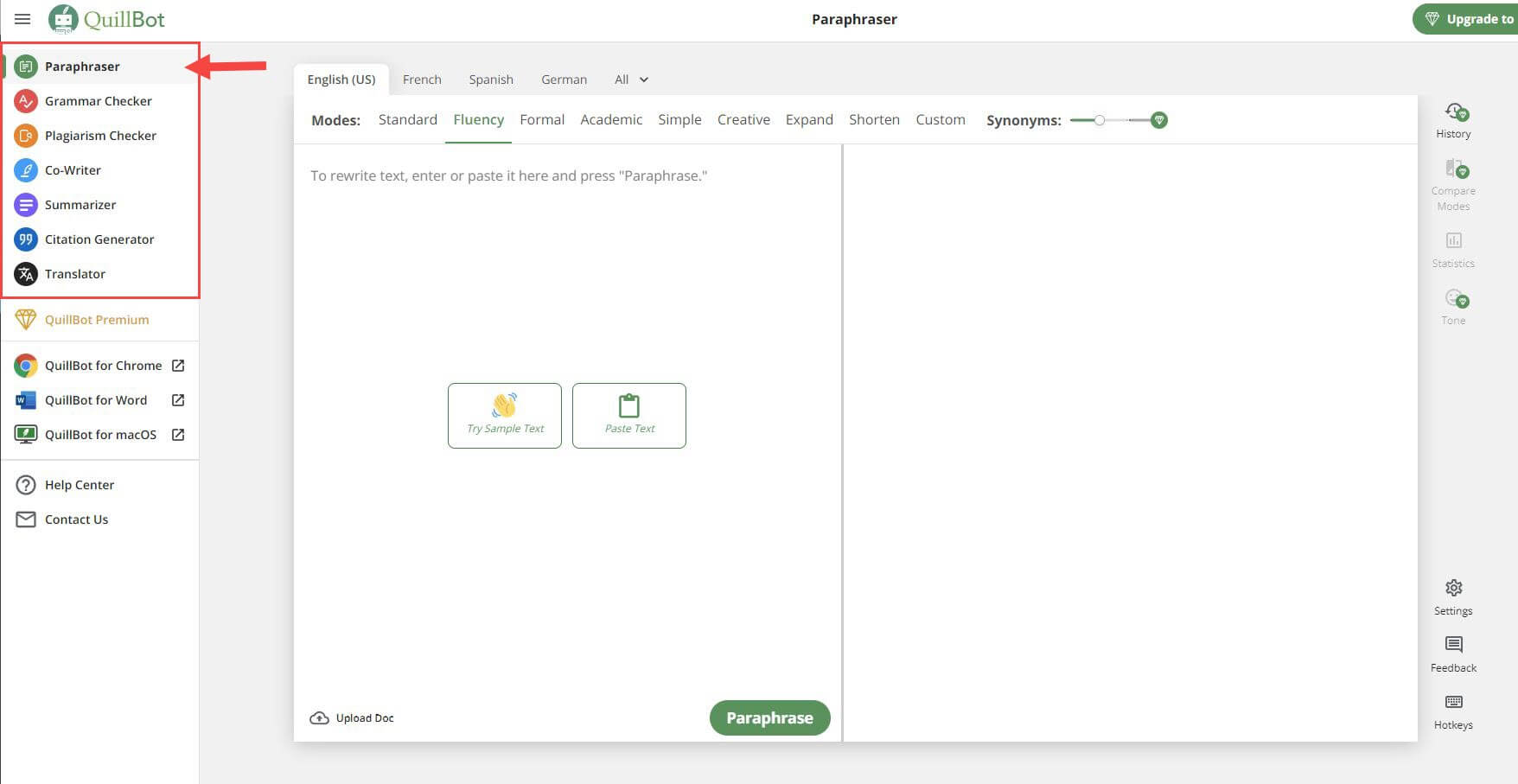
Each tool will have a consistent layout with different features that you can use to start refining your content. For example, when using the Grammar Checker, you can copy and paste your content into the user interface. QuillBot will readily analyze your text, pinpointing broken sentences and grammatical errors you can fix with a single click.
And the other other tools share the same easy-to-use interface and functionality. For instance, the Summarizer makes condensing long-form content or essays easy. Paste your text to generate a summary of key points. Additionally, it features a plagiarism checker, which helps identify and fix plagiarized content to ensure the originality of your content.
QuillBot’s AI functions by learning from datasets. Comprehending grammar, spelling, punctuation, tone, sentence structure, and readability, these datasets serve as knowledge accumulations. So, when users regularly disregard a specific suggestion, the AI adjusts to present more contextually relevant alternatives.
Breaking Down QuillBot AI Features
QuillBot AI offers several features for easy and effective content organization. We’ll delve into these features now.
1. The Paraphraser
QuillBot AI includes a paraphrasing tool. It empowers writers to rephrase text while preserving its central message. It’s an ideal tool for students and aspiring authors, requiring no account signup. Options for ‘Fewer Changes’ or ‘More Changes’ are available, with premium users getting maximum adjustments.
Paraphrase Modes
QuillBot AI assists users in paraphrasing and refining text. It employs seven unique modes, each tailored to specific objectives, to enhance the quality and readability of written content. Whether striving for clarity, professionalism, creativity, or conciseness, QuillBot AI offers a mode to suit your needs.
Here is an example sentence I added to the paraphraser text input area:
“It was a tough match. After three hours of immense struggle, I was able to get the job done.”
1. Standard Mode
Standard Mode serves as the default setting. It balances modifying the text for clarity and fluency while preserving the original meaning. The result is a refined text that maintains its natural flow and readability.
After clicking the Rephrase button, QuillBot swiftly provided a paraphrased output in Standard Mode. It merits noting that the level of paraphrasing hinges on the level of synonyms you set in the Synonyms bar at the right of the Modes bar above the content. The higher the level, the more liberty you give QuillBot to change the words of the original content.
The ensuing result was generated with a low Synonyms bar:
“It was a challenging game. I had to struggle for three hours before I was able to finish the task.”
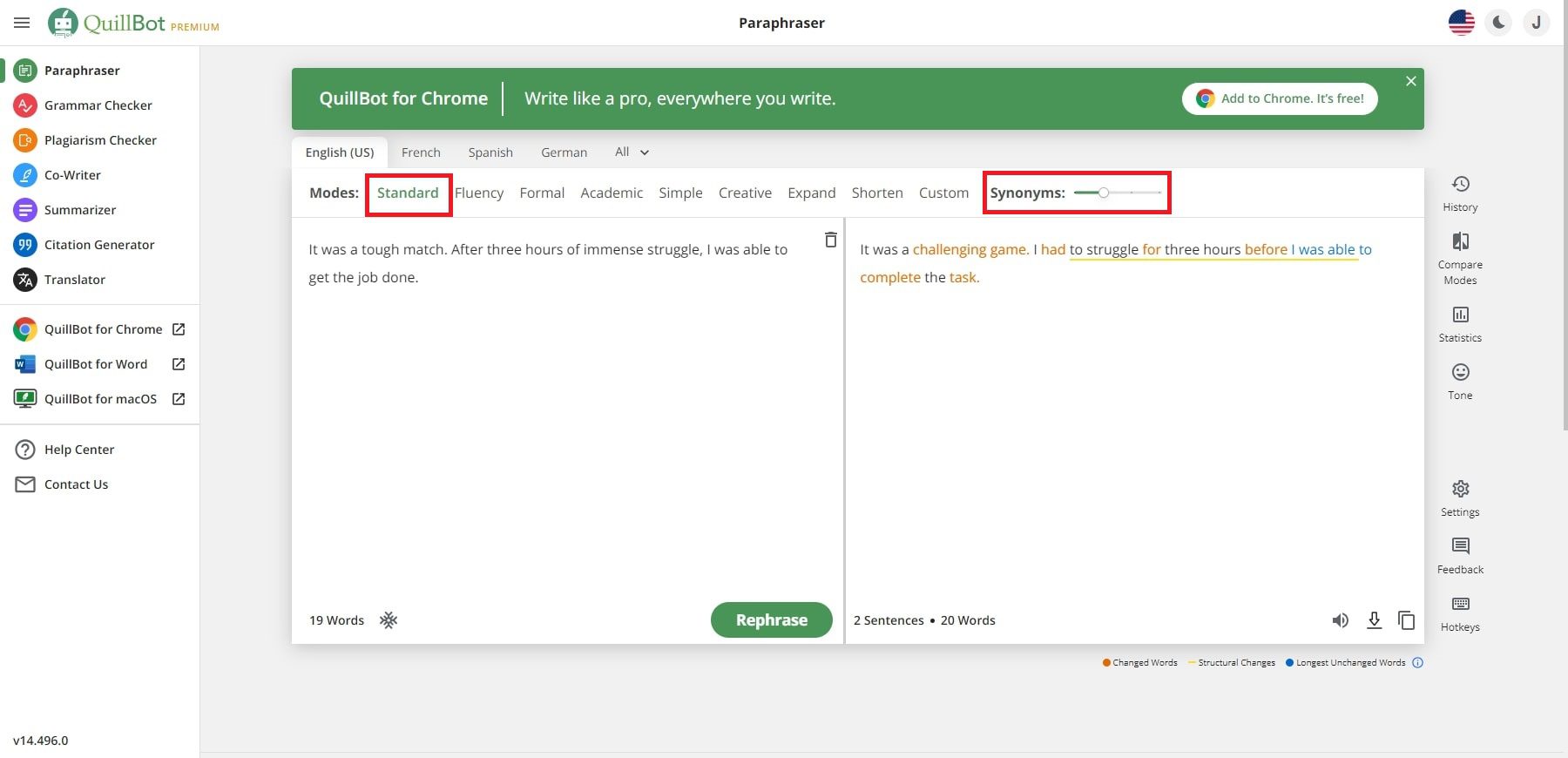
The following result was generated with a maximum level of Synonyms:
“It was a challenging game. I had to battle for three hours before I was able to finish the task.”
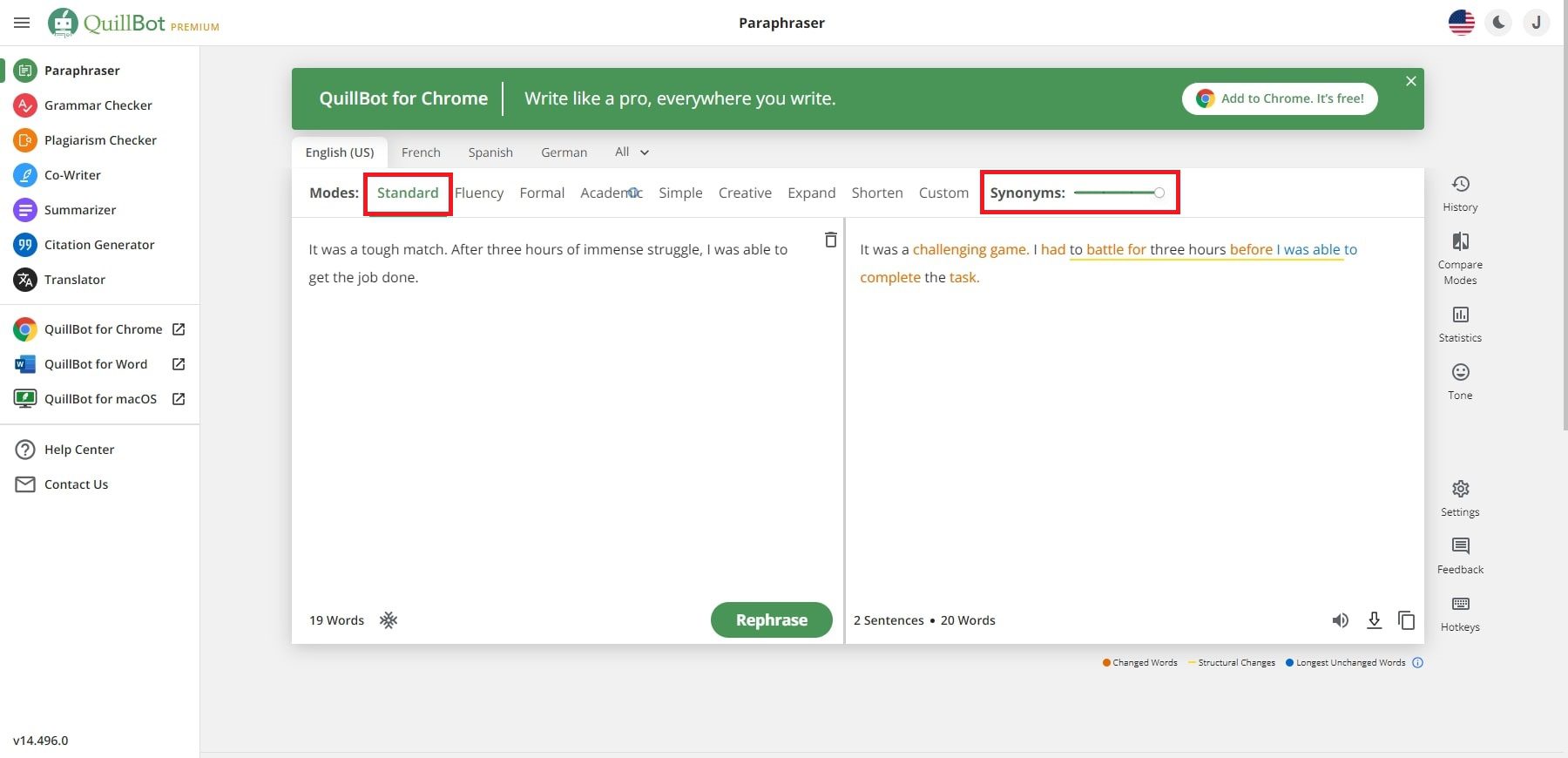
With just one sentence, you can see that only one word changed, but with larger blocks of content, you will see that QuillBot will make more word changes with a higher level of synonyms.
2. Fluency Mode
In Fluency Mode, QuillBot AI ensures that the text is grammatically sound and genuinely readable. It makes minimal changes, primarily correcting grammar and providing the text sounds natural. Synonym substitutions are kept to a minimum, preserving the original meaning.
We paraphrased the same content in Fluency mode . It generated the following output:
“It was a difficult match. I completed the task after three hours of intense effort.”
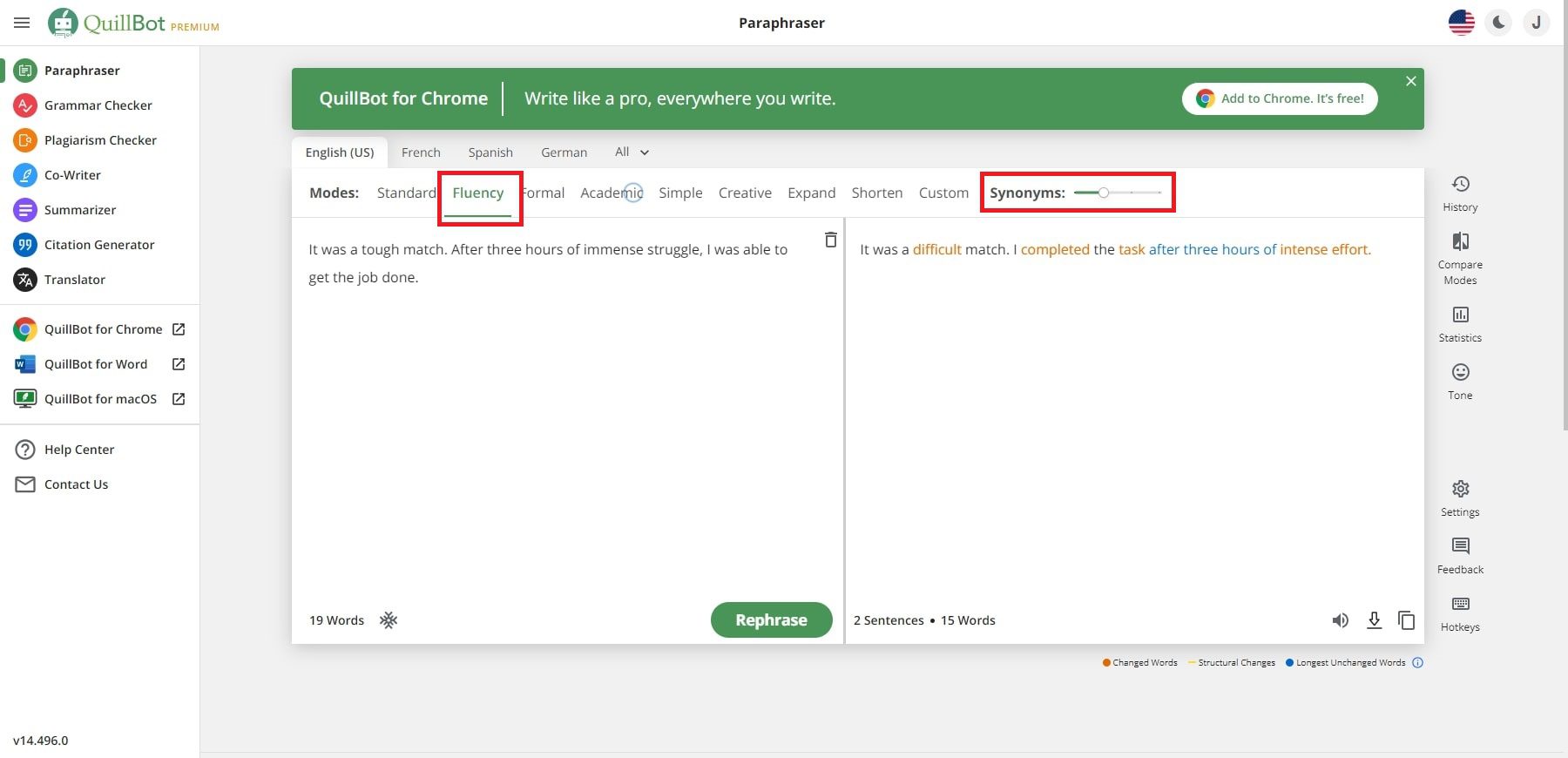
3. Formal Mode
Formal Mode is the ideal choice for those working in academic or professional contexts. It transforms the text to sound more polished and professional, making it suitable for business reports, academic papers, and formal documents.
We paraphrased the same content in Formal Mode . It generated the following output:
“ It was a difficult match. After three hours of arduous effort, I was able to complete the task. ”
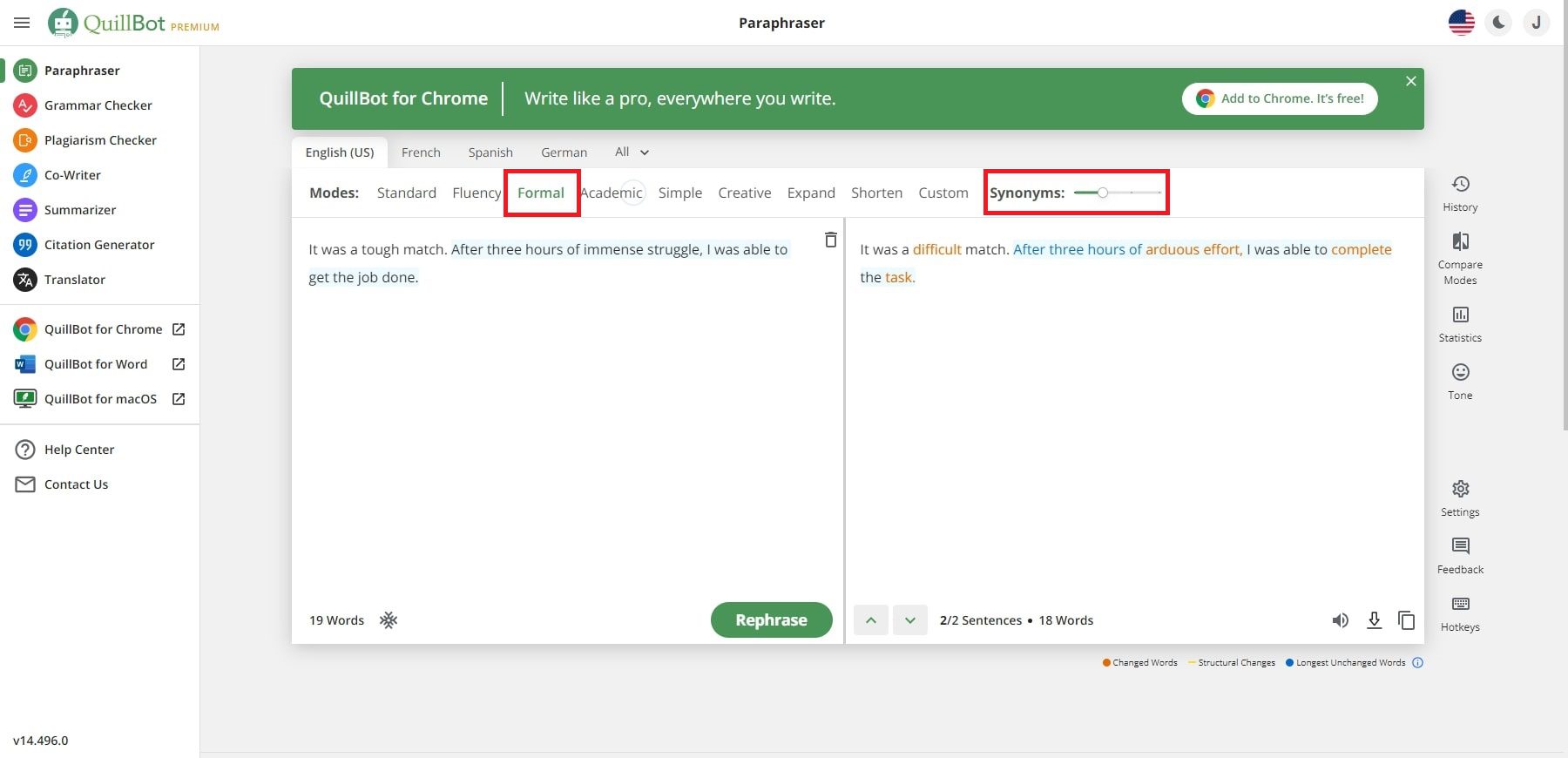
4. Academic Mode
Then, we paraphrased the same content in Academic Mode . Unlike the other modes, it doesn’t have any Synonyms bar. Instead, it seemed to give the content more details and wording suitable for academia. It generated the following output:
“ The contest was challenging. Following a prolonged period of three hours, characterized by significant exertion and effort, I successfully completed the task at hand. ”
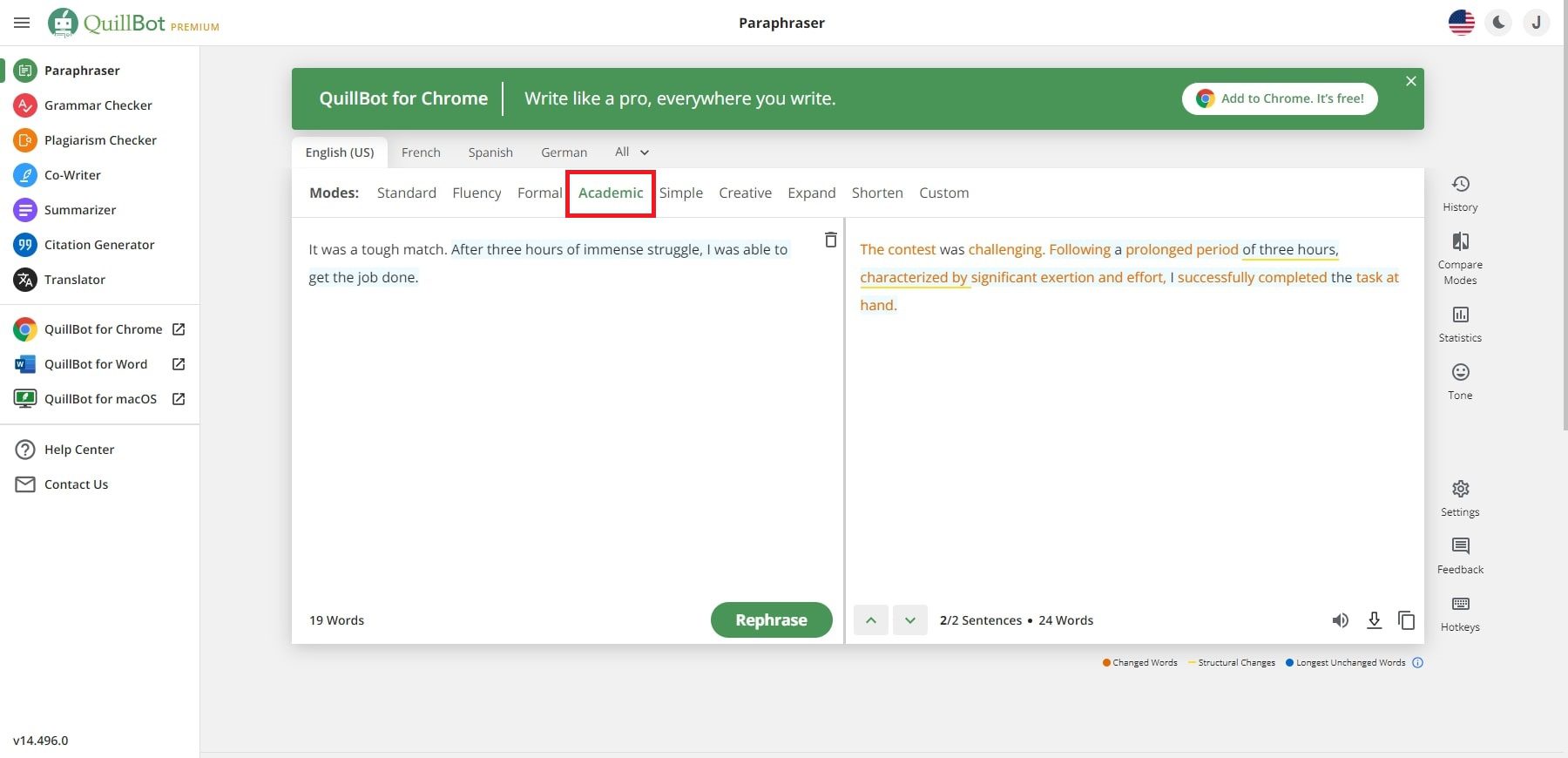
5. Simple Mode
Simple Mode simplifies the text, making it easier to understand and more accessible to a broader audience. It is an excellent choice when clarity and straightforward communication are essential.
We paraphrased the same content in Simple Mode . It generated the following output:
“ It was a hard game. I was able to finish the job after three hours of hard work. ”
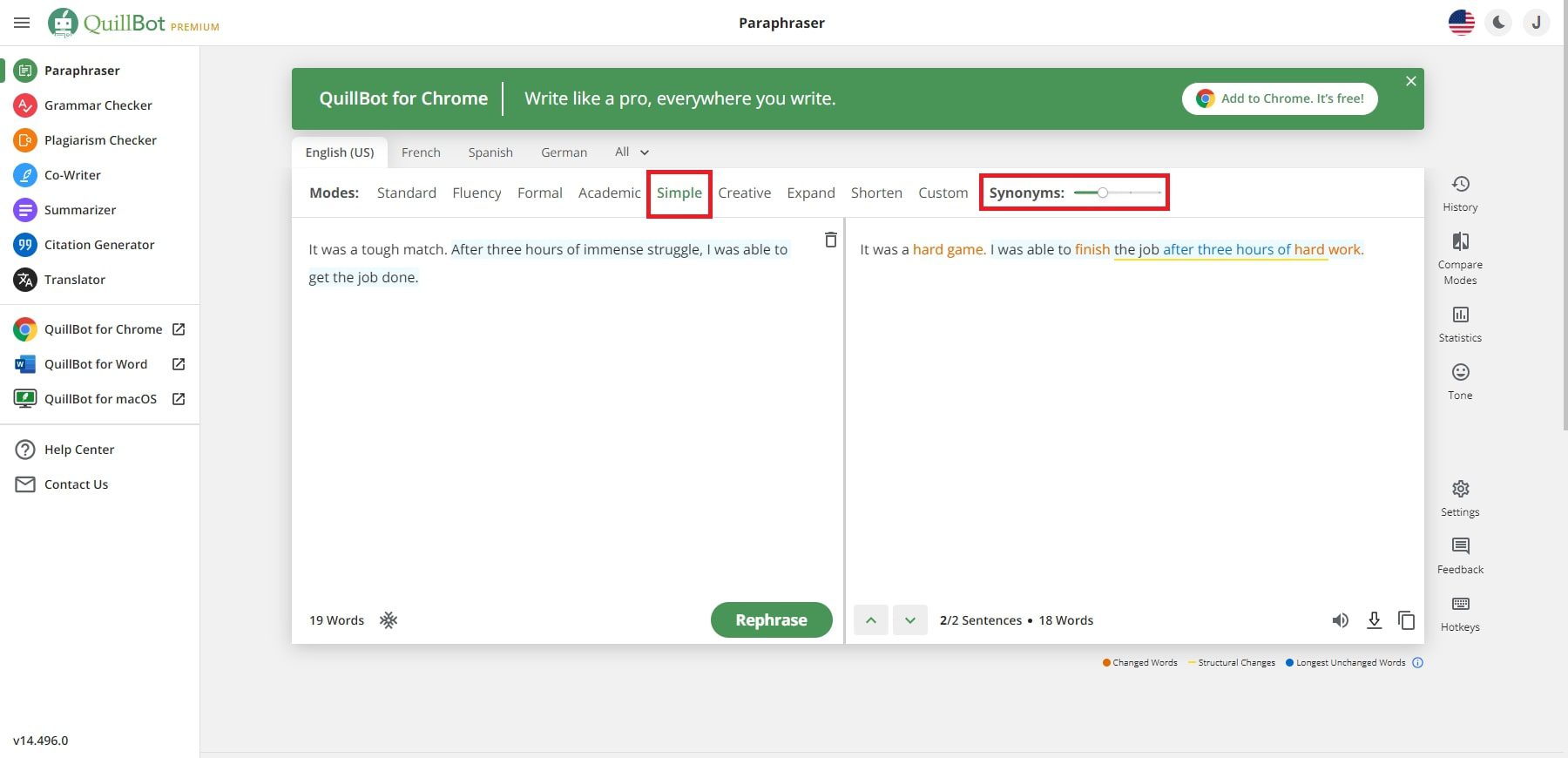
6. Creative Mode
Creative Mode is the way to go if you’re looking to unleash your creativity and generate entirely unique content. This Mode substantially changes the text, potentially altering the original meaning. It’s a valuable tool for content creators seeking a fresh spin on their writing.
We paraphrased the same content in Creative Mode . It generated the following output:
“ That was one intense contest. It took me three hours of relentless effort, but I finally completed the task at hand. ”
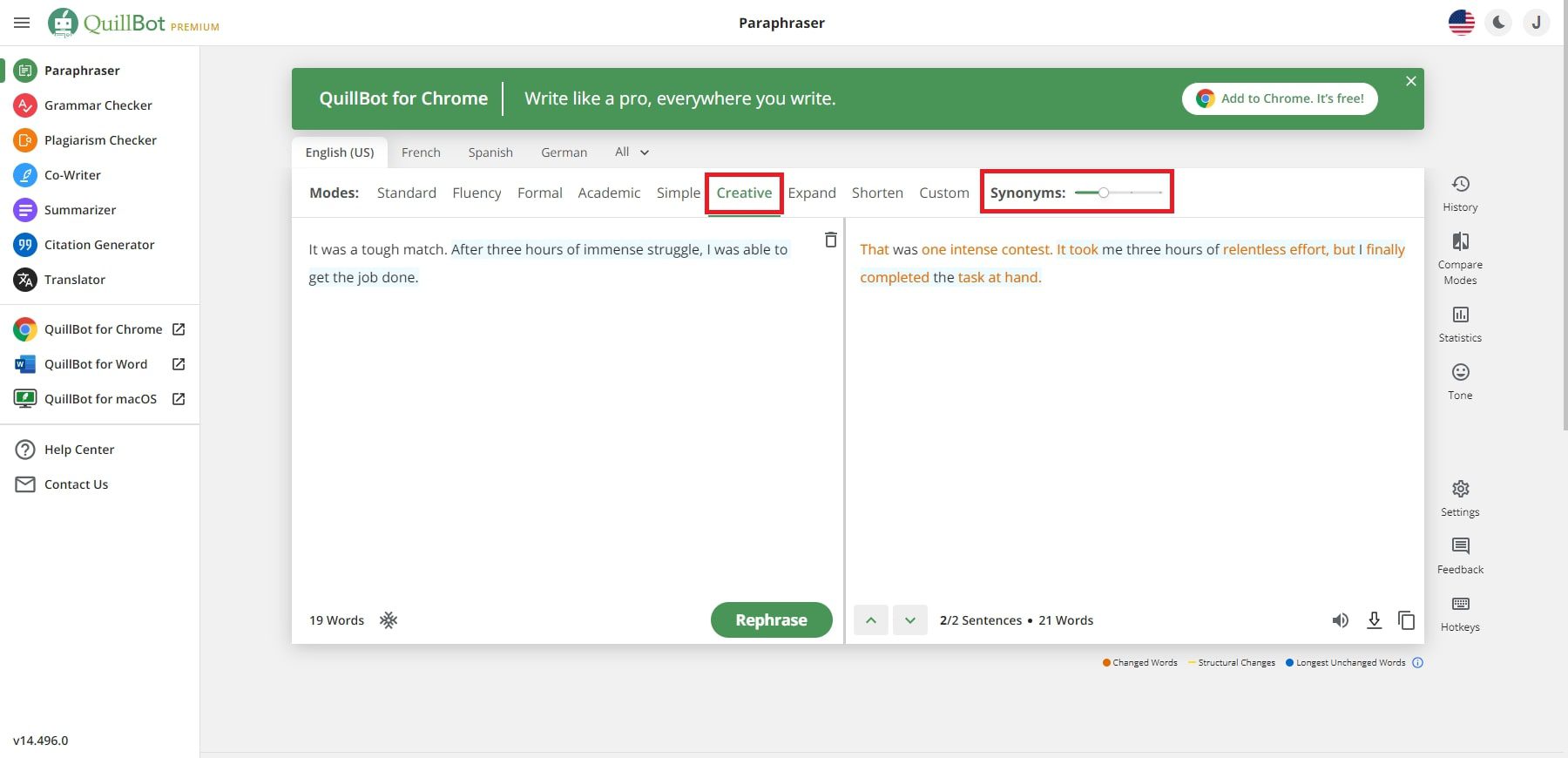
7. Expand Mode
Expand Mode is perfect for those aiming to increase the length of their text. It adds words and details while retaining the original meaning, making it valuable for projects requiring a higher word count.
We paraphrased the same content in Expand Mode . It generated the following output:
“ It was a difficult match to watch. I had to put in a lot of effort for three hours before I was finally successful in completing the task. ”
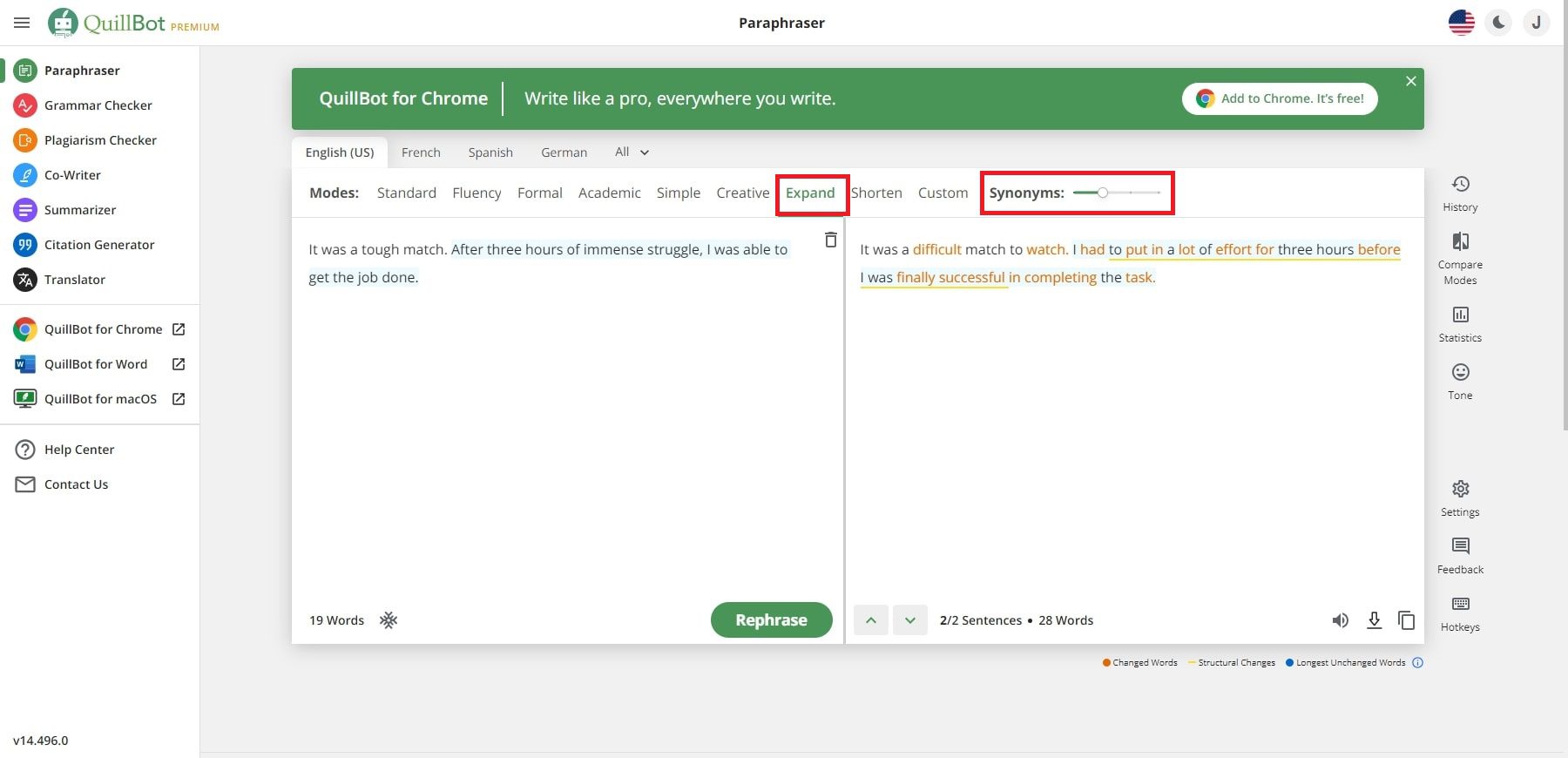
Then, we produced an output with a high level of Synonyms as follows:
“The contest was a challenging one. I was able to finish the work, despite the fact that it took me three hours of intense effort.”
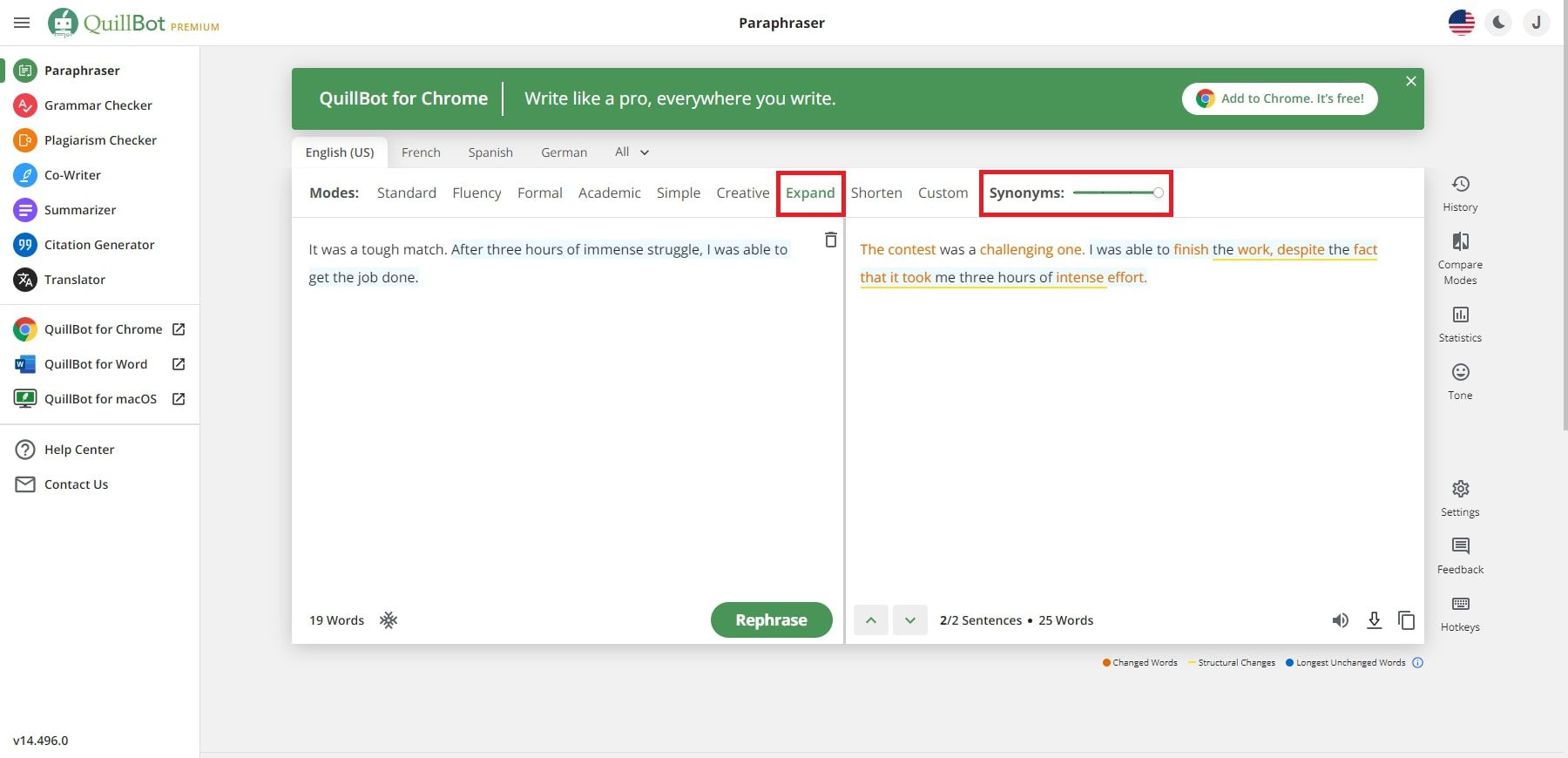
8. Shorten Mode
Shorten Mode comes to the rescue when you need to reduce the overall word count while maintaining the essence of your text. It trims unnecessary words and phrases, delivering a concise version of your content.
Lastly, we paraphrased the same content in Shorten Mode. It generated the following output:
“ The match was hard. I finished after three hours of intense struggle. ”
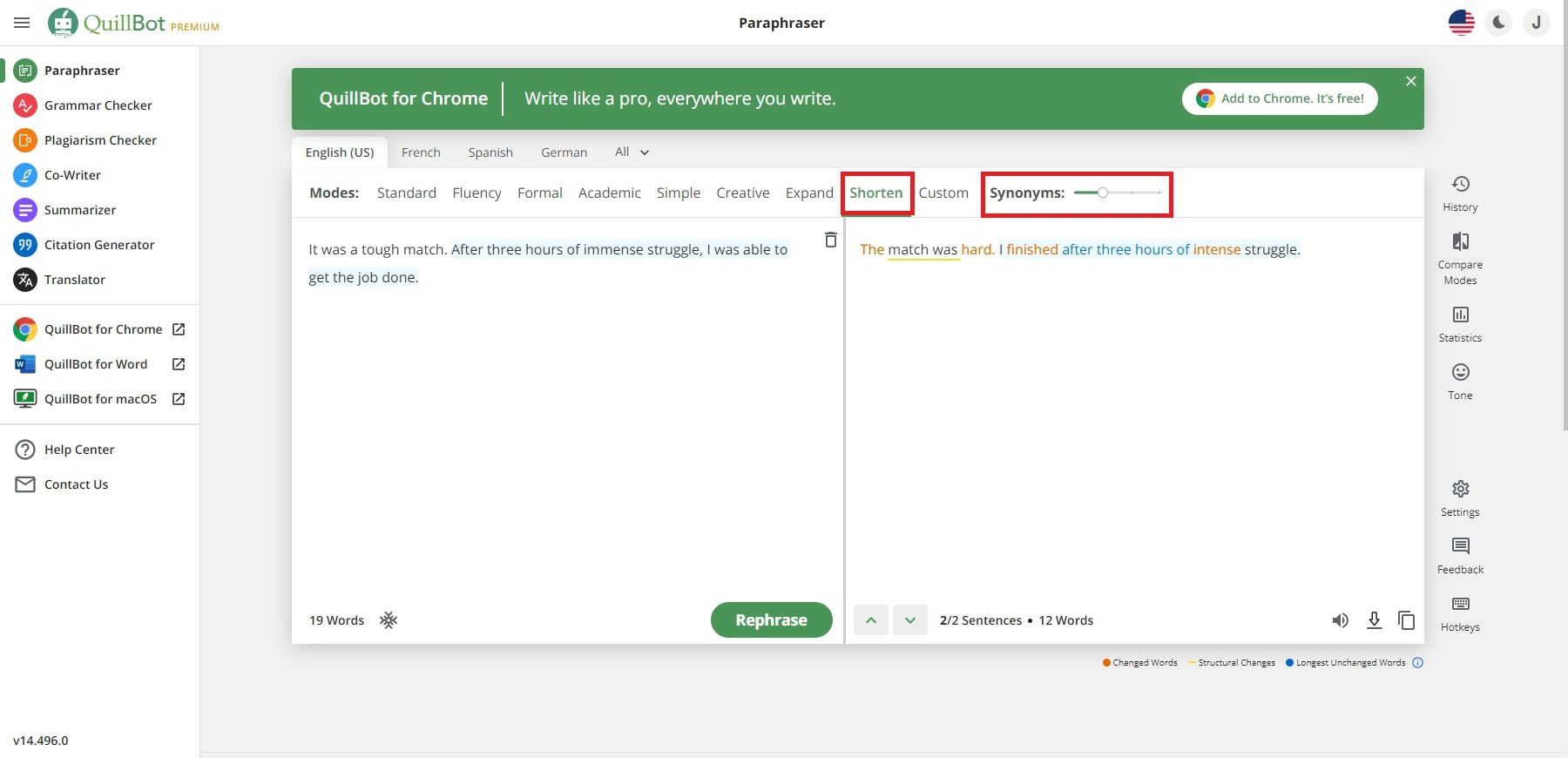
Paraphraser Statistics
The ‘Statistics’ feature offers insights into text complexity and readability. It aids writers in adjusting their style to the desired tone and audience. Premium subscribers unlock tonality analysis, which assesses reader perceptions to enhance persuasive writing.
I have used the same content as the previous one in the “Fluency” mode. It has generated the following statistics.
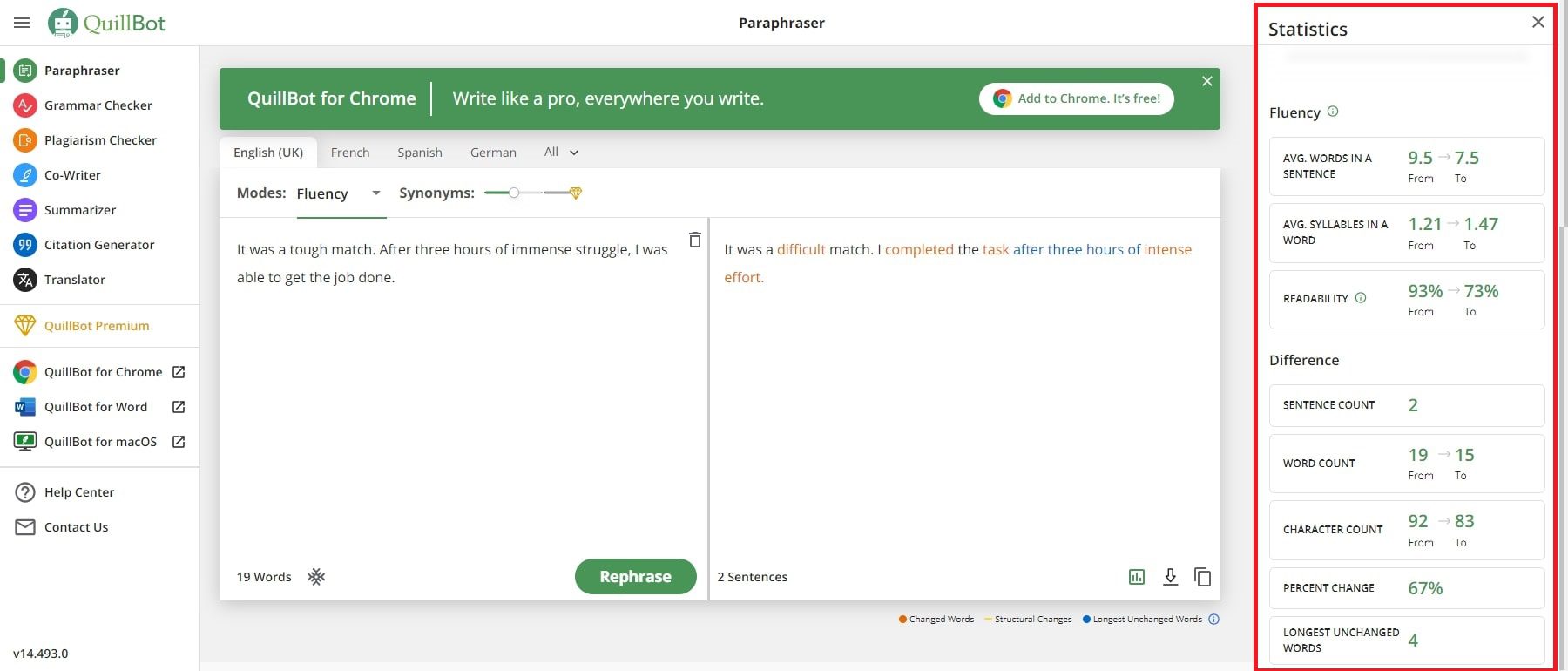
The Statistics of the generated content are based on the following aspects:
- Average words in a sentence
- Average Syllables in a word
- Readability
- Sentence Count
- Character Count
- Percent Change
- Longest Unchanged Words
Paraphraser Settings
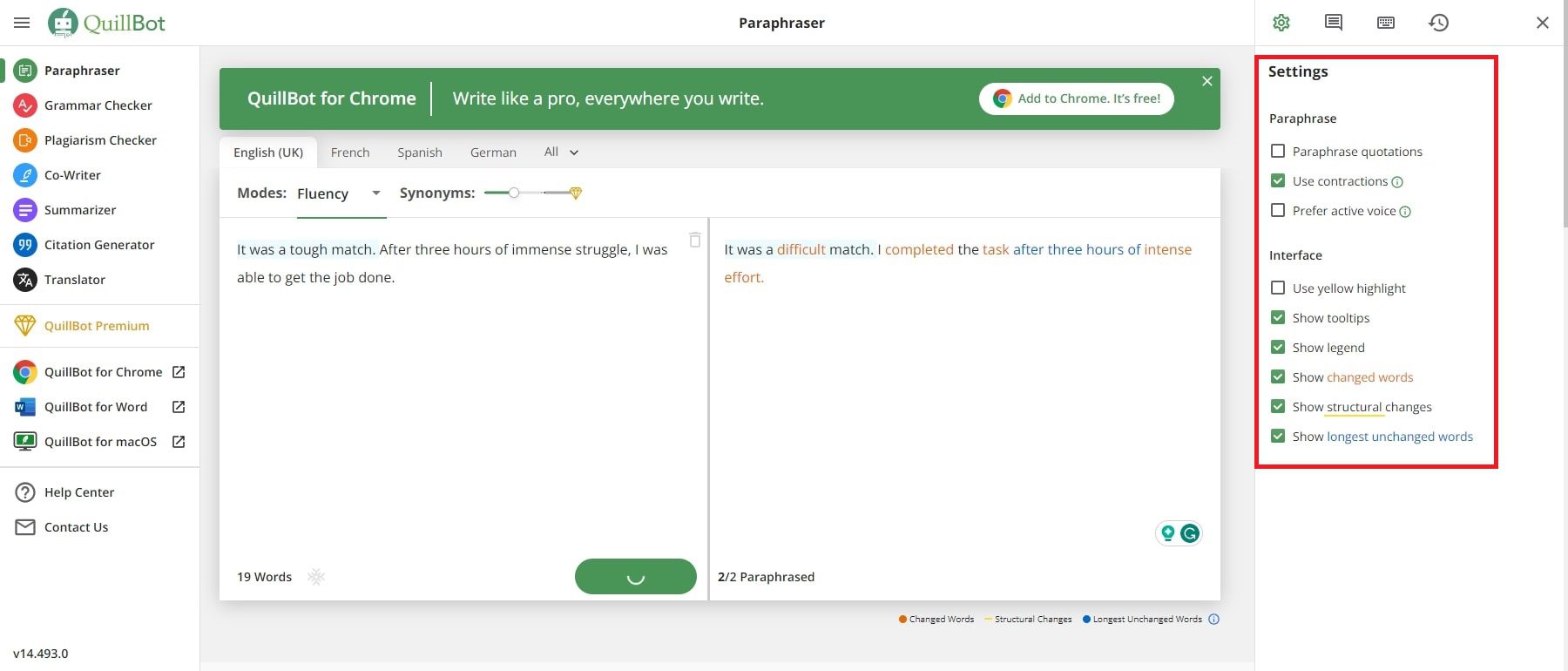
The “Settings” feature in the Paraphraser tool provides options to control how you want your content to be paraphrased and how you want the results to be displayed on the interface. In terms of paraphrasing the content, you choose the following:
- Paraphrase quotations
- Use contractions
- Prefer active voice
Under the Interface options, you can select the following:
- Use yellow highlight
- Show tooltips
- Show legend
- Show changed words
- Show structural changes
- Show the longest unchanged words
Overall, these settings do seem to give users more control and help them identify changes to their content much easier.
Paraphraser Compare Modes
Compare Modes is a valuable feature exclusively available to premium users, offering a comprehensive view of how a sentence is transformed across different modes within the platform. This feature enables users to evaluate and choose the most suitable rendition for their content by comparing various paraphrased versions. To access Compare Modes, locate and click on the dedicated icon in the settings bar on the right side of the page.
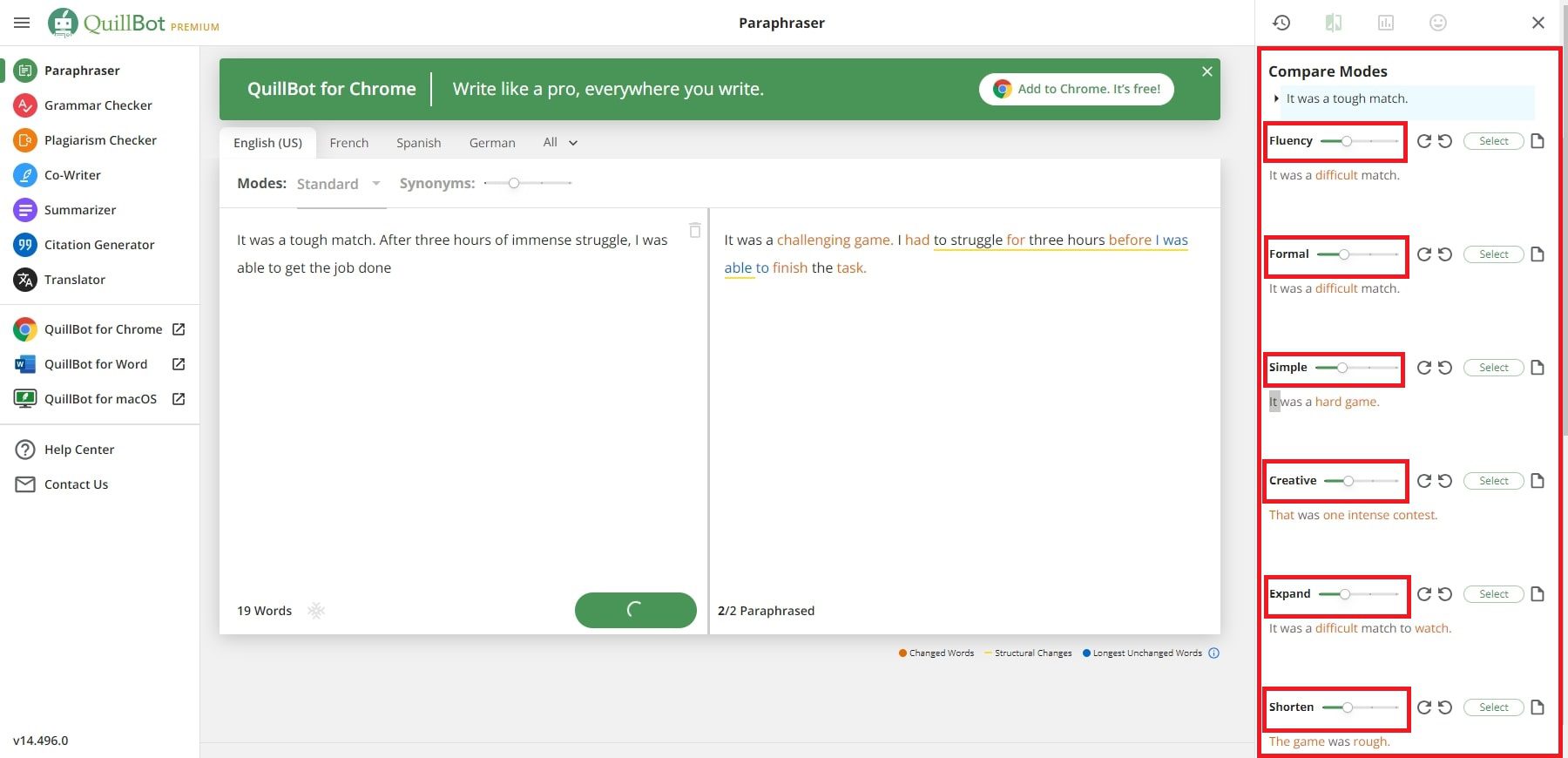
Once activated, Compare Modes opens a sidebar on the right-hand side of the screen, displaying the original sentence before paraphrasing and the results generated by all available modes simultaneously. The system defaults to the effect produced by the Mode in which the sentence was paraphrased. You can easily click the “Select” button next to the desired text to select your preferred sentence, seamlessly replacing the paraphrased sentence in your results. Additionally, you can further modify individual sentence results by clicking on circular arrow icons or making copies of them with a simple click on the copy icon. This powerful feature empowers users to fine-tune their content according to their specific needs and preferences, streamlining the content creation process.
Paraphraser History
By accessing the history feature, you can go through all the previous content you have modified. In my case, I checked my history, and it showed the last text paraphrased. It also shares the date and time when the content was modified.
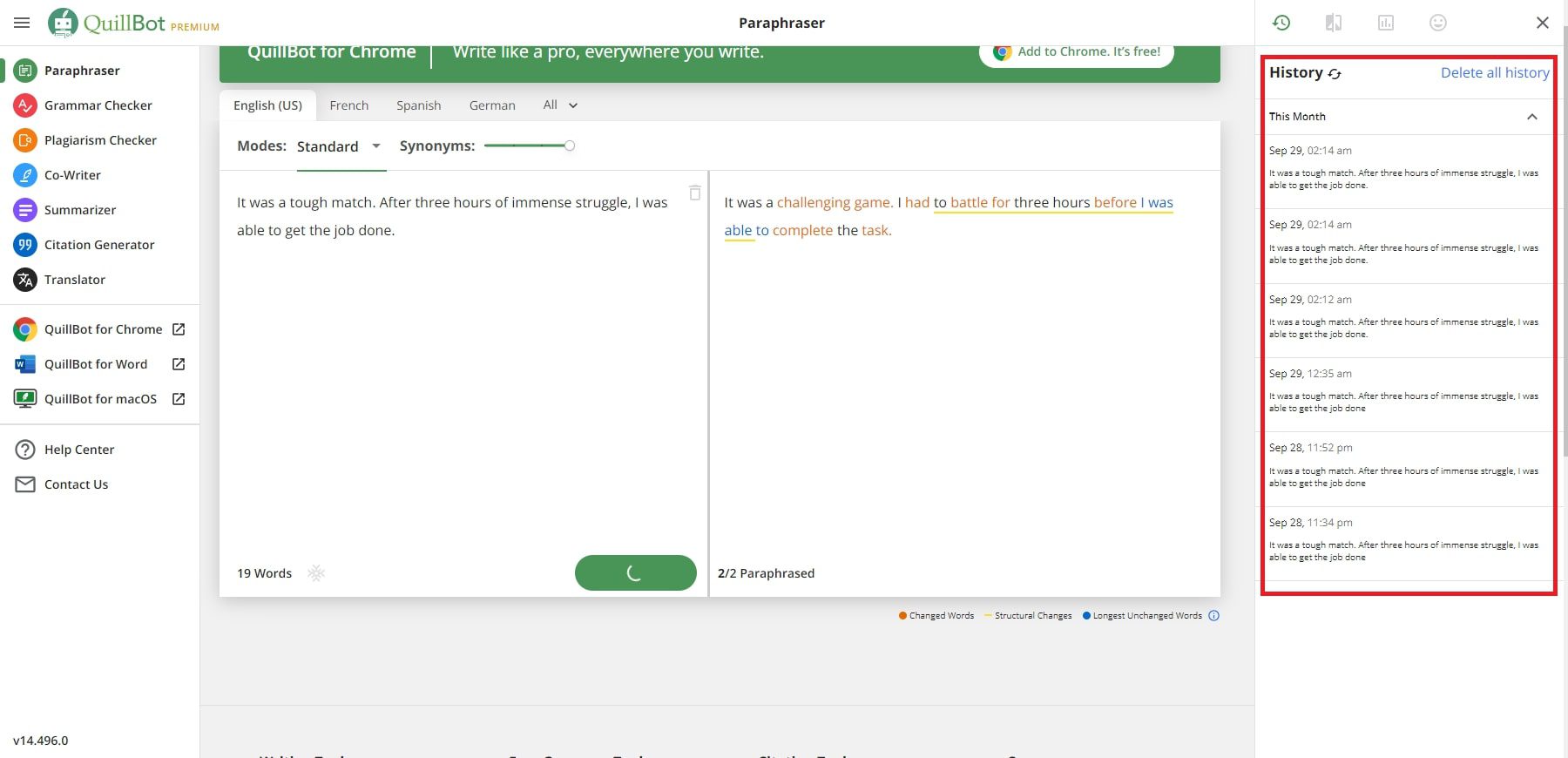
The “Tone” feature in QuillBot AI paraphraser allows users to control and tailor the emotional and stylistic tone of their paraphrased content. With this feature, users can choose from various preset tones, such as casual , unfriendly , wordy , complex , and unclear . It ensures that the paraphrased text aligns perfectly with the desired style and intent. Whether you need your content to sound professional and academic or friendly and conversational, the Tone feature empowers you to achieve the right mood for your writing.
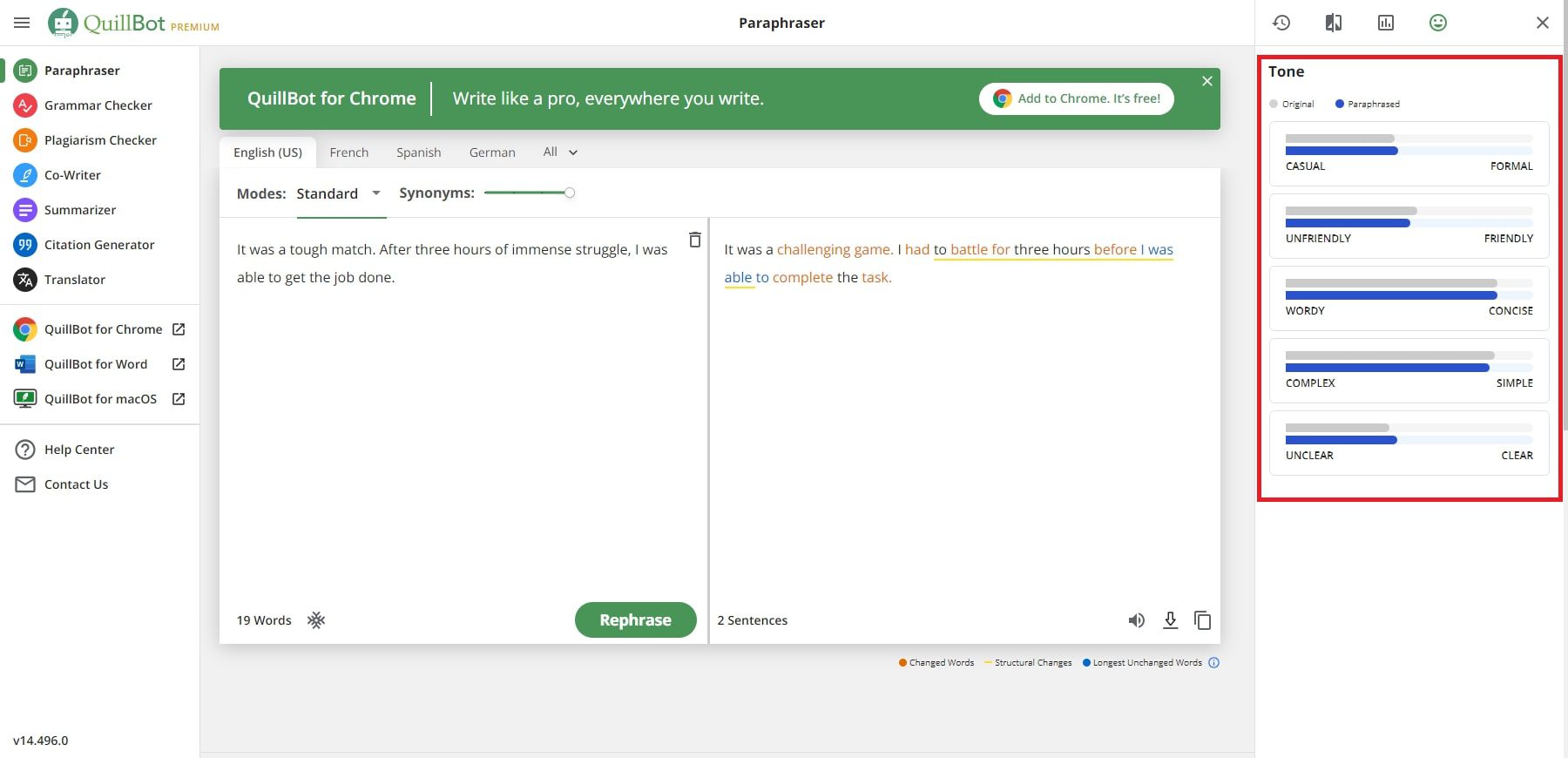
Paraphrasing for Different Languages
Quillbot AI supports 23 different languages for paraphrasing purposes. Not only does this make the tool more accessible, but it also comes in handy for making tweaks to the content generator by Quillbot’s translator tool.
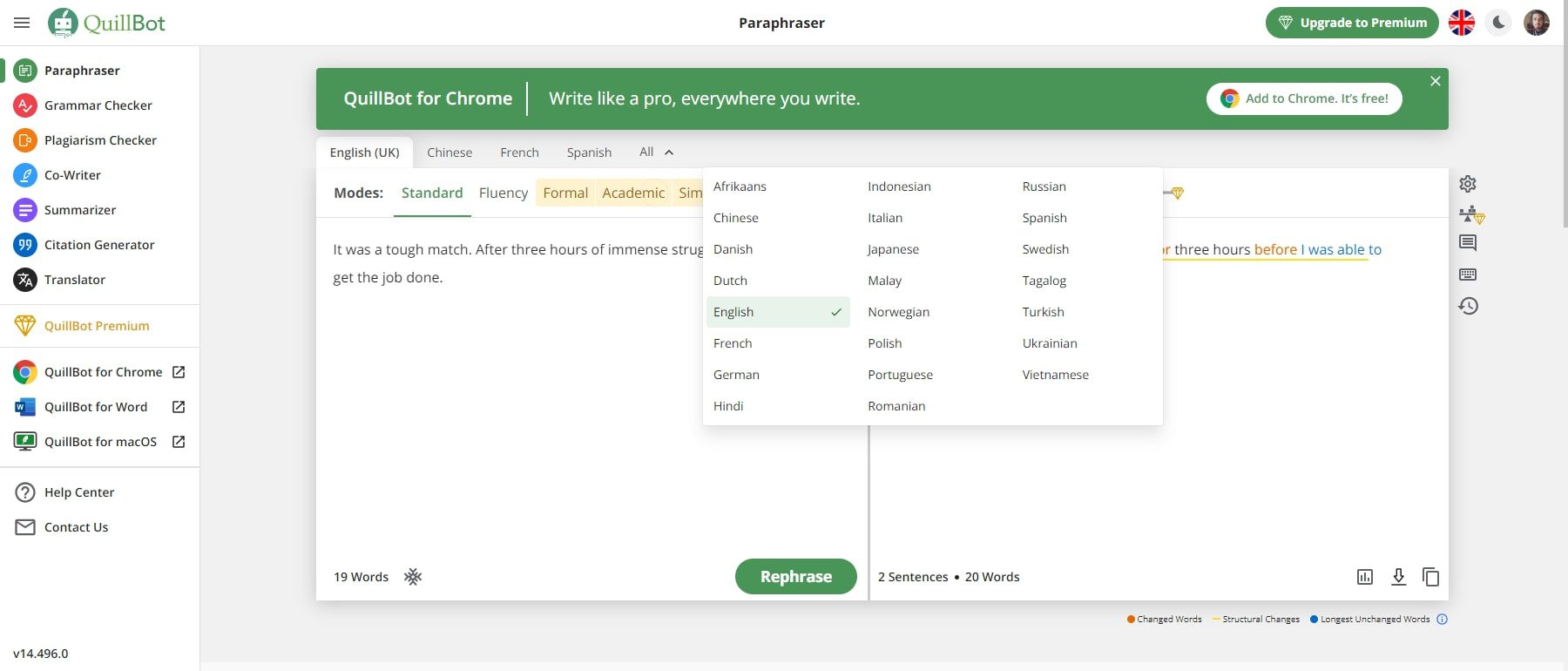
2. The Grammar Checker
Quillbot AI offers a user-friendly and free Grammar-checking feature that doesn’t require signing up. When you paste your text into Quillbot’s editor, it identifies and highlights grammatical errors, including punctuation and spelling. With a convenient Fix All Errors option, you can swiftly correct multiple issues simultaneously. This Grammar Checker enhances writing precision and consistency. It quickly pinpoints potential errors in red, simplifying the editing process. This real-time underlining and instant correction feature saves writers time and improves productivity.
For instance, here is an example sentence I added to the grammar checker text input area:
“ Manchester United signed Sofyan Amrabat on a season-long loan move from Fiorentina. The Morocco midfielder has been desperate to join Erik ten Hag’s team since getting linked to the Red Devils in June. However, Manchester United’s plans differed on Deadline Day as they wanted to sign Fulham’s Joao Palhinha instead. ”
After copy-pasting the text into the Grammar Check, it will detect all the potential errors within the content. By putting your cursor on the underlined words, it will show you the errors individually.
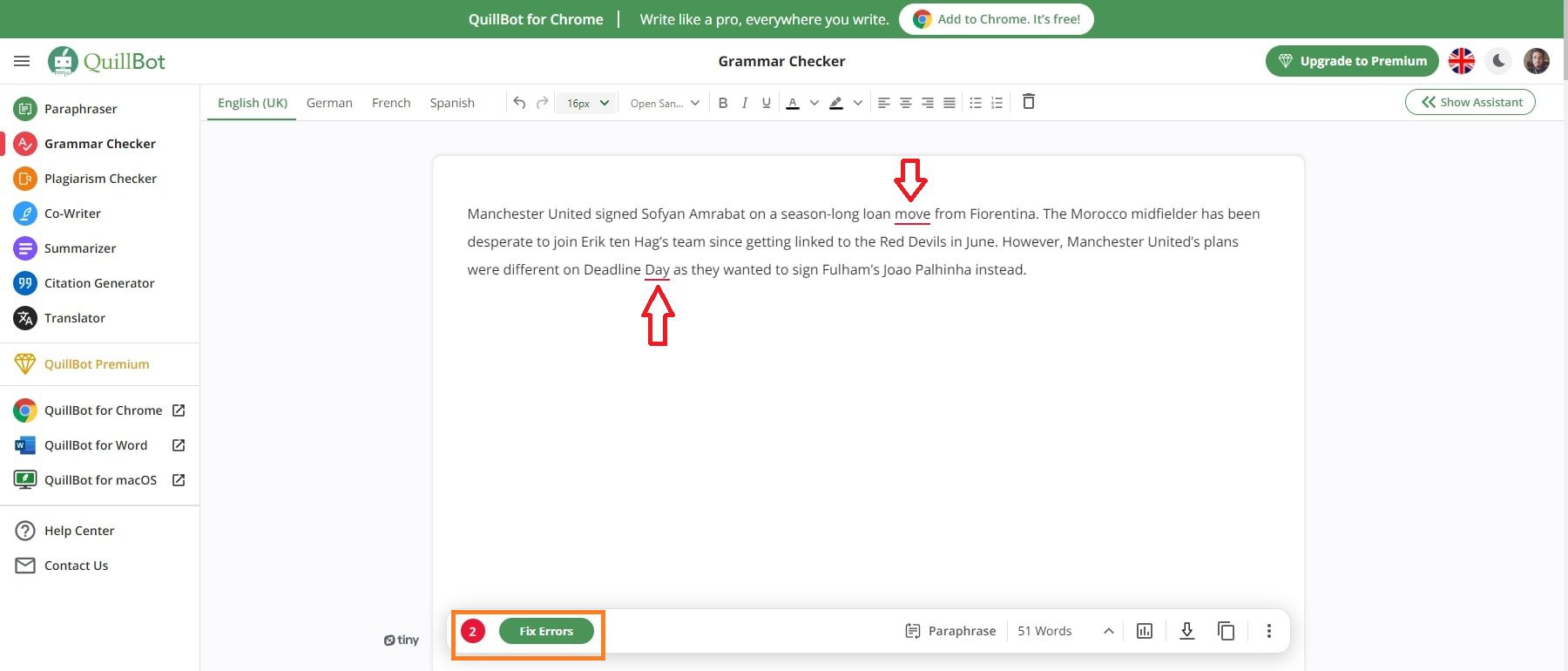
Once you remove all the errors, it will provide you with the correct grammatical content. It will generate the following content.
“ Manchester United signed Sofyan Amrabat on a season-long loan deal from Fiorentina. The Morocco midfielder has been desperate to join Erik ten Hag’s team since getting linked to the Red Devils in June. However, Manchester United’s plans were different on Deadline Day, as they wanted to sign Fulham’s Joao Palhinha instead. ”
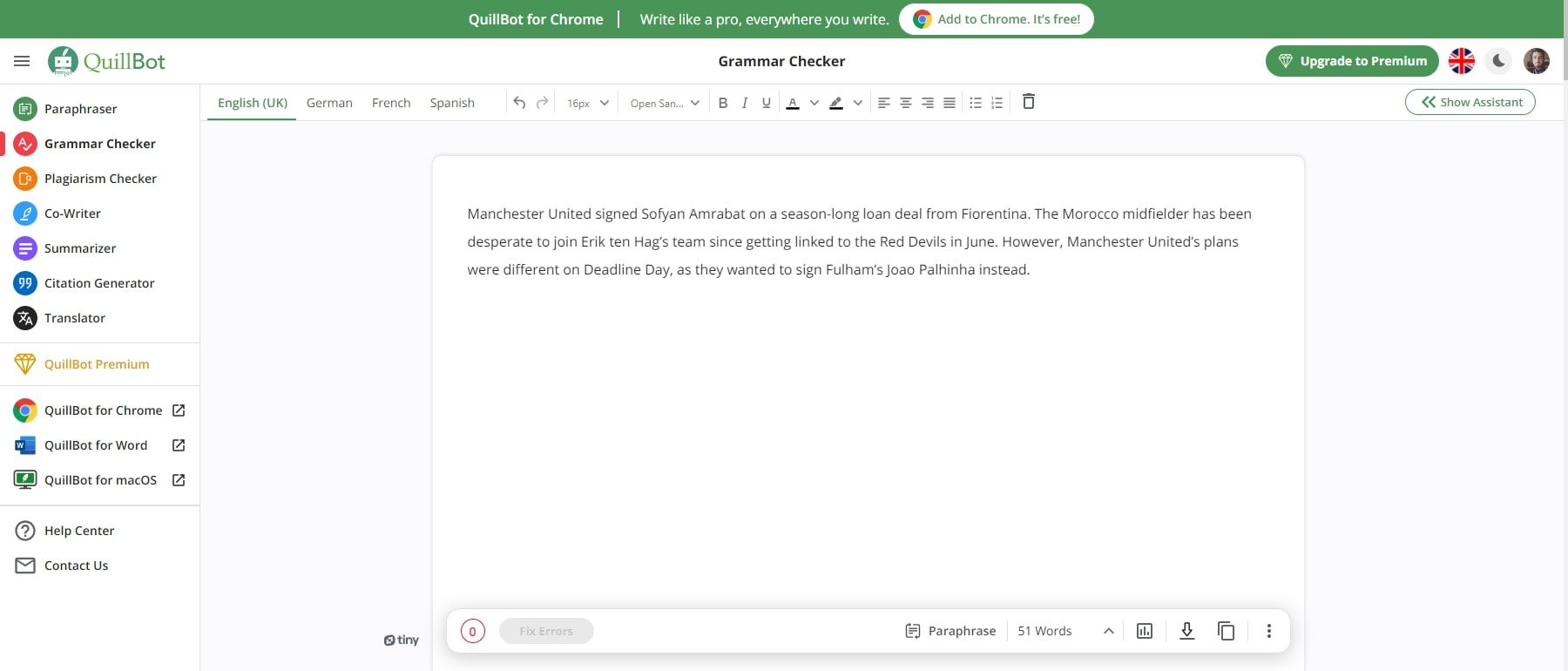
Furthermore, it seamlessly integrates with Quillbot’s Paraphrase tool, offering a comprehensive writing experience without needing an account. Its grammar-checking feature is valuable for writers seeking error-free, professional content.
3. Summarizer
Quillbot AI provides a Summarizer tool that condenses lengthy texts or articles into concise summaries, making it invaluable for students, researchers, and professionals.
Users can choose between Short and Long summarization options to control the level of detail. The Short summarization offers a brief overview, ideal for quickly grasping the central ideas or skimming through multiple articles. In contrast, the Long outline provides a more comprehensive summary, suitable for in-depth analysis or a deeper understanding of the text.
Quillbot AI’s Summarizer utilizes natural language processing to extract critical information while preserving the original context. It offers two summarization types: Key Sentences and Paragraph modes.
For instance, I added a block of content to the summarizer text input area. Using the Key Sentences feature, the tool has created five articulate points that summarize the content.
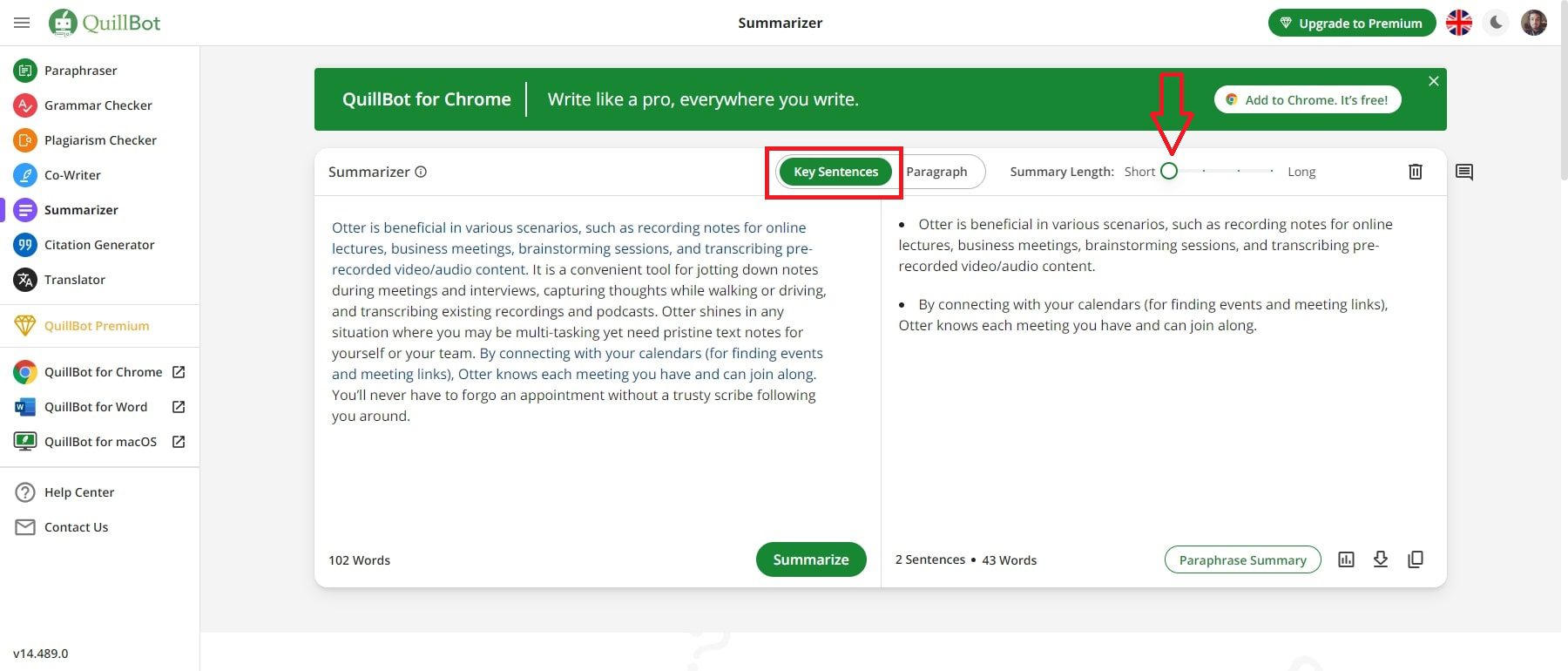
Changing the Summary Length can increase or decrease the depth of those points.
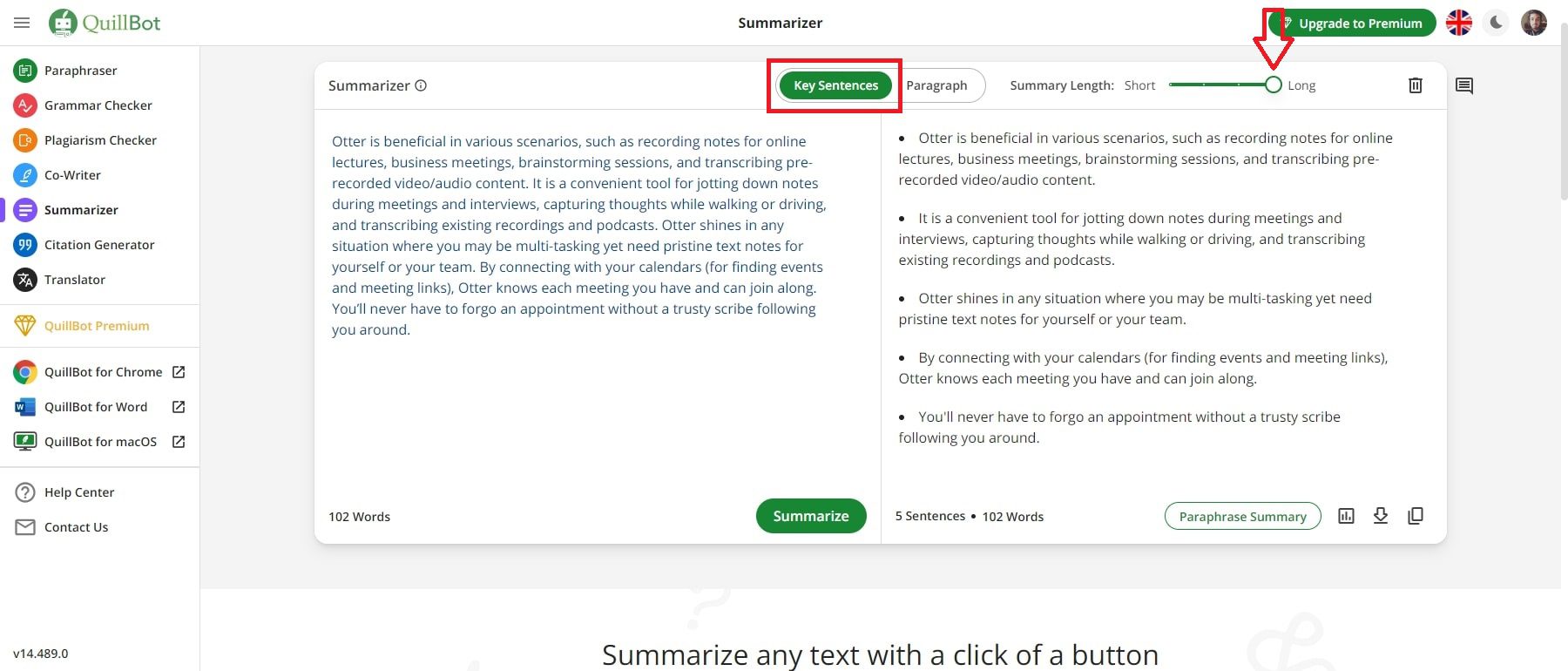
Selecting the Paragraph mode will provide a summary of the content in paragraph form.
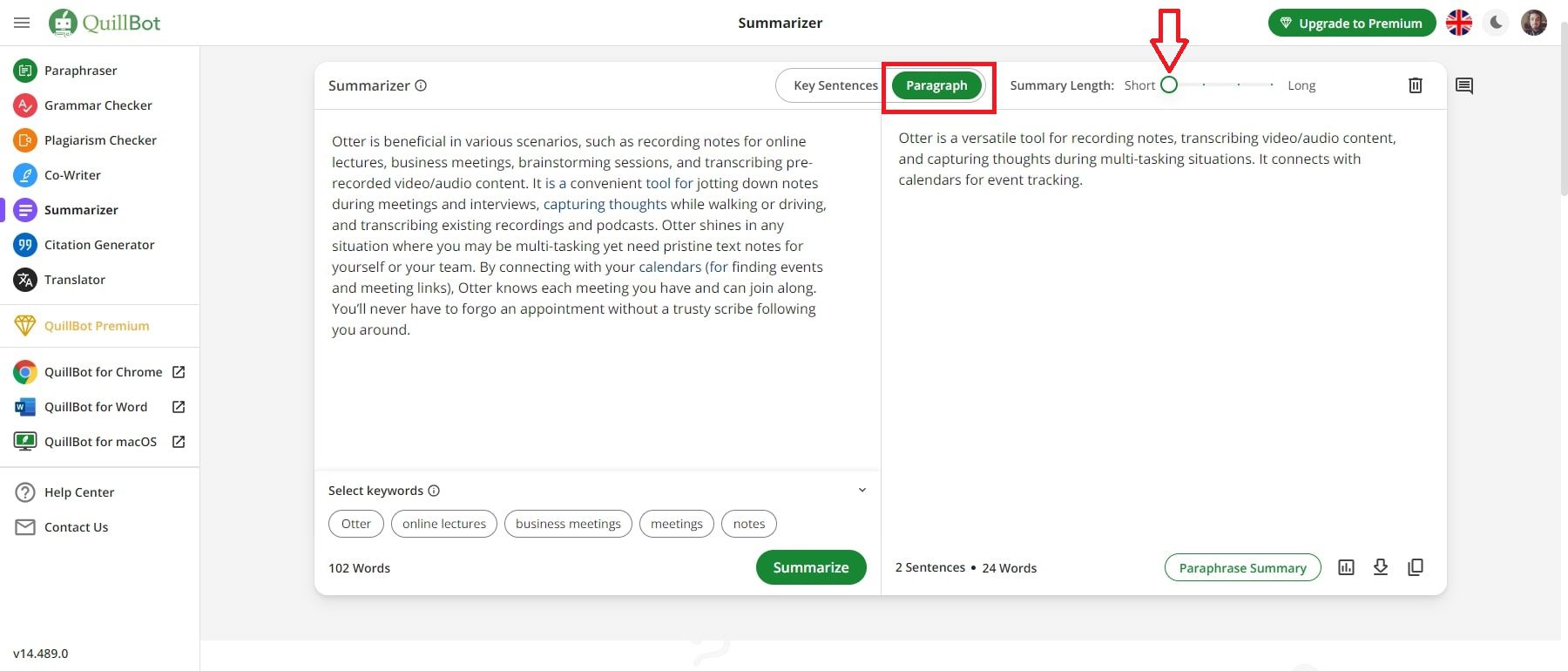
Like the Key Sentences mode, the length of the summary can be changed by adjusting the Summary Length .
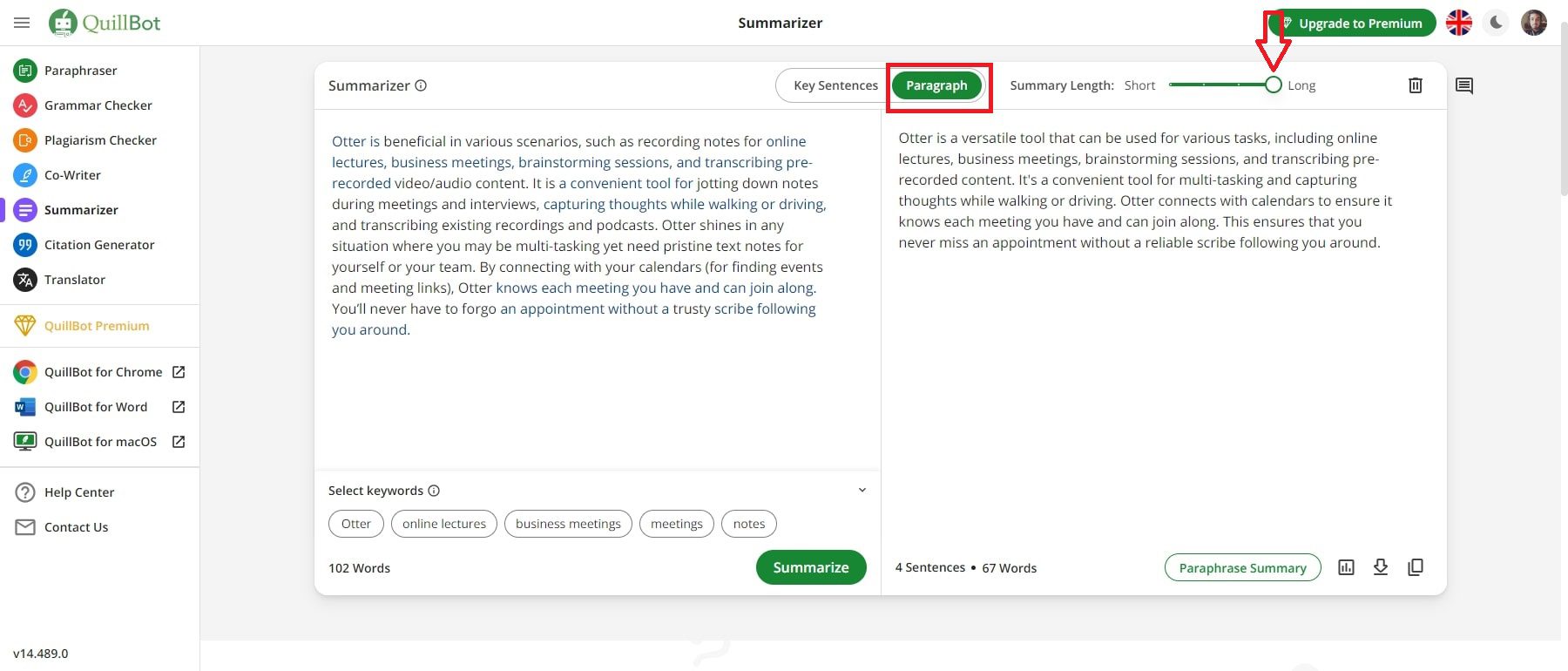
This feature streamlines research, study, and content review processes, enhancing productivity and comprehension for users across various fields.
4. Citation Generator
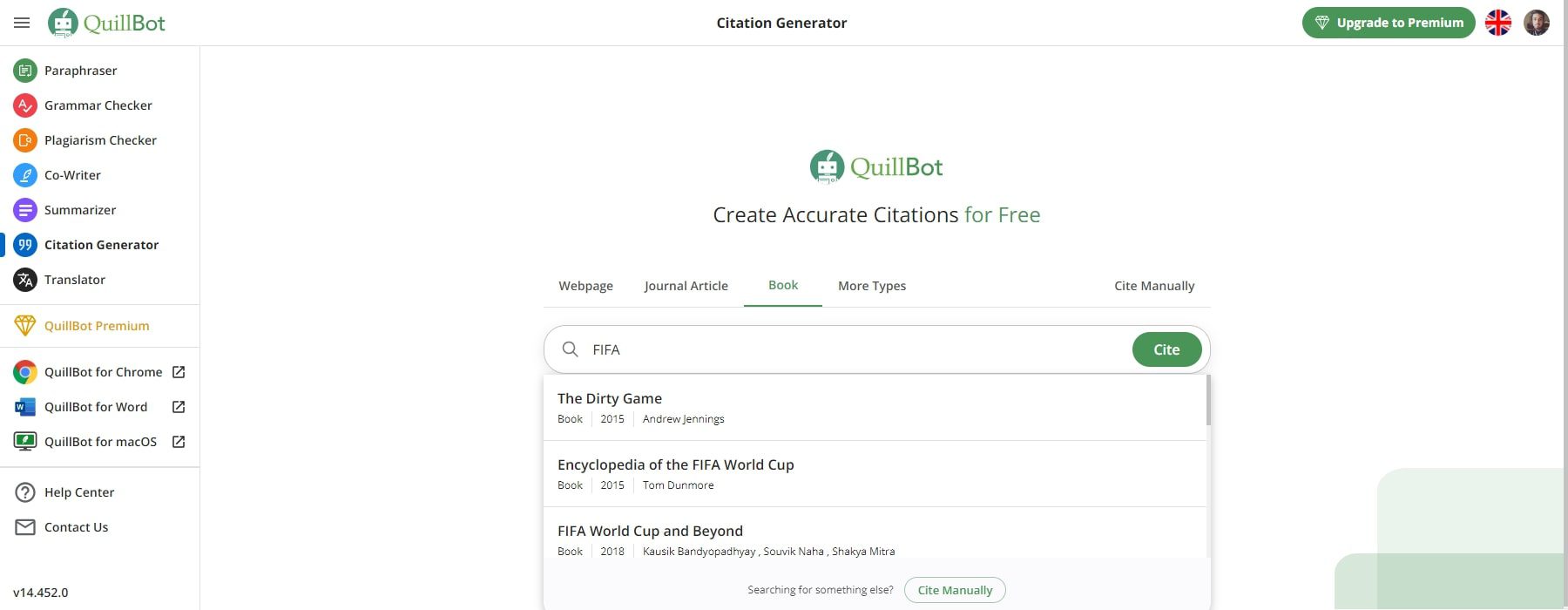
QuillBot’s Citation Generator is a valuable tool that simplifies the often complex process of citing sources in academic and professional writing. It allows users to choose from various citation styles and formats, ensuring compliance with specific guidelines and educational requirements. This feature dramatically reduces the potential headache associated with accurate source attribution.
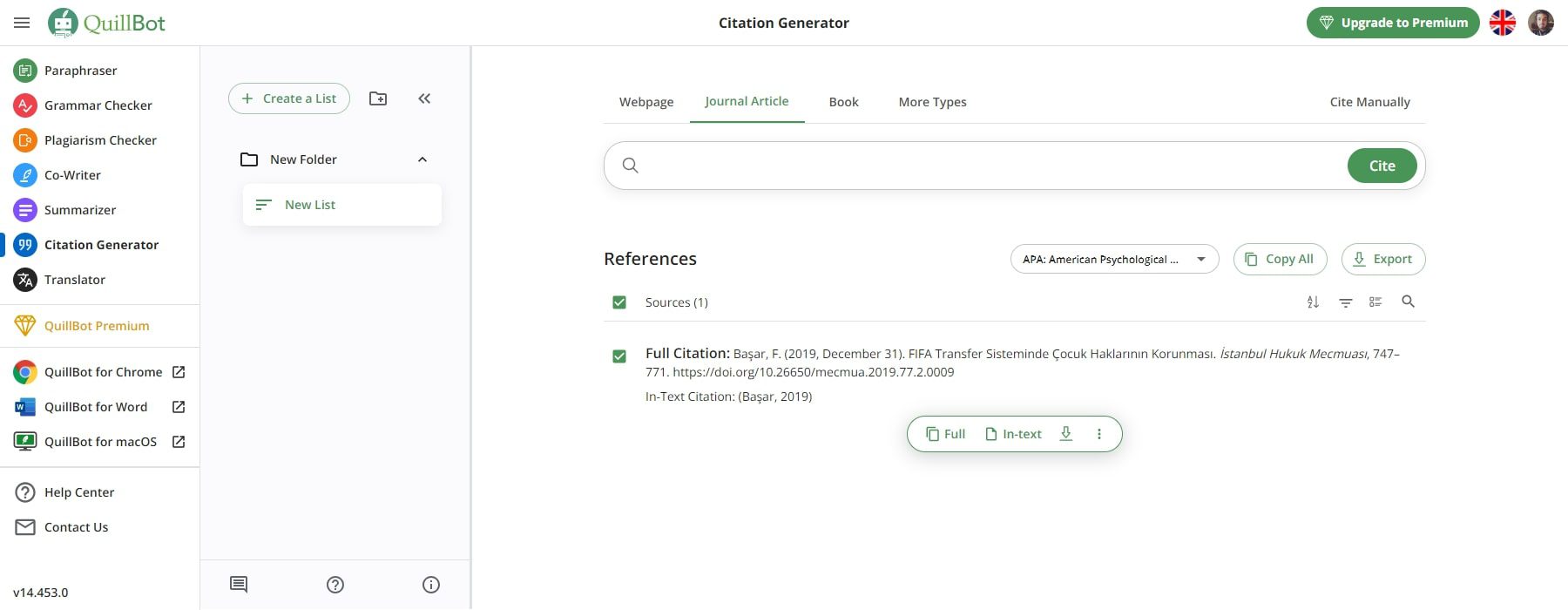
It supports common APA, MLA, and Chicago styles, covering reference types like books and websites. With an intuitive interface, it swiftly generates in-text and complete citations, labeled and exportable to Microsoft Word. By automating this process, QuillBot’s Citation Generator saves users time and ensures proper crediting of sources, benefiting those involved in research and academic writing projects.
5. QuillBot Plagiarism Checker
Quillbot AI provides a plagiarism checker, which is a premium feature. It eliminates the need for external tools to verify content originality. Premium users can paste their content into the checker, receiving results within minutes, indicating if the content is unique or plagiarized. Premium members can scan up to 20 pages per month with this tool, making it suitable for various types of content, including research papers.
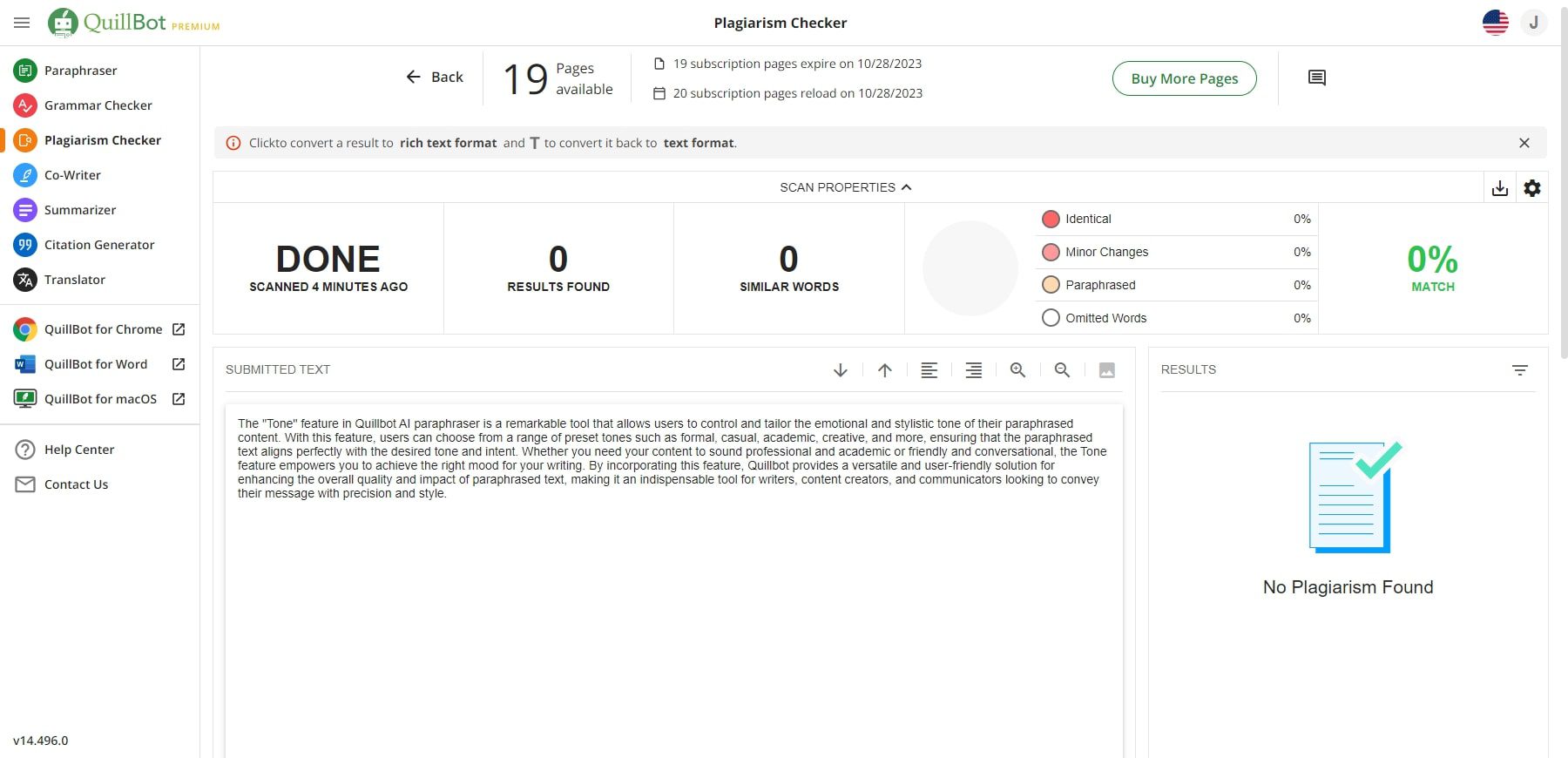
Its plagiarism checker stands out by accommodating research paper plagiarism checks, scanning up to 20 pages (approximately 5000 words) monthly. Consequently, it proves to be a valuable resource for essayists and academic writers, ensuring the integrity of their work.
Plagiarism detection is based on identical words , minor changes , paraphrased words , and omitted words .
6. The Translator
QuillBot AI provides its users with a Translation feature, allowing them to translate text into over 30 languages, making research and writing accessible across language barriers. It offers ad-free translation of up to 5,000 characters at once, includes integrated writing tools, and provides quick and accurate translations. The best part is that it’s free, enhancing convenience and accessibility for writers and researchers.
As a test, I added a block of content in the German language. The translator automatically detected it as German.
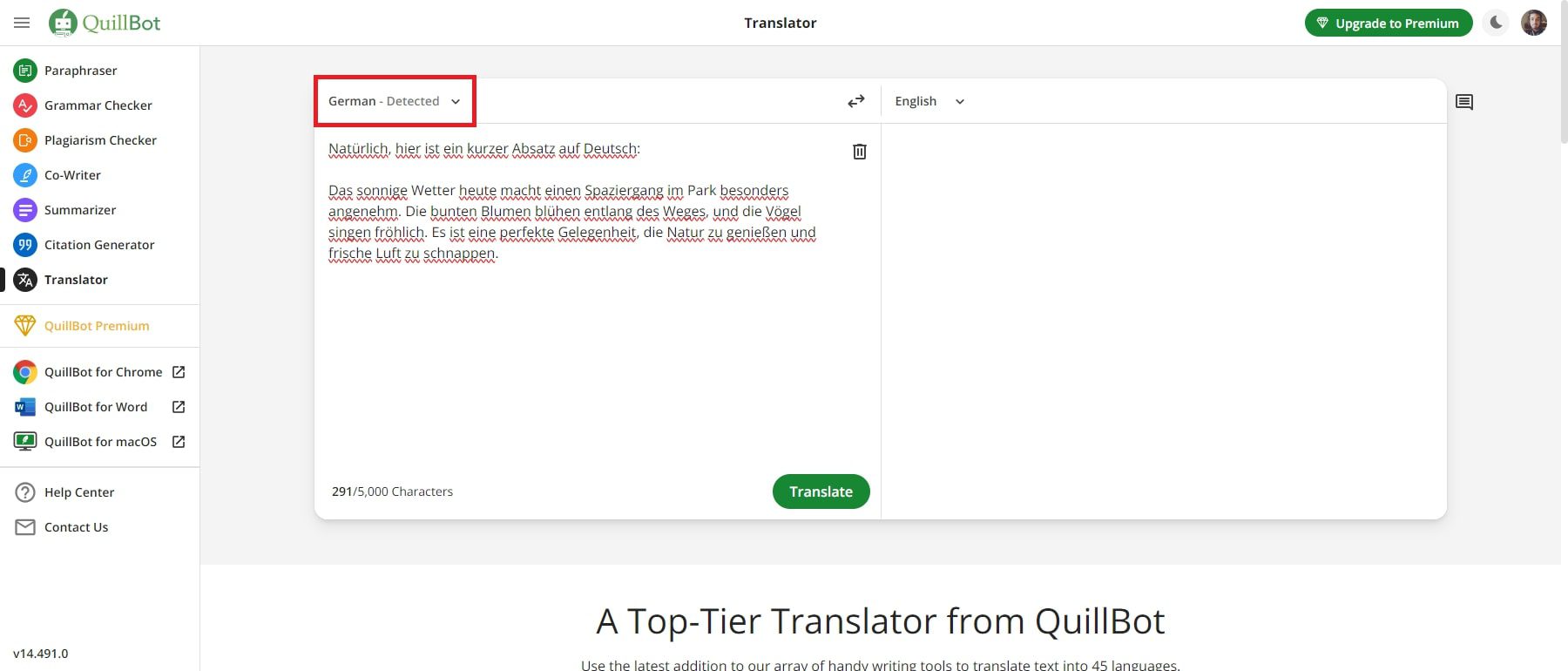
Then all you need to do is select the language you want it translated to on the right and click the Translate button.
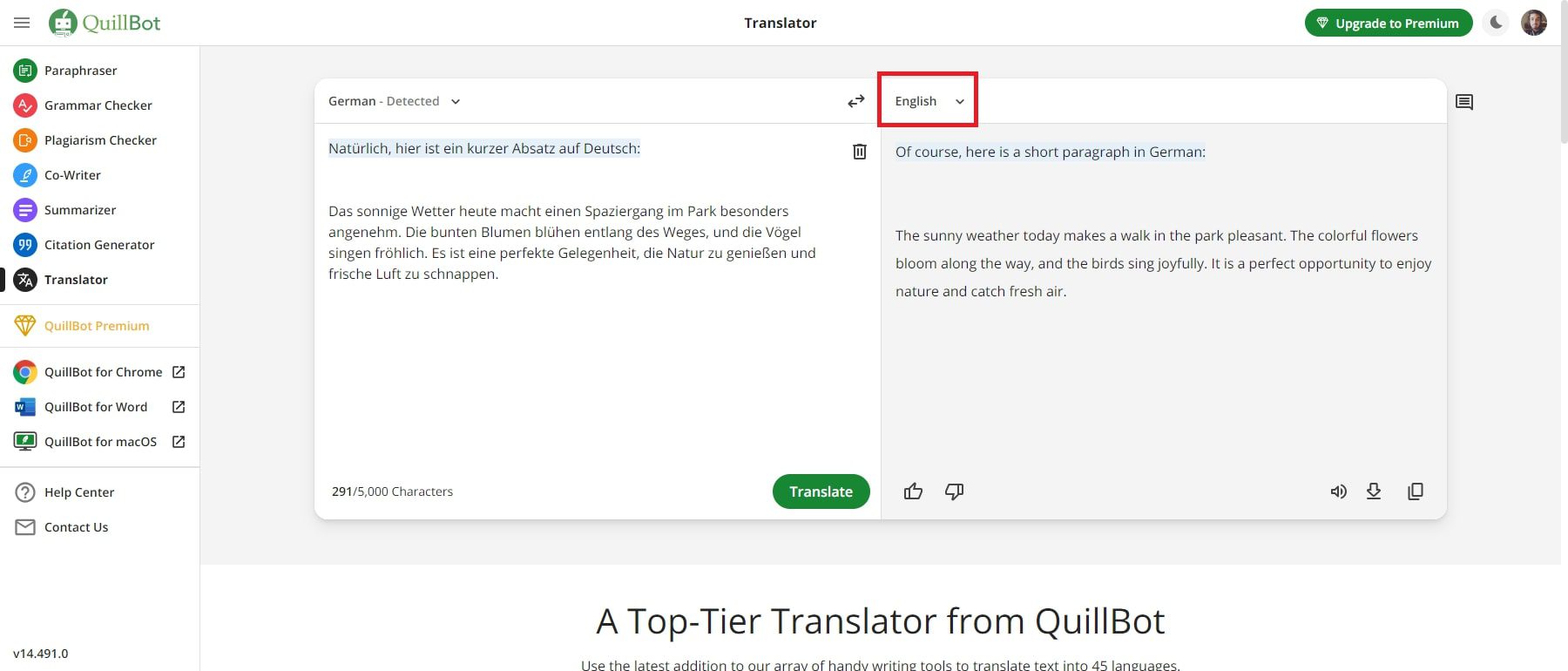
7. Quillbot Extensions
The tool offers three convenient extensions and applications to enhance your writing experience across different platforms.
QuillBot Chrome Extension
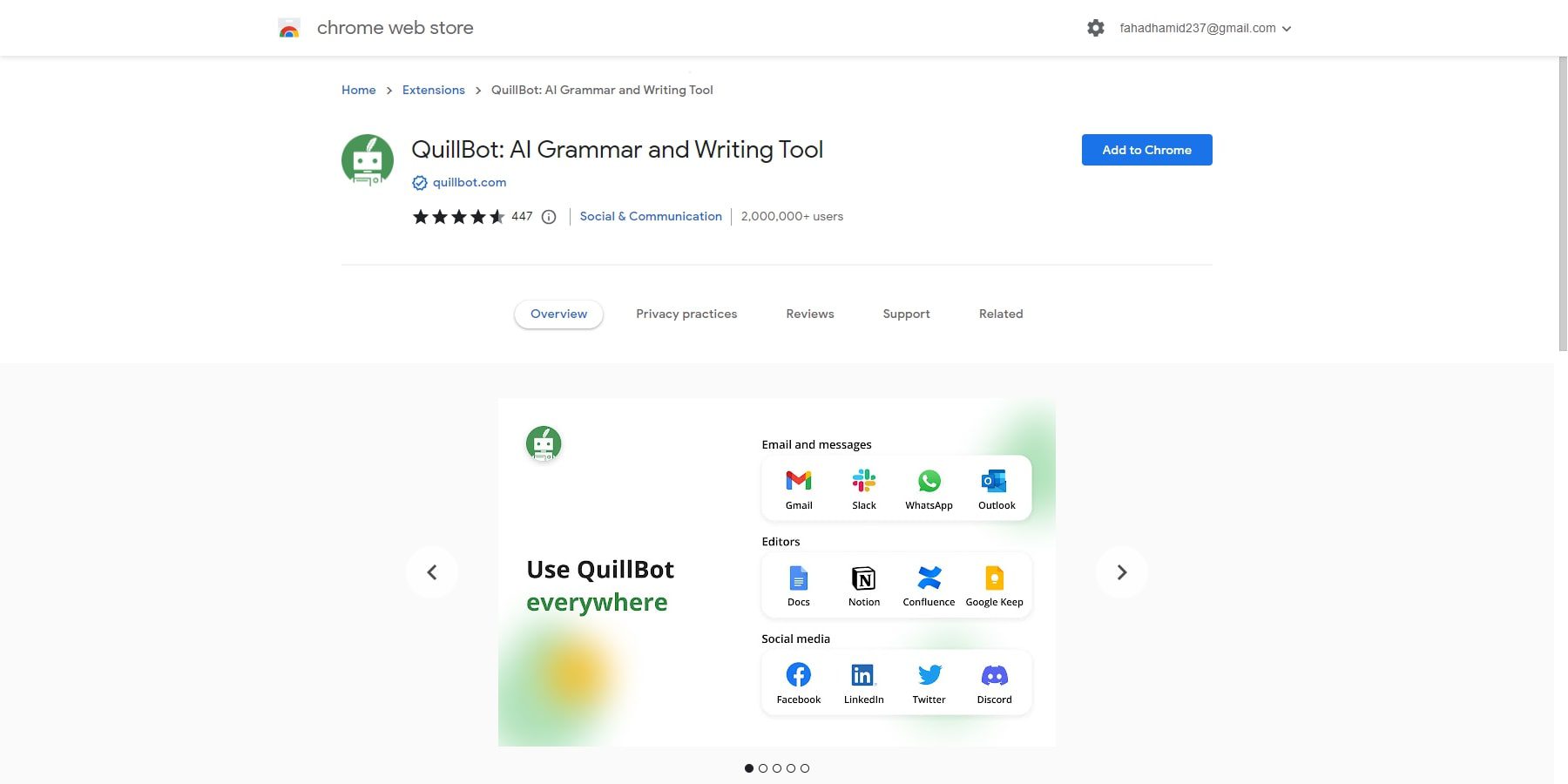
The QuillBot Google Chrome extension is a valuable tool for online writing. It seamlessly integrates with your web browsing, allowing you to check grammar, paraphrase, and summarize online documents (Google Docs), emails, and social media posts. Moreover, it ensures your writing is polished and error-free across the internet.
QuillBot for Word

If you’re working offline in Microsoft Word, this extension empowers you to access the full capabilities of QuillBot. It assists you in crafting high-quality documents, reports, and essays, ensuring your writing is clear and concise, even when you’re not connected to the internet.
QuillBot for macOS

For Mac users, QuillBot offers a browser-free desktop application. This standalone tool simplifies the writing process, providing a smooth and efficient writing experience on your macOS device. Moreover, it’s perfect for those who prefer a dedicated desktop application for their writing needs.
QuillBot AI Pricing and Plans Review
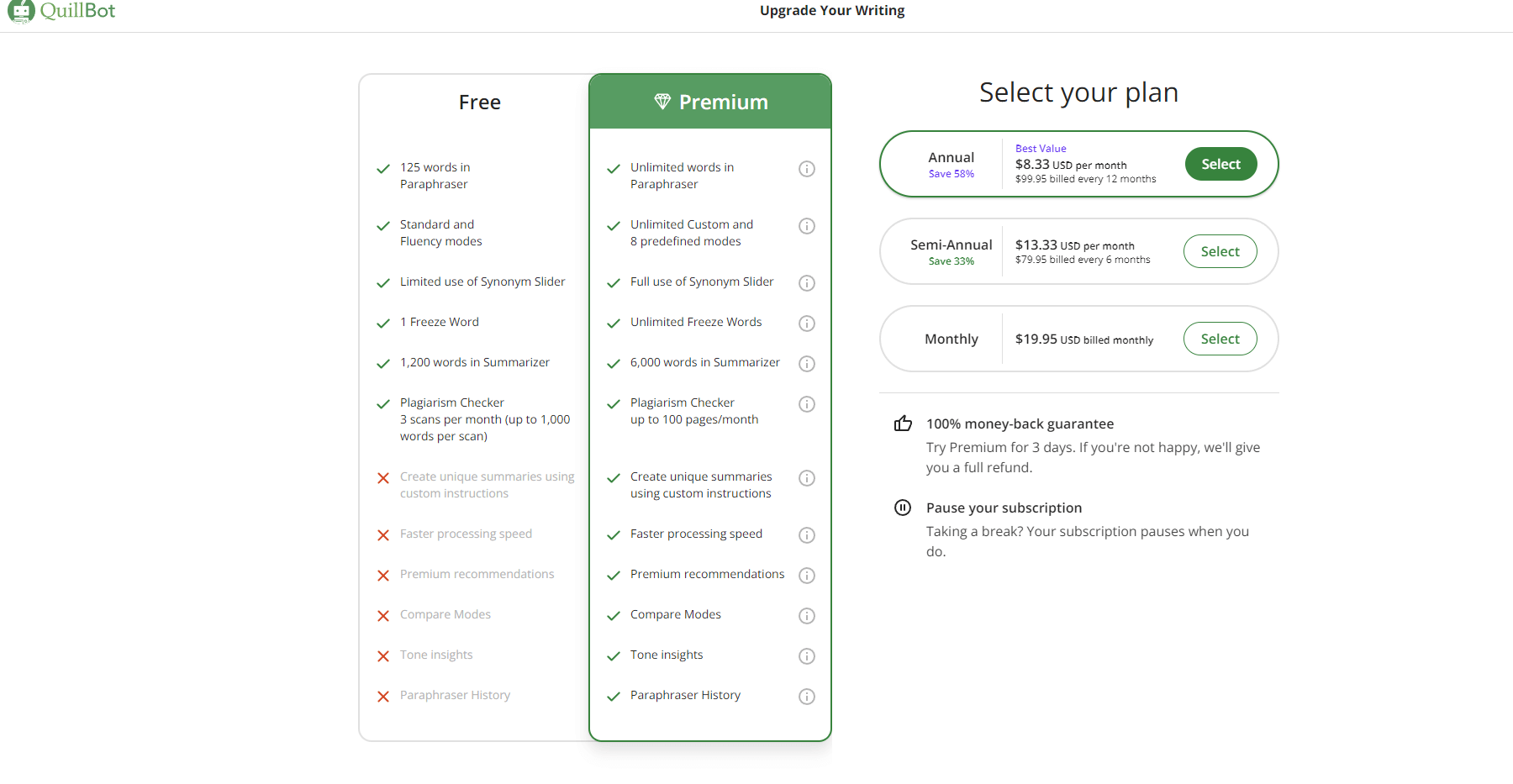
QuillBot AI provides three different pricing options to suit different needs and budgets.
The Basic (Free) Plan allows you to experiment with the tool before attaining its subscription. With it, you can paraphrase 125 words. It provides Standard and Fluency modes with limited use of the Synonym Slider. Moreover, you can summarize up to 1,200 words through the Summarizer mode.
The premium version of QuillBot AI allows unlimited words for the Parphraser, more writing style modes, and up to 6,000 words in the Summarizer. It also provides access to Plagiarism Checker, Paraphraser History, and Compare Modes.
You have the choice of three different payment plans for premium. The Annual Plan costs $8.33 monthly, with $99.95 billed every 12 months. The Semi-Annual Plan costs $13.33 monthly, with $79.95 billed every six months. The Monthly Plan costs $19.95 per month. By subscribing to either of these premium subscriptions, you can paraphrase unlimited words in Paraphraser. The Summarizer will allow you to summarize up to 6,000 words, and you can fully use the Synonym Slider.
Pros and Cons of QuillBot AI
As we delve deeper into our comprehensive review of QuillBot AI, it becomes imperative to assess the advantages and disadvantages of this sophisticated language processing tool. While this tool boasts various features and capabilities, no technology is without its strengths and weaknesses.
Pros of Using QuillBot AI
- A free plan is available, and there’s no need to sign up.
- There is a refund policy in place.
- Extensions for Microsoft Word, Google Chrome, and macOS are readily available.
- You can access a free Language Translator.
- The option to upgrade makes it very affordable to access additional features.
- An app for content summarization is available for free.
- Additionally, there is a free Grammar Checker app provided.
Cons of Using QuillBot AI
- Only two writing modes are available for free.
- OpenAI GPT AI writing is unavailable.
- There is no AI content detection feature.
- Manual intervention is usually required.
- Both free and paid plans have character limitations in place
How QuillBot Compares to Other Similar Tools
QuillBot AI offers valuable features for text enhancement, including effective paraphrasing and translation. Its free plan is a budget-friendly option, making it accessible to a broad audience. When compared to Grammarly , QuillBot outshines Grammarly’s ability to rephrase content. However, Quillbot’s grammar-checking capabilities fall short of Grammarly’s robust editing features.
Tools like Copy.ai and Rytr AI may offer more comprehensive solutions for advanced AI content generation than QuillBot. These alternatives excel in generating content from scratch, making them suitable for various writing needs.
Regarding accessibility, QuillBot stands out with extensions for Microsoft Word, Google Chrome, and macOS. This enhances its usability and integration into daily writing tasks. It also eliminates the language barrier, whereas Grammarly, Copy.ai, and Rytr AI primarily focus on English.
Ultimately, choosing these tools depends on your specific requirements and budget. QuillBot is a reliable option for text enhancement, while other tools may be better suited for advanced AI content generation and comprehensive grammar checking.
Should You Use QuillBot? (The Verdict)
QuillBot AI offers undeniable value as an AI writing assistant for various teams and individuals. Need an alternative version of your original article? QuillBot can generate a new and improved version swiftly. It is handy for optimizing blog posts and other content, outperforming many free and paid AI rewriter tools . Its ability to paraphrase content significantly reduces plagiarism risks for academic assignments and research papers. Although some detectors, like Originality.ai , may still recognize QuillBot paraphrased content in some cases. No AI content generator is 100% human. That said, thanks to its versatility and proficiency, QuillBot is a worthwhile asset for writers, students, and content creators.
Looking for more? Check out our list of top AI writing tools . And for all aspiring writers, check out these AI story generators . You can also explore more of the best overall AI tools you can use to boost your productivity in various ways .
Frequently Asked Questions (FAQs)
Here are some common questions that may help you decide if QuillBot is right for you.
What is QuillBot?
Can quillbot be detected, how much does quillbot premium cost, how can quillbot be used as a paraphrasing tool, how can quillbot be used as a summarizer.

Get Started With QuillBot AI!
Explore plans, pricing and features. Click here to get started. 👇
Explore plans, pricing and features here. 👇
By fahad hamid.
Fahad enjoys writing about a diverse range of topics, from business and marketing to design. Alongside this, he balances his love for tennis, showing skill both on the page and on the court.
Explore Divi, The Most Popular WordPress Theme In The World And The Ultimate Page Builder

Check Out These Related Posts

- 6 Easiest Website Builders for Beginners in 2024 (Compared)
Posted on June 27, 2024 in Business
These days, having an online presence is a must. Without a website, you might as well be invisible on the internet. But if you’re not tech-savvy, the thought of creating and designing a website can be pretty intimidating. CSS, HTML, and coding can seem like a foreign language. You’ve...

- Divi vs. GeneratePress: Which WordPress Theme Wins in 2024?
Posted on June 26, 2024 in WordPress
As website owners and developers strive to create visually appealing and high-performing websites, two themes have become prominent: Divi and GeneratePress. These themes offer top-notch features and customization options. This post compares Divi vs. GeneratePress in a head-to-head battle of two of...

BigCommerce vs. Shopify for Online Stores: Who Wins in 2024?
Posted on June 13, 2024 in Business
Are you excited to launch your business venture to the online world but are struggling to identify the best eCommerce platforms? You may have heard of Shopify and Bigcommerce and want to see which better suits your needs. They are two of the most prominent names in the eCommerce industry. With...
Where did you get that annual price? I would love to get it. When I visited the site the price was twice as much ($99.95) if I paid the full year in advance.
Hi, Carlos. The pricing must have changed since writing the post. I have updated the article. Thanks for bringing it to our attention.
Carlos – for me, it’s showing as: USD Annual Save 58% $4.17 USD per month $49.95 billed every 12 months
Leave A Reply Cancel reply
- Recent Posts
- How to Make a Directory Website with WordPress (2024)
- Get a Free Eatery Layout Pack For Divi
- How to Choose a WordPress Theme in 2024 (9 Key Factors)
- Divi Resources
- Theme Releases
- Tips & Tricks
974,872 Customers Are Already Building Amazing Websites With Divi. Join The Most Empowered WordPress Community On The Web
We offer a 30 Day Money Back Guarantee, so joining is Risk-Free!
Divi Features
- All Features Explore Divi
- Divi Modules
- Divi Layouts
- No-Code Builder
- Ecommerce Websites
- Theme Builder
- Marketing Platform
- Speed & Performance
- Premium Support
- Divi Marketplace
- Divi AI Brand New!
- Divi Hosting
- Extra Theme
- Bloom Plugin
- Monarch Plugin
- Plans & Pricing Get Divi Today
- Documentation
- Help Articles & FAQ
- 24/7 Support
- Developer Docs
- System Status
- Product Updates
- Best Plugins
- Best Hosting
- Divi Meetups
- Divi Facebook Group
- Divi Examples
- Divi Integrations
- Divi Reviews
- Community Forum
- Affiliate Program
- Terms of Service
- Privacy Policy
Copyright © 2024 Elegant Themes ®
- Plagiarism Checker
- Paraphrasing
- Essay Generator
- Image To Text
Paraphrase Tool
Paraphrase your content by the paraphrase tool of Prepostseo to improve its overall quality.
Table of Contents
Paraphrasing Tool
Paraphrase Tool by Prepostseo is an online paraphraser that can help quickly rephrase your essays, articles, blogs, etc., without changing the actual meaning. Our paraphrasing tool uses advanced AI and large language models to accurately paraphrase your content into a fresh, more engaging, and plagiarism-free one.
What is Paraphrasing?
Paraphrasing refers to the process of expressing existing content in your own unique words and sentences, without altering the original meaning.
Paraphrasing is mainly done by using the below techniques;
Replacing original words with their suitable synonyms.
Changing sentence structures.
Altering the tone, tense, or voice of sentences in the original content.
And so on…
How to Use the Prepostseo Paraphrase Tool?
Our paraphrase online tool has a simple interface, you just follow these steps to paraphrase your content:
Enter the text that you want to rephrase into the input box of the paraphrasing tool.
Pick the “ Paraphrasing Mode ” such as; Standard, Academic, Fluency, etc., that matches your requirements.
Click the " Paraphrase ” button to start our paraphrase tool.
The paraphrase generator tool will quickly rephrase your content into a new one and highlight changes.
Review the changed text and “ Copy to Clipboard ” or “ Download ” it.
More From Forbes
Why Recurring Revenue Is Your Business's Secret Weapon
- Share to Facebook
- Share to Twitter
- Share to Linkedin
Starting and sustaining a small business can often feel like riding a perpetual struggle bus. The challenges of cash flow , customer acquisition, and operational efficiency can overwhelm even the most passionate entrepreneurs.
One effective strategy to stabilize your business and achieve sustainable growth is by adopting a recurring revenue model . This approach not only offers predictable income but also fosters long-term customer relationships and enhances the overall value of your business.
The recurring revenue model offers significant financial stability in your business by providing a predictable and consistent income stream. Unlike traditional one-time sales, which can be sporadic and unpredictable, recurring revenue ensures a steady flow of cash over time. This stability allows you to better plan and forecast finances, manage expenses effectively, and invest in growth initiatives with greater confidence.
Retaining customers who subscribe to your recurring services or products reduces the need for constant customer acquisition efforts, further lowering costs and enhancing overall profitability. Adopting a recurring revenue model not only stabilizes your business's financial health but also positions it for sustainable growth and resilience in fluctuating market conditions.
Here’s how you can implement and leverage a recurring revenue model to get your small business on track:
UFC 303 Results: UFC Rising Star Scores Amazing 19-Second KO
Black people’s responses to trump’s notion of ‘black jobs’, apple’s vision pro is amazing but nobody wants one, understanding recurring revenue.
Recurring revenue is income that a business can count on receiving at regular intervals in the future. Unlike one-time sales, which are transactional and often unpredictable, recurring revenue models establish ongoing relationships with customers who pay on a recurring basis—for example, subscriptions, memberships, or service contracts.
Steps to Implement a Recurring Revenue Model
1. identify your offerings.
Determine which products or services in your business can be structured into a recurring model. This could include subscription boxes, maintenance contracts, software licenses, or even exclusive access to content or events.
2. Define Your Pricing Strategy
Set competitive yet sustainable pricing that encourages customers to commit to recurring payments. Consider offering different tiers or packages to cater to varying customer needs and budgets.
3. Build a Reliable Billing System
Invest in a reliable billing and payment processing system that automates recurring payments. This reduces administrative burden and ensures timely revenue collection.
4. Focus on Customer Retention
Retaining existing customers is more cost-effective than acquiring new ones. Provide exceptional customer service, continuously improve your offerings based on customer feedback, and incentivize long-term commitments through loyalty programs or discounts.
5. Market Your Subscription Model
Clearly communicate the benefits of your recurring revenue offerings through targeted marketing campaigns. Highlight how subscribing saves money, adds convenience, or enhances the customer experience.
Keeping recurring revenue clients happy and retaining their loyalty involves several key factors. You need to consistently deliver high-quality products or services that meet or exceed their expectations. Regularly engaging with clients to gather feedback and promptly addressing any issues or concerns demonstrates a commitment to their satisfaction. Building strong relationships through personalized communication and demonstrating appreciation for their loyalty, such as offering exclusive benefits or discounts, enhances client retention.
By maintaining transparent pricing and policies you will foster trust and reduce friction in the client relationship. You must continuously innovate and evolve your offerings based on client needs and market trends to ensure ongoing relevance and reinforce the value they receive from subscribing to your services or products.
By prioritizing these factors, businesses can create a positive experience that encourages recurring revenue clients to stay long-term, contributing to stable and sustainable business growth .
Benefits of a Recurring Revenue Model
- Predictable Cash Flow : Stable, recurring revenue stream reduces the uncertainty of cash flow, making it easier to plan and invest in business growth.
- Customer Loyalty and Engagement : Subscribers are more likely to remain loyal and engage with your brand over time, providing valuable feedback and referrals.
- Increased Business Valuation : Businesses with predictable recurring revenue are often valued higher than those reliant on sporadic sales, making them more attractive to investors or potential buyers.
The bottom line is that embracing a recurring revenue model can transform your small business from surviving to thriving. By shifting from one-off transactions to ongoing relationships with customers, you not only enhance financial stability but also build a foundation for sustainable growth and long-term success. Take proactive steps today to implement and optimize your recurring revenue strategy, and watch your business get off the struggle bus and onto a path of stability and prosperity.
Incorporating a recurring revenue model isn’t just about financial stability — it’s about creating lasting value for your customers and your business.
Melissa Houston, CPA is the author of Cash Confident: An Entrepreneur’s Guide to Creating a Profitable Business and the founder of She Means Profit . As a Business Strategist for small business owners, Melissa helps women making mid-career shifts, to launch their dream businesses, and I also guide established business owners to grow their businesses to more profitably.
The opinions expressed in this article are not intended to replace any professional or expert accounting and/or tax advice whatsoever.

- Editorial Standards
- Reprints & Permissions
Join The Conversation
One Community. Many Voices. Create a free account to share your thoughts.
Forbes Community Guidelines
Our community is about connecting people through open and thoughtful conversations. We want our readers to share their views and exchange ideas and facts in a safe space.
In order to do so, please follow the posting rules in our site's Terms of Service. We've summarized some of those key rules below. Simply put, keep it civil.
Your post will be rejected if we notice that it seems to contain:
- False or intentionally out-of-context or misleading information
- Insults, profanity, incoherent, obscene or inflammatory language or threats of any kind
- Attacks on the identity of other commenters or the article's author
- Content that otherwise violates our site's terms.
User accounts will be blocked if we notice or believe that users are engaged in:
- Continuous attempts to re-post comments that have been previously moderated/rejected
- Racist, sexist, homophobic or other discriminatory comments
- Attempts or tactics that put the site security at risk
- Actions that otherwise violate our site's terms.
So, how can you be a power user?
- Stay on topic and share your insights
- Feel free to be clear and thoughtful to get your point across
- ‘Like’ or ‘Dislike’ to show your point of view.
- Protect your community.
- Use the report tool to alert us when someone breaks the rules.
Thanks for reading our community guidelines. Please read the full list of posting rules found in our site's Terms of Service.
- The Magazine
- Stay Curious
- The Sciences
- Environment
- Planet Earth
Making Art Is A Uniquely Human Act, And One That Provides A Wellspring Of Health Benefits
The act of creating art serves as exercise for the brain and is integral to physical and mental health..

When you think about the word “art,” what comes to mind? A child’s artwork pinned to the fridge? A favorite artist whose work always inspires? Abstract art that is hard to understand?
Each of these assumes that making art is something that other people do, such as children or “those with talent.”
However, as I explain in my book “ The Expressive Instinct ,” art is intrinsic to human evolution and history. Just as sports or workouts exercise the body, creating art exercises the imagination and is essential to mental as well as physical well-being.
I am a professor of art therapy who studies how creative self-expression affects physical and emotional health. In our clinical research studies, my colleagues and I are finding that any form of creative self-expression – including drawing, painting, fiber arts, woodworking or photography – can reduce stress , improve mood and increase self-confidence.
As a sickly child who needed to stay home from school a lot, I found that making art helped me cope. Today, creating art is my sanctuary. I use it as a sounding board to better understand myself and a way to recharge and learn from the challenges of life.
The Uniquely Human Attribute of Creativity
Although everyone has their own concept of what defines art, one thing is universally true: Creativity is a defining feature of the human species.
How so? Well, human brains are not computers processing data. They are biological prediction machines that perceive the environment through memories and the senses, with the capacity to use that information to imagine plausible future scenarios.
These inherent predictive and imaginative capacities are the wellspring of humanity’s abilities to survive and thrive – because self-expression is a safety valve that helps us cope with uncertainty. No one truly knows the future; they must live each day not sure of what will happen tomorrow. Art can help us all practice this imaginative muscle in a useful way.
In our study examining brain activity while using virtual reality tools to create 3-D digital artwork, my team demonstrated that creative expression is a natural state of being . The brain naturally uses fewer cognitive resources to be expressive and creative, compared with the brain power needed to do a rote task that requires conscious effort.
Seemingly ordinary everyday activities can provide opportunities to tap into one’s natural creativity and imagination: whipping up a meal from leftovers, figuring out an alternate route to work, dancing a little jig in response to hearing a song, or planting and tending a garden.
We have repeatedly found in our studies that even a single session of real and honest self-expression can improve self-confidence and reduce feelings of stress , anxiety and burnout .
This is partly because creativity activates reward pathways in the brain. Using our hands and bodies to express ourselves activates dopamine pathways and helps us feel good. Dopamine is a neural messenger that is associated with feeling a sense of hope, accomplishment or reward . Our brains are wired to secrete feel-good hormones whenever we move , create something or engage in any type of expressive activity.
Tapping into the creative resources within is one of the most underrated seeds of well-being in the world.
By comparison, bottling up or denying these feelings can cause distress , anxiety and fear because we have not processed and expressed them. This is probably one of the reasons why every community around the world has its own creative and expressive practices. Even our ancestors in Indigenous communities all around the world intuitively knew that self-expression was essential to emotional health and social connection.
Being unable to share our lives, keeping secrets and feeling isolated and lonely tend to worsen our health . To our brains, social isolation feels like a chronic disease because it interprets this loneliness and inability to express as a threat to survival.
Since creative expression can engage the senses, it can also be a body workout: a sensual as well as emotional and cognitive experience. Being active in expression – be it art, music, dance, drama, writing, culinary arts or working with nature – imparts a sense of confidence and hope that challenges can be navigated and overcome .
The Role of Art Therapy
Given the integral role of art in our lives, it makes sense that making art can help people manage transitions, adversity and trauma, such as the stresses of puberty, the death of a loved one or experiencing a serious illness .
According to a global study, 1 in 2 people will experience a mental-health-related challenge in their lifetime , whether from life’s challenges, genetic predispositions or a combination of the two.
This is where art therapy can come in. Art therapy is a regulated mental health profession in which clinical psychotherapists with extensive clinical training offer psychotherapy to patients with diagnosed mental health needs.
The origins of art therapy go back to attempts to treat soldiers struggling with post-traumatic stress during the 20th century’s two world wars. Today, there is evidence that traumatic experiences tend to be stored as sounds, images, and physical sensations in the brain. When someone lacks the words to process these experiences through traditional talk therapy, art therapy can provide an indirect way to express and externalize those feelings and memories.
The process of making art can help people process feelings that they aren’t able to put into words.
One of art therapy’s unique strengths is that it provides nonverbal ways of communicating, processing and eventually managing the symptoms of post-traumatic stress disorder, or PTSD. In fact, in a recent study, my team has found that a personal history of trauma is related to how people react to evocative images . Images of distress and pain resonate with us when we have known similar kinds of distress ourselves. This implies that our life stories make us sensitized to distress in others and even personalize it more.
Creative self-expression is especially relevant in coping with trauma because it provides an outlet through which a person can regain a sense of agency and control.
How to Bring Creativity into Daily Life
For those new to exploring art as a creative pursuit or for well-being reasons, engaging in creative activities begins with letting go of unrealistic expectations. Being creative isn’t about becoming a famous artist or even a mediocre one. It is about allowing ourselves to flex the creative muscle that we all have and enjoying all the sensory and emotional aspects of imagining.
Next, think about activities that made you feel free to explore when you were a child. Did you like singing, playing in the outdoors, dancing, making up pretend plays, or writing little tales? Allow yourself to indulge in any and all of these creative pursuits that made you feel relaxed and joyful.
A cultural tradition , tinkering with electronics, making a gift for someone or simply paying attention to everyday beauty – any of these can be a creative activity. And just like any muscle, the more you exercise it, the stronger it becomes. Over time, you will notice yourself getting more confident and adventurous in your creative practices.
Whatever it is, make time for this creative pursuit every week – which is possibly the hardest step of them all. If it seems “unimportant” compared with the demands of daily life, such as work or family, try thinking of it as another form of sustenance.
Remember that creativity is just as critical to human health as eating nutritious meals or getting exercise and good rest . So as the Latin saying goes: “Plene vivere.” Live fully.
Girija Kaimal is a Professor of Art Therapy Research at Drexel University. This article is republished from The Conversation under a Creative Commons license. Read the original article .
- brain structure & function
- mental health
Already a subscriber?
Register or Log In

Keep reading for as low as $1.99!
Sign up for our weekly science updates.
Save up to 40% off the cover price when you subscribe to Discover magazine.
RePhraseIt: Paraphrasing 2024 4+
Ai rephraser paraphrasing tool, oguzhan ozturk.
- Offers In-App Purchases
iPhone Screenshots
Description.
RephraseIt - Your Ultimate Paraphrasing Tool Transform your writing with RephraseIt, the ultimate app for paraphrasing and improving your text. Whether you're a student, writer, or professional, RephraseIt helps you enhance your content effortlessly. Our advanced algorithms and diverse paraphrasing styles ensure that your text stands out with clarity and precision. Key Features: Diverse Paraphrasing Styles: Choose from Smooth, Formal, Fluency, Creative, Smart, Improver, Academic, Shorten, and Randomizer to fit your unique needs. Easy Text Input: Seamlessly enter or paste your text and get paraphrased results in seconds. Real-Time Word Count: Keep track of your remaining words and subscribe to get more when needed. Pro Subscription: Unlock unlimited words and enjoy the benefits of a premium user with our Pro subscription. User-Friendly Interface: Navigate easily with our intuitive design and focus on what matters most—your content. Why Choose RephraseIt? RephraseIt is designed to provide you with the best paraphrasing experience. Our app is equipped with the latest technology to ensure high-quality results every time. Whether you're paraphrasing an essay, article, or any other text, RephraseIt is your go-to tool for exceptional writing. Download RephraseIt Today! Enhance your writing, save time, and achieve excellence with RephraseIt. Download now and experience the power of effortless paraphrasing. Subscription Information: RephraseIt offers a Pro subscription that unlocks unlimited words and additional features. Subscriptions are available on a monthly or yearly basis. Payment will be charged to your iTunes account at confirmation of purchase. Your subscription automatically renews unless auto-renew is turned off at least 24 hours before the end of the current period. Manage your subscriptions and auto-renewal settings in your iTunes account settings. Privacy Policy & Terms of Use: Privacy Policy: https://docs.google.com/document/d/1u-iLJ7MJykHkUo-54hd9J718VxdHAtYOGwwQ2GHW0So/edit#heading=h.80xbyrbogtcj Terms of Use: https://www.apple.com/legal/internet-services/itunes/dev/stdeula/
Version 1.2.1
- Some bug fixes and new improvements have been made
App Privacy
The developer, Oguzhan Ozturk , indicated that the app’s privacy practices may include handling of data as described below. For more information, see the developer’s privacy policy .
Data Linked to You
The following data may be collected and linked to your identity:
Data Not Linked to You
The following data may be collected but it is not linked to your identity:
- Identifiers
Privacy practices may vary, for example, based on the features you use or your age. Learn More
Information
- Pro 100000 Words Monthly $4.99
- App Support
- Privacy Policy
More By This Developer
Stock Trading Tracker Journal
WeightD - Weight Tracking
You Might Also Like
pdfs split & combine pdfs
GPT Content Detector
PDF Merge - Document Sign PDF
App Launcher. Powered by COL
YES One App
AI Detector: Zero GPT

COMMENTS
Paraphrasing helps you acquire the capacity to evaluate and prioritize information, which is useful in education or professional life. ️ Improves Writing and Research Skills. 🎓 Encourages Academic Integrity. One of the most obvious benefits of paraphrasing is that it improves your writing and research skills.
By paraphrasing, you can curate credible and well-developed documents, and arguments. But there's more to paraphrasing than the final result, the process of paraphrasing engages your ability to learn actively, write well, and communicate creatively. Amirah Khan. March 22, 2022. Paraphrasing allows you to share another's ideas in your own words.
The Definition of Paraphrase. According to the Cambridge Online Dictionary, the definition of paraphrase is to write or say something using different words while maintaining the meaning. Paraphrasing is normally used to make sentences simpler, shorter, or clearer. When you restate someone else's ideas, opinions, or thoughts in your own words ...
One of the main benefits of paraphrasing is mastering the ability to present information from external sources in a way that is entirely your own. By restructuring the content and expressing it using your words, you create a distinct piece of writing that reflects your comprehension and interpretation of the original material. This not only ...
One benefit of paraphrasing is that it helps you process the author's ideas. When you have to rewrite the material in your own words, it makes you really think about the context and how it fits into your piece. If you want to really understand the material you're citing, try rewriting it. If you were to quote the same information, you would ...
Paraphrasing can help communicate an important idea in a passage or source without interrupting the flow of the essay. To eliminate less relevant information. Since paraphrasing is written using the author's own words, he or she can be more selective in what information from a passage should be included or omitted. To avoid plagiarism.
Paraphrasing is an essential writing tool for conveying meaning of core concepts and ideas while avoiding plagiarism. In this article, we'll cover exactly what paraphrasing is and isn't, the five step approach for effective paraphrasing and finally, the importance of paraphrasing beyond issues of plagiarism.
Paraphrasing is a powerful way to further understand a subject or idea for both the writer and reader or speaker and listener. Active listening and understanding are key components of efficient communication. Using this skill alleviates misunderstandings and prevents conflict.
Paraphrasing means 'to state something written or spoken in different words, especially in a shorter and simpler form to make the meaning clearer' (Cambridge Online Dictionary, 2022). Paraphrasing is 'a restating of someone else's thoughts or ideas in your own words. You must always cite your source when paraphrasing' (Pears & Shields ...
Using an AI paraphrasing tool can help improve your writing - and marketing. Read on for why and 15 recommended tools. ... There are lots of situations where you would benefit from these programs: AI paraphrasing tools can change posts that you don't like, whether they're made by humans or robots ... QuillBot is an all-in-one software that ...
Benefits of paraphrasing. Paraphrasing has some benefits that you can reap in aspects of your writing skills and learning abilities. Improves writing skills. Paraphrasing requires you to change the passages in your own words, which may help refurbish your writing skills. Rewriting or paraphrasing is essential in writing essays or research papers.
Paraphrasing is: A detailed restatement of a source's main ideas in your own words. Not your opinions or interpretations of those ideas. When incorporating a paraphrase into your writing, you must provide a citation, just as you would for a direct quotation. Even though you are writing in your own words, you are paraphrasing someone else's ideas.
To paraphrase in your paper using Plotnick's method above, look at your sources and try the following: Write down the basic point (s) you want to discuss on a notecard (in your own words). Take your notecard points and turn them into sentences when you write your essay. Add the reference for the source.
The benefits of paraphrasing are consistent, regardless of the AI tool you use in your writing process. ... Multilingual assistance is a huge asset if you speak more than one language. Many modern paraphrasing tools include translation in multiple languages because writers consider this to be a top-notch advantage. Thus, ...
By paraphrasing a text, a writer cuts down on the number of quotes in their work, making it easier to read. 7. Puts an Argument in Its Proper Place. You can set the stage for your ideas when you paraphrase. When you rework another author's words, you can guide the reader and frame your argument.
Top 5 Benefits of Paraphrasing. These are five benefits of paraphrasing listed below: 1. Paraphrasing Helps Lessening Copied Content. The biggest benefit of paraphrasing is lessening plagiarism chances. Plagiarism is copying and using the exact sentences or text in your content that already exists somewhere else.
Basics of Paraphrasing. A successful paraphrase is your own explanation or interpretation of another person's ideas. Paraphrasing in academic writing is an effective way to restate, condense, or clarify another author's ideas while also providing credibility to your own argument or analysis. While successful paraphrasing is essential for strong ...
Using paraphrasing is a way of completing the empathy circle - a way of letting them know that we see and hear them. Other Benefits of Paraphrasing. Paraphrasing also highlights issues by stating them more concisely. This is focusing down: it invites the client to go and delve deeper into part of what they have said.
Another important aspect of paraphrasing is its ability to simplify complex information. By utilizing this technique, you can easily refine your writing and make it more accessible to readers. Maximizing Time and Energy. Paraphrasing offers a valuable way to save time and energy in content creation. By investing time in outlining and planning ...
Paraphrasing is a writing technique often used when you want to put someone else's thoughts or ideas into your own words, while keeping the same meaning. People often use paraphrasing to: ️ avoid plagiarism , ️ make the complicated language easier to understand, or. ️ explain the ideas of someone else in a way that is easier to understand.
1 Paraphrasing Helps you Avoid Plagiarism. 2 Paraphrasing Lets you focus on Ideas Instead of Words. 3 Paraphrasing allows you to clarify your ideas. 4 Paraphrasing is a Way to Avoid Plagiarism without Extensive Research. 5 It Makes Your Writing Better. 6 It Prevents Plagiarism. 7 Speed and time.
Paraphrasing plagiarism happens when you write something like, "Sunlight helps our bodies make vitamin D," without citing the original paper. Even though the wording is different, the sentence structure and core idea are very similar, which is a form of improper paraphrasing. What is considered paraphrasing plagiarism?
What is one benefit of paraphrasing? One benefit is that paraphrasing sounds more natural. When you speak or write using someone else's words, it doesn't sound like you, and can be a little weird ...
The second alternative is correct (B). The paraphrase is a resource of textual interpretation that consists in the reformulation of a text, changing the original words and expressions, but maintaining the central idea of the information. Intertextuality is one of the main characteristics of paraphrase, because for it to exist, it is necessary to "link" with another text, which serves as an ...
What is QuillBot AI? QuillBot AI is a leading AI writing companion and paraphrasing software designed to help anyone elevate the quality of their writing. At its core, it functions as one of the best AI rewriter tools to edit, rephrase, and enhance content like a professional.. It presents various features, including grammar checking, plagiarism detection, and content summarization.
Paraphrase Tool by Prepostseo is an online paraphraser that can help quickly rephrase your essays, articles, blogs, etc., without changing the actual meaning. Our paraphrasing tool uses advanced AI and large language models to accurately paraphrase your content into a fresh, more engaging, and plagiarism-free one. What is Paraphrasing?
Benefits of a Recurring Revenue Model Predictable Cash Flow : Stable, recurring revenue stream reduces the uncertainty of cash flow, making it easier to plan and invest in business growth.
Given the integral role of art in our lives, it makes sense that making art can help people manage transitions, adversity and trauma, such as the stresses of puberty, the death of a loved one or experiencing a serious illness.. According to a global study, 1 in 2 people will experience a mental-health-related challenge in their lifetime, whether from life's challenges, genetic ...
What is Fusion Teams? A Fusion Team (Hub) is where projects can be stored. It is a cloud-based workspace that allows you to collaborate with others to work efficiently in one centralized place. To understand the benefits of Fusion Teams, see: "Why must I join a Fusion Team?" - The Advantages of Team Hubs in Fusion
Pro Subscription: Unlock unlimited words and enjoy the benefits of a premium user with our Pro subscription. User-Friendly Interface: Navigate easily with our intuitive design and focus on what matters most—your content. Why Choose RephraseIt? RephraseIt is designed to provide you with the best paraphrasing experience.